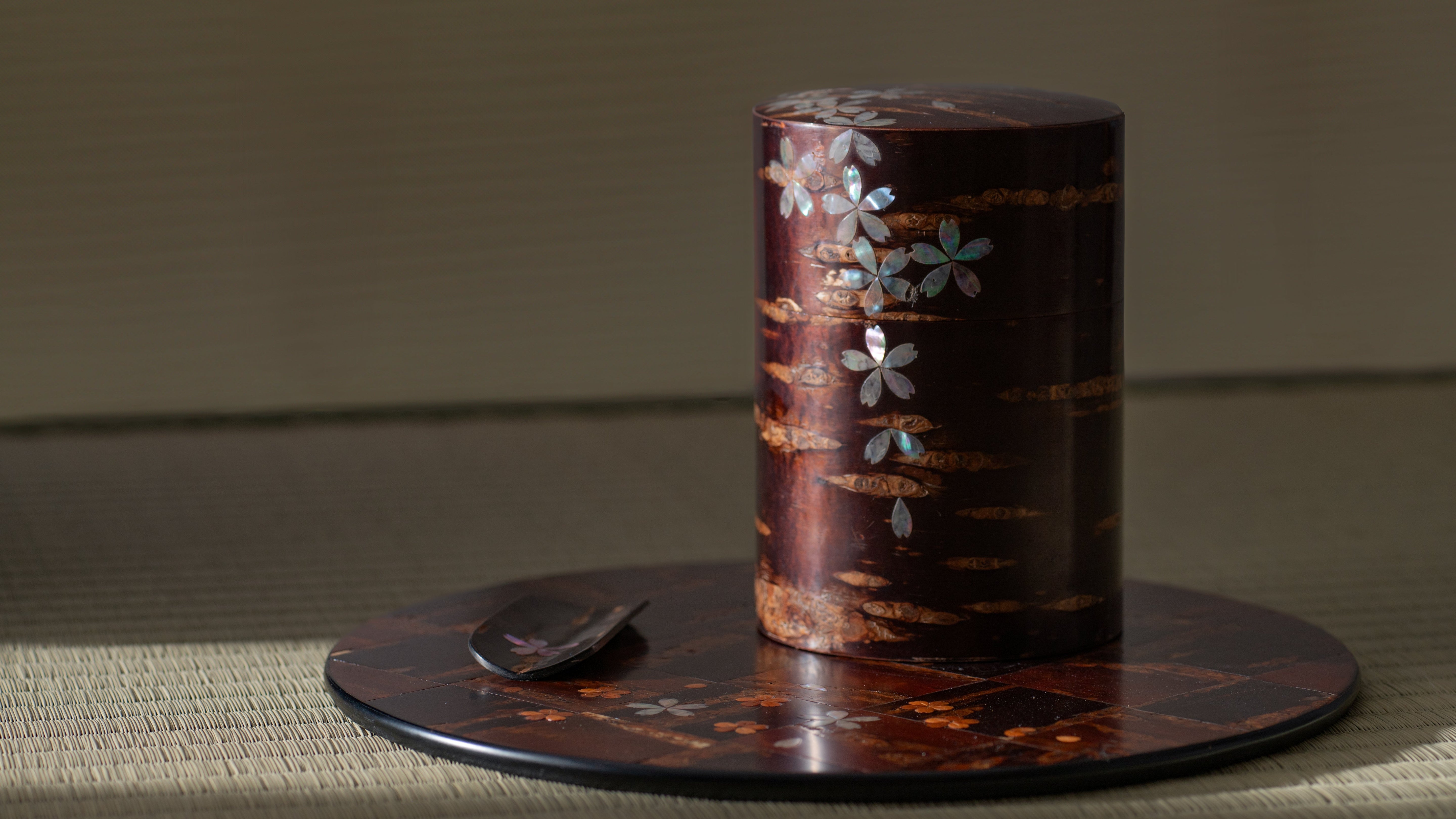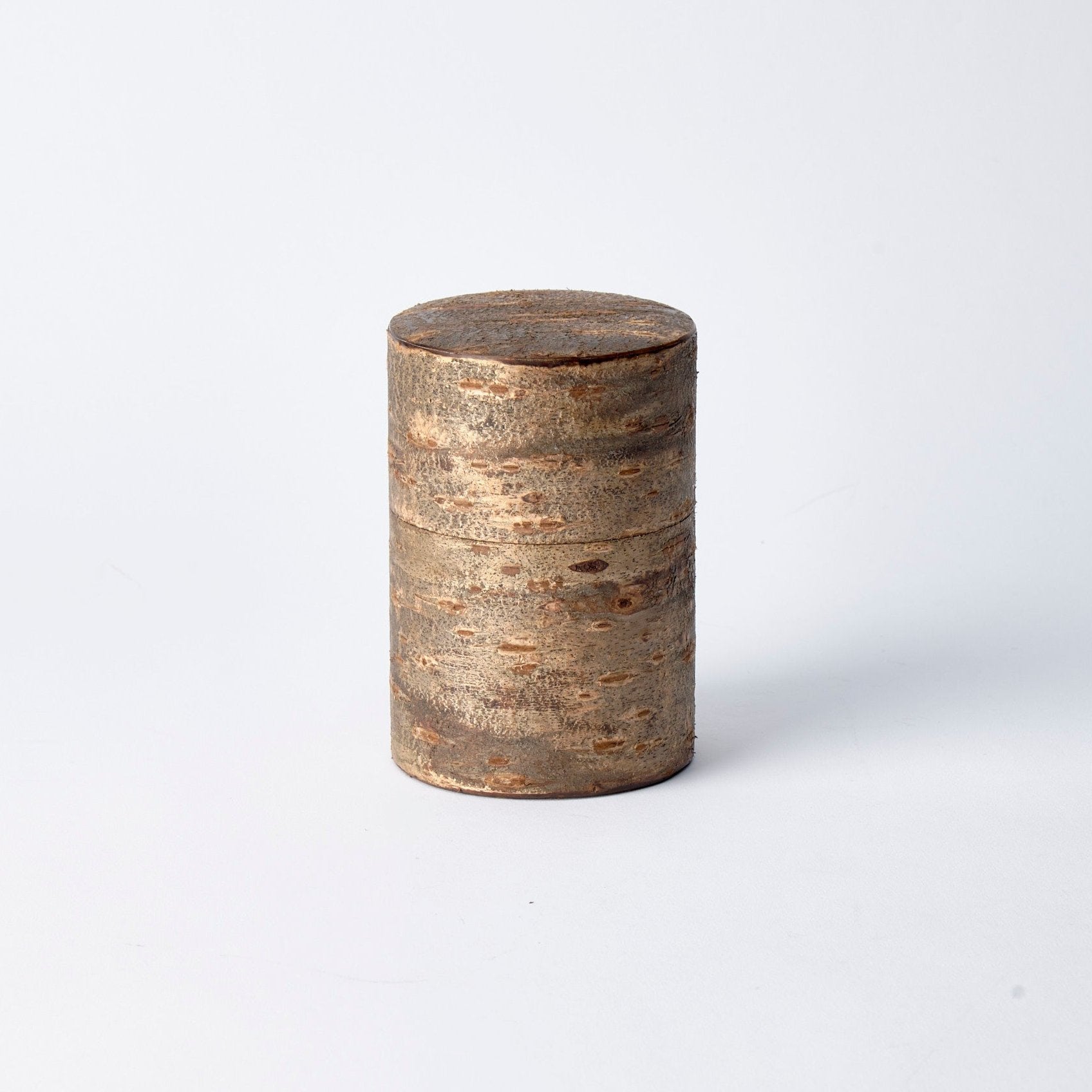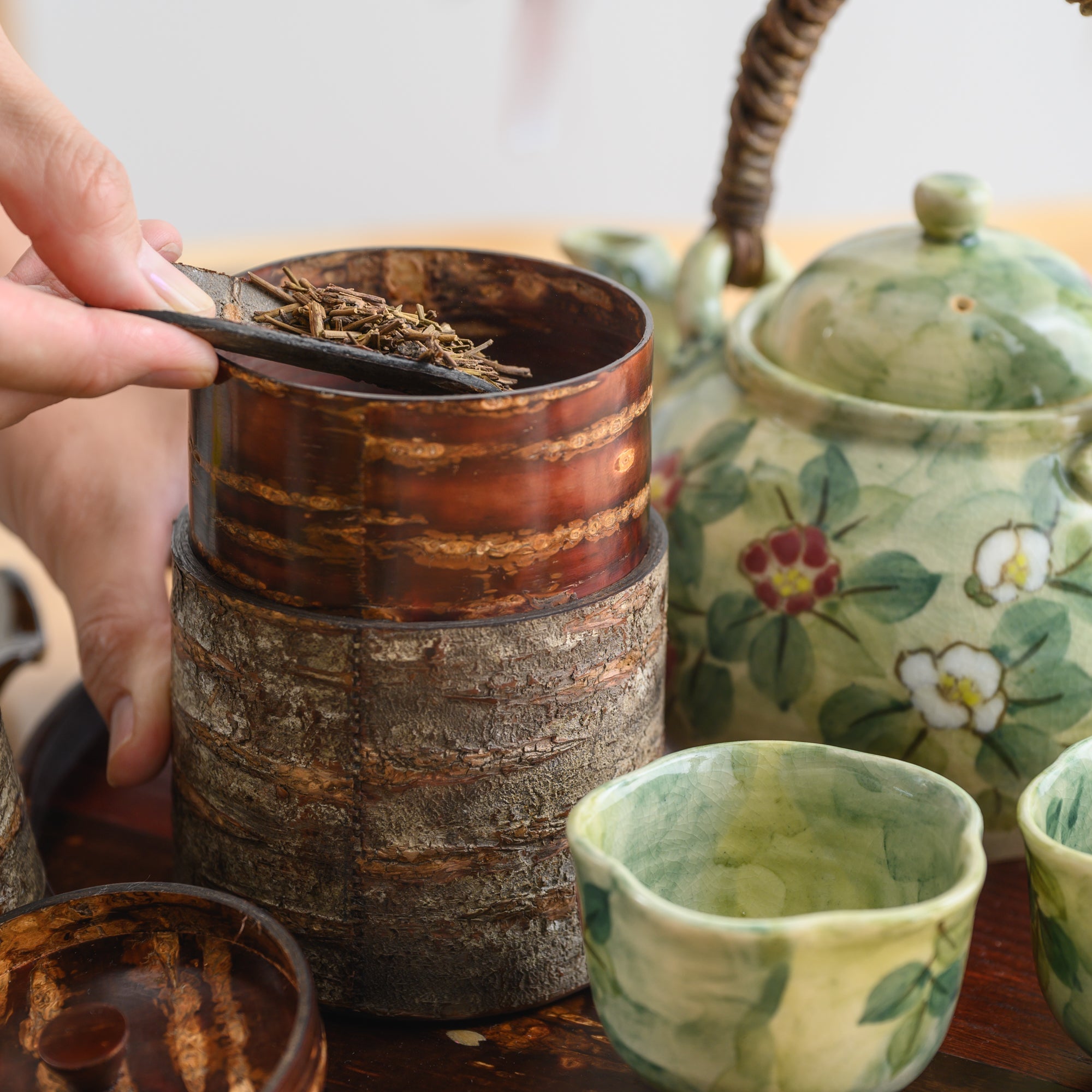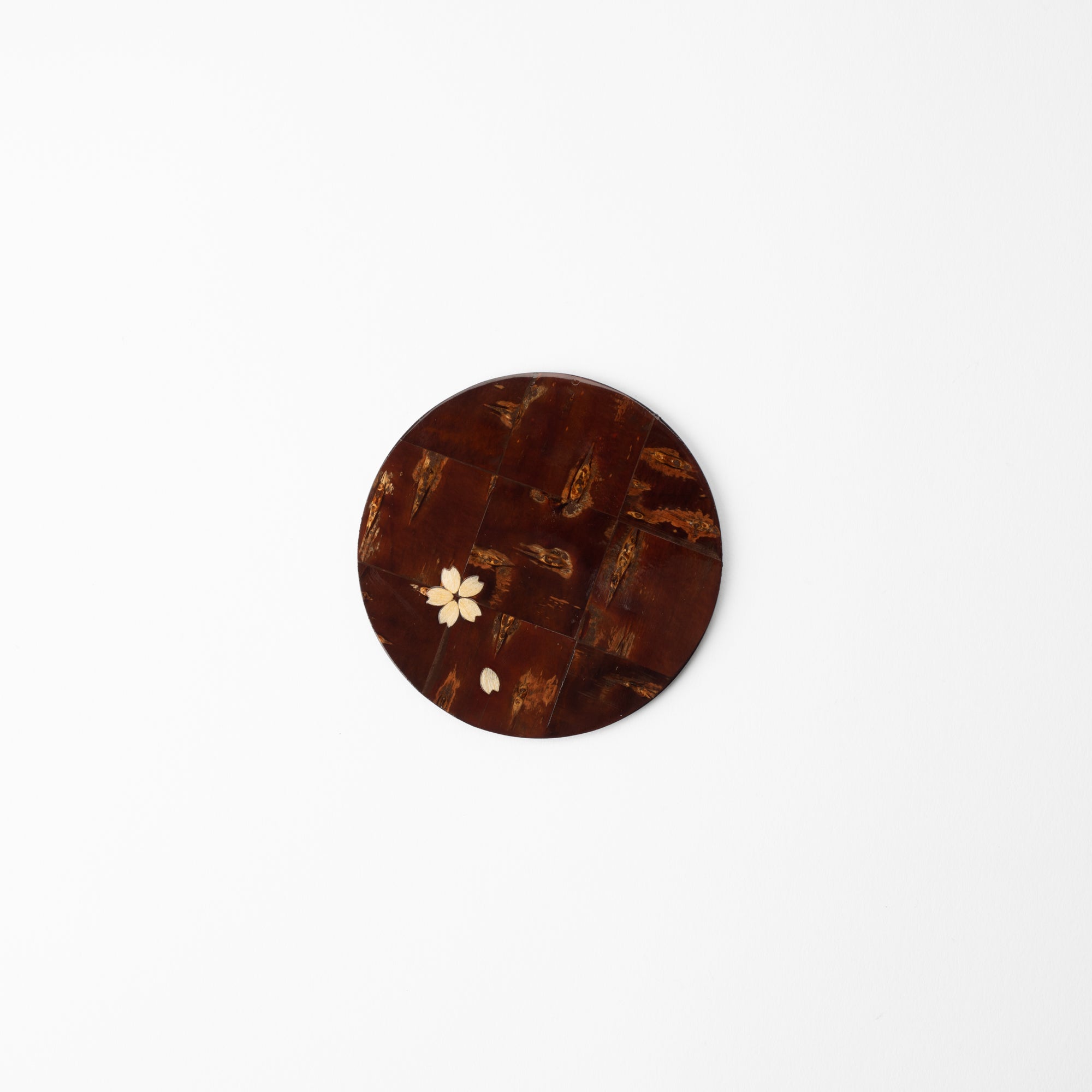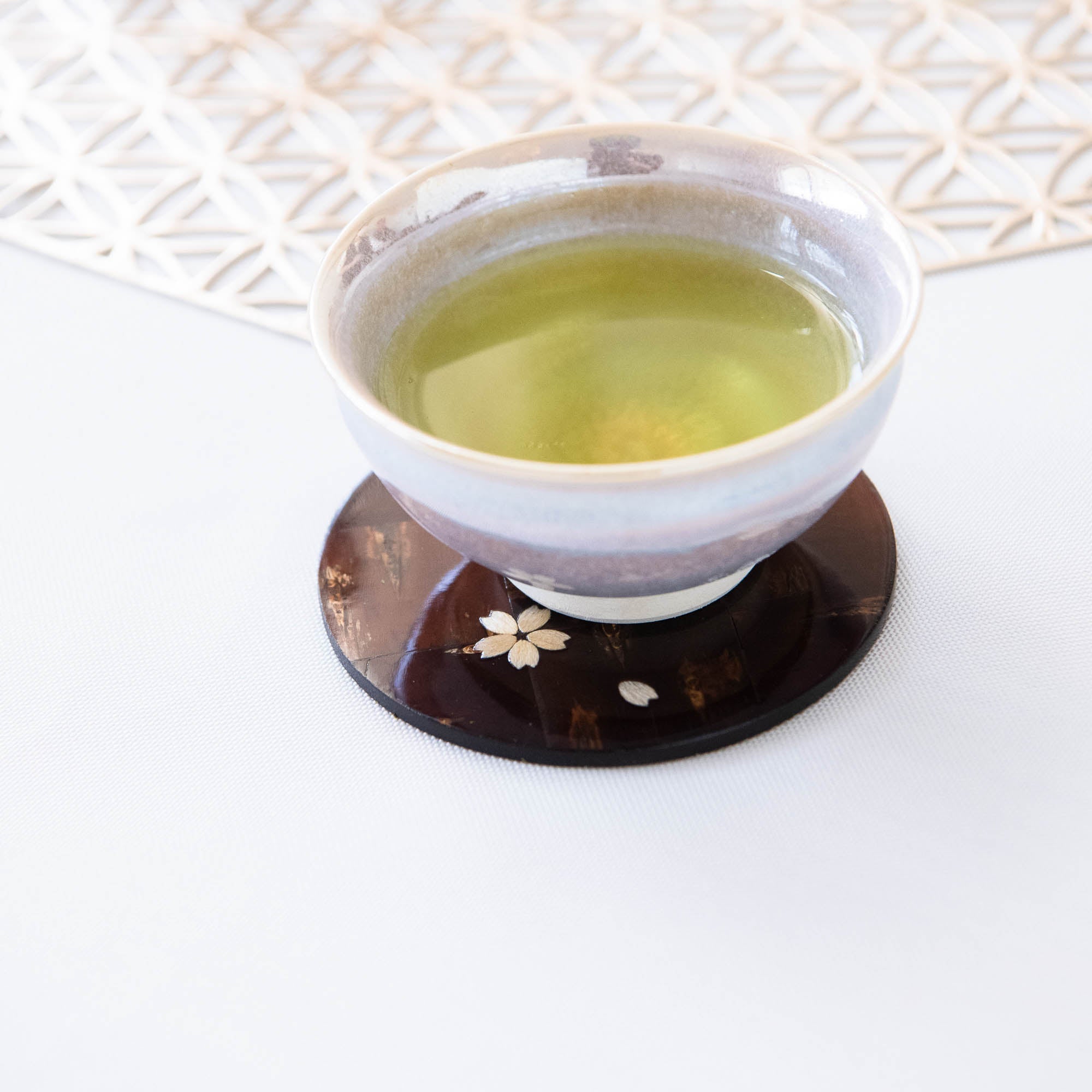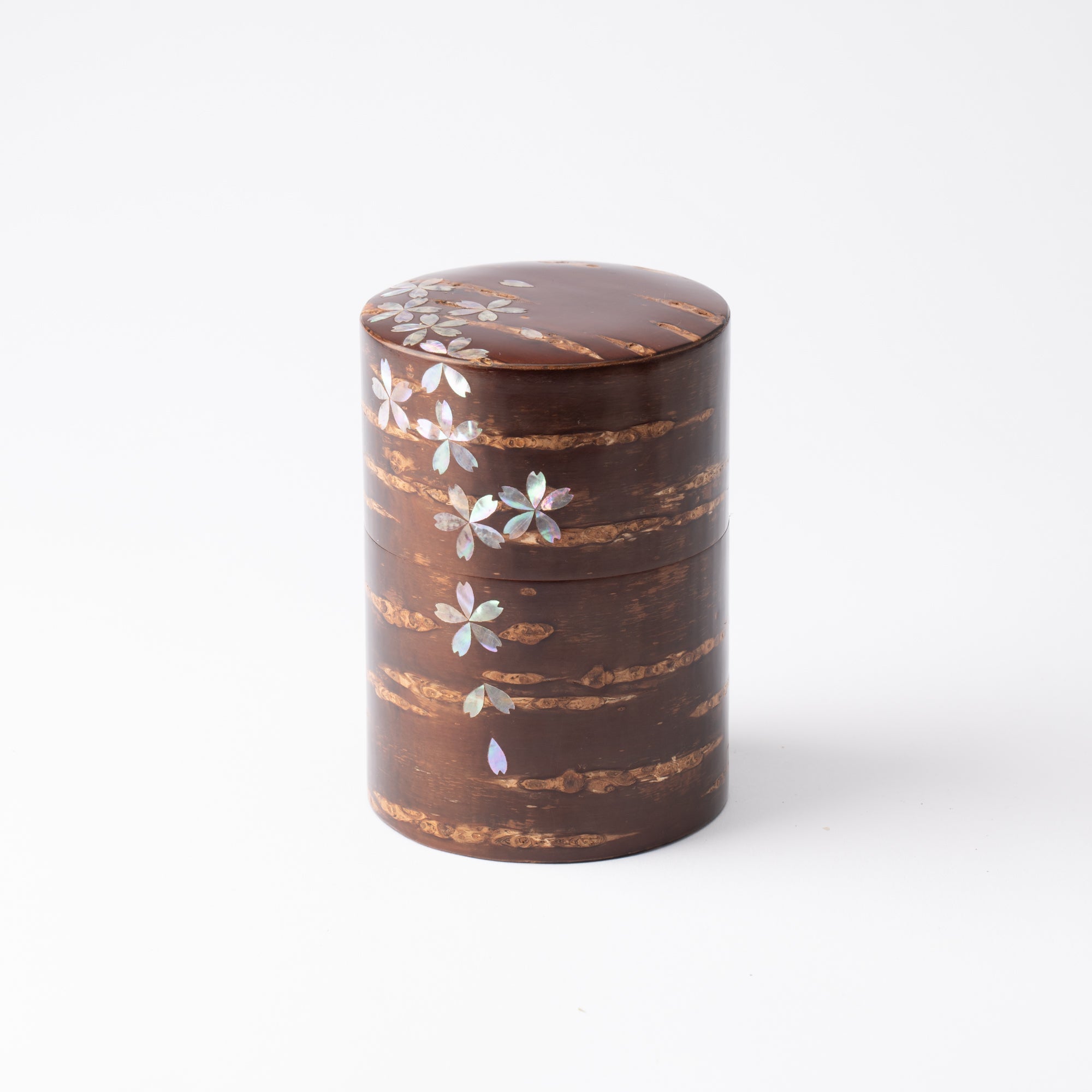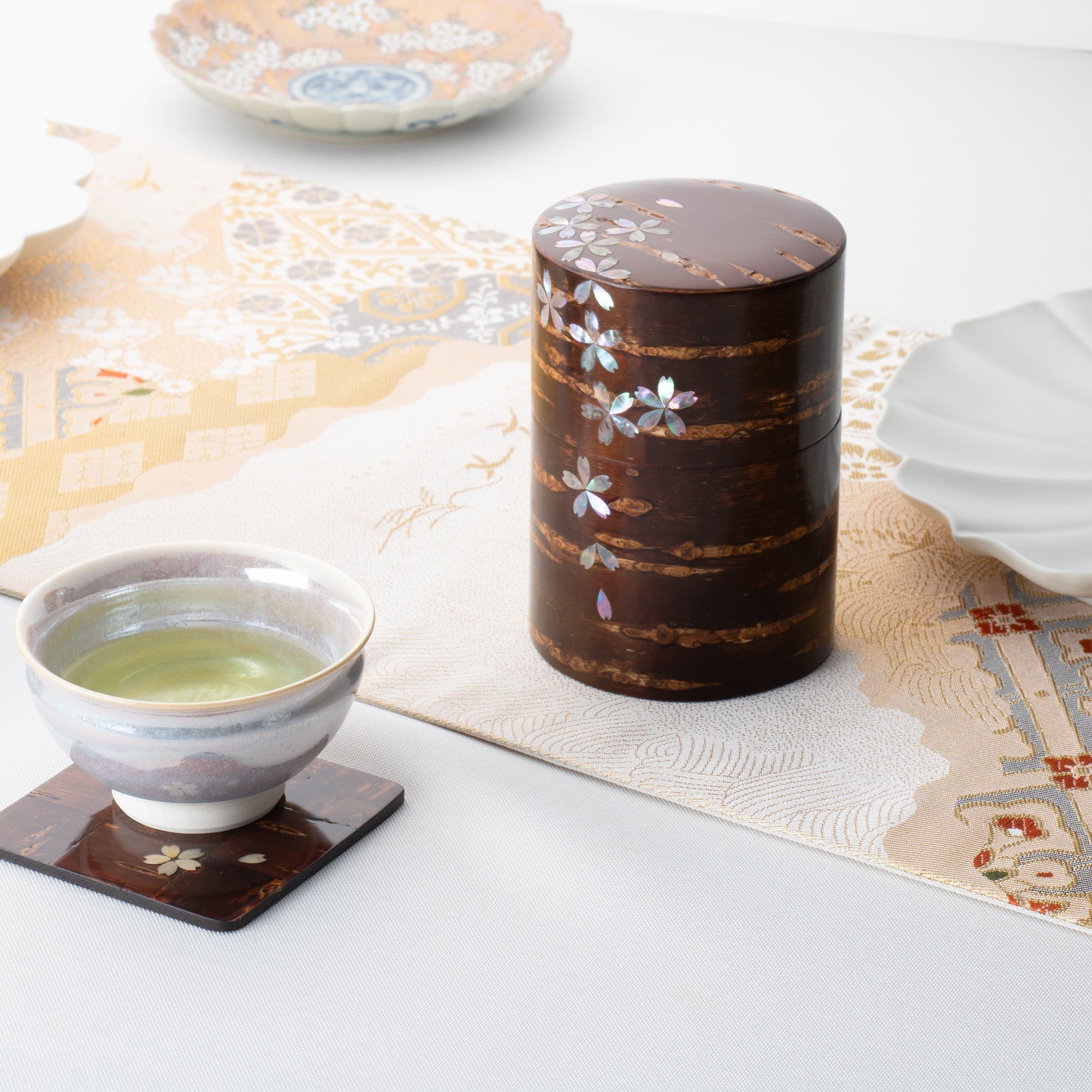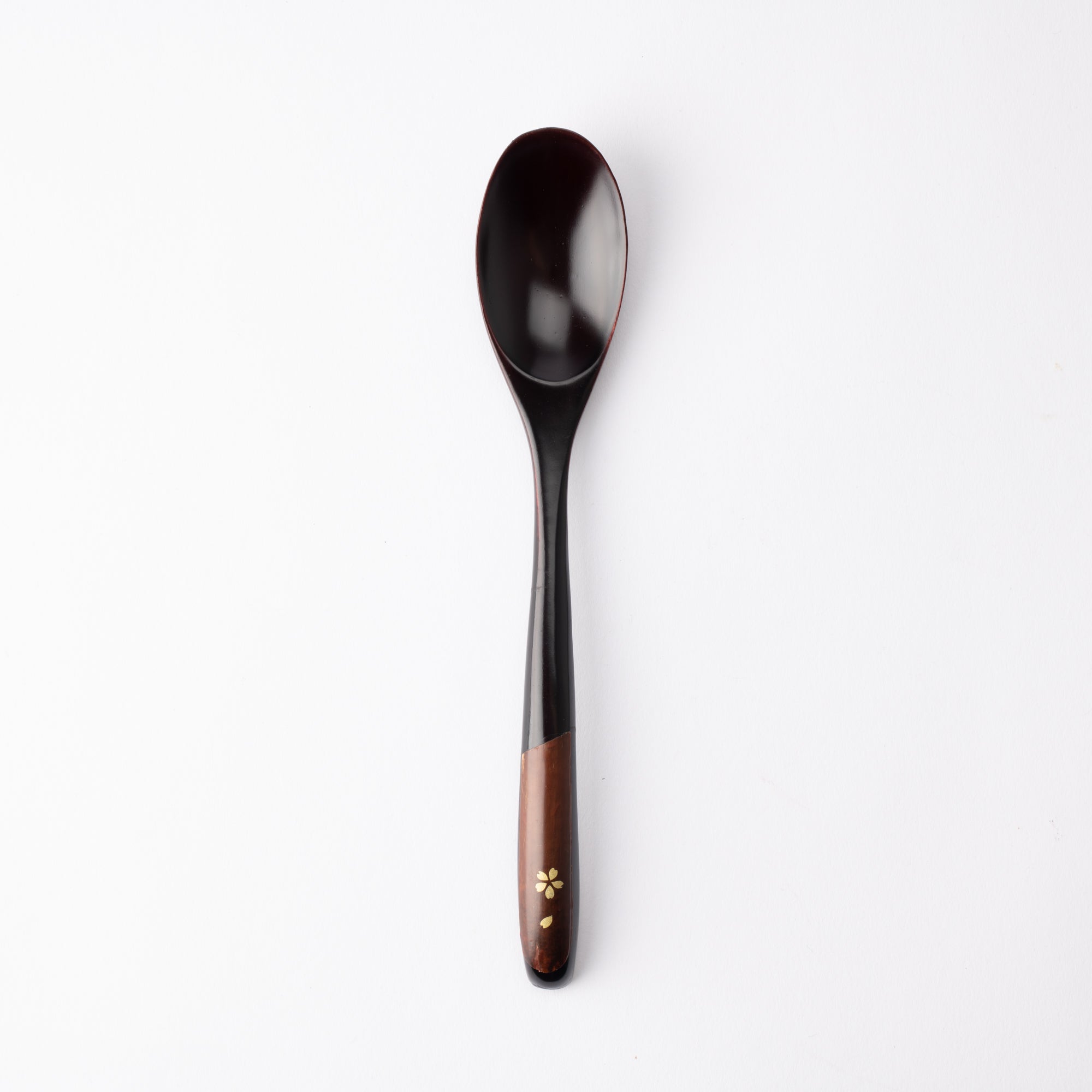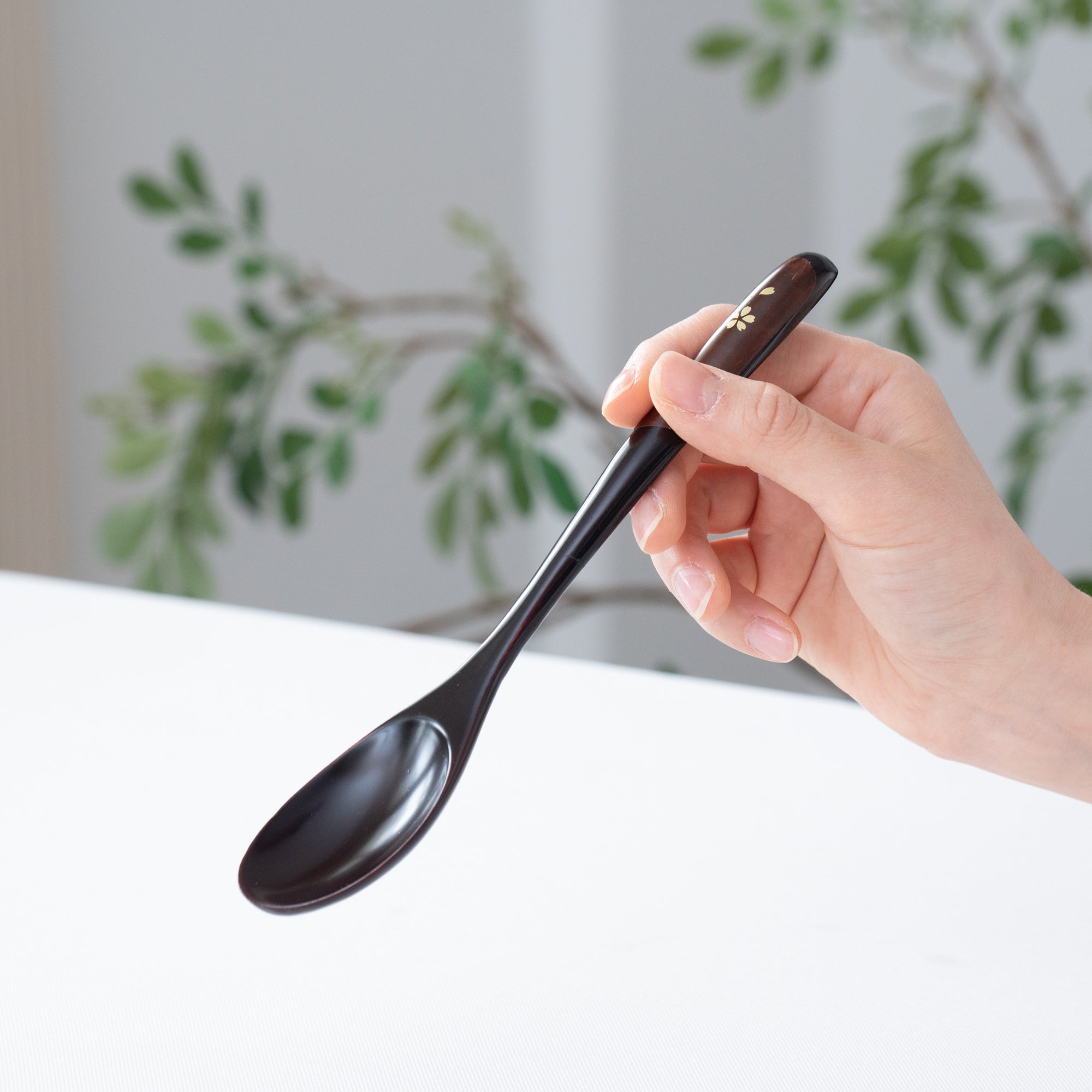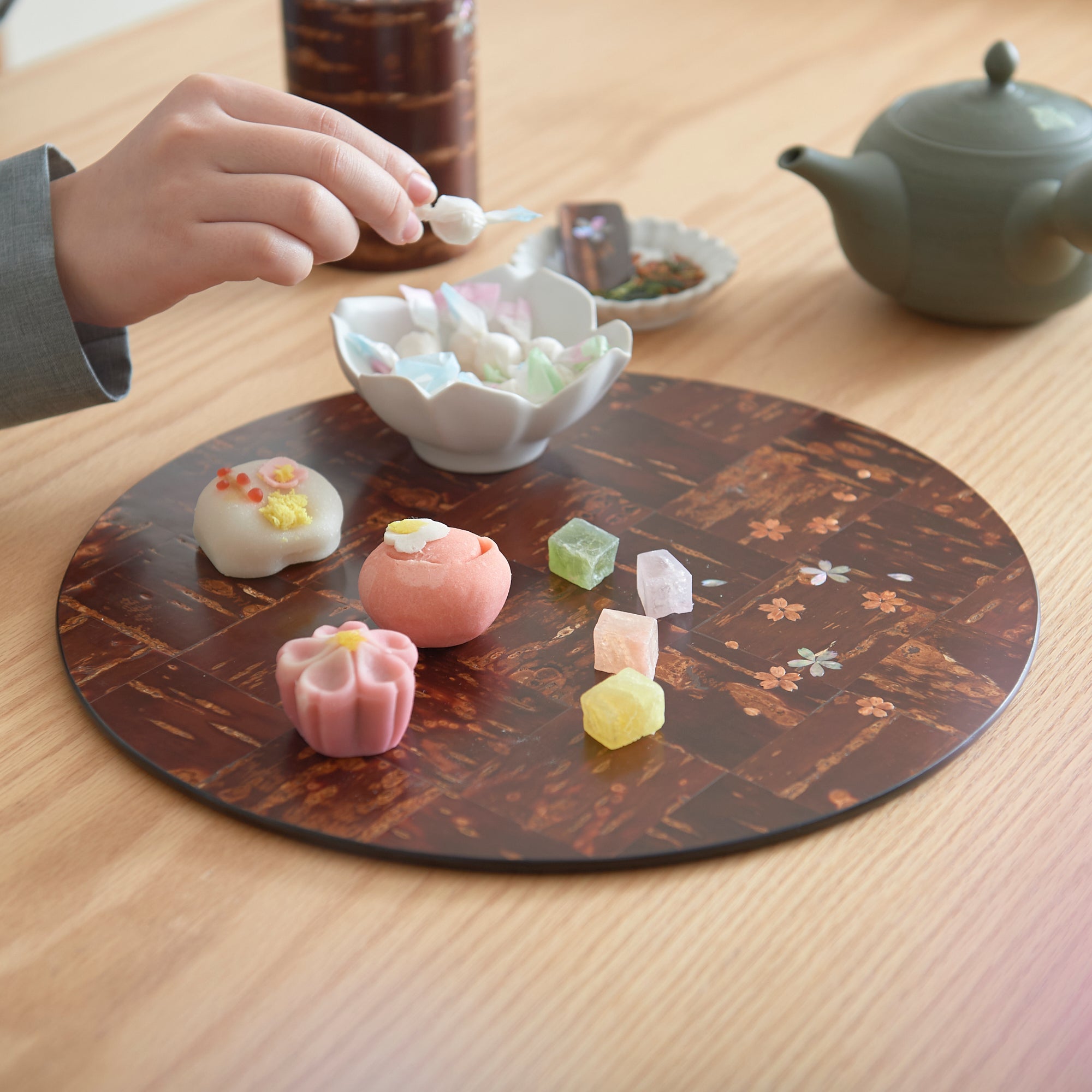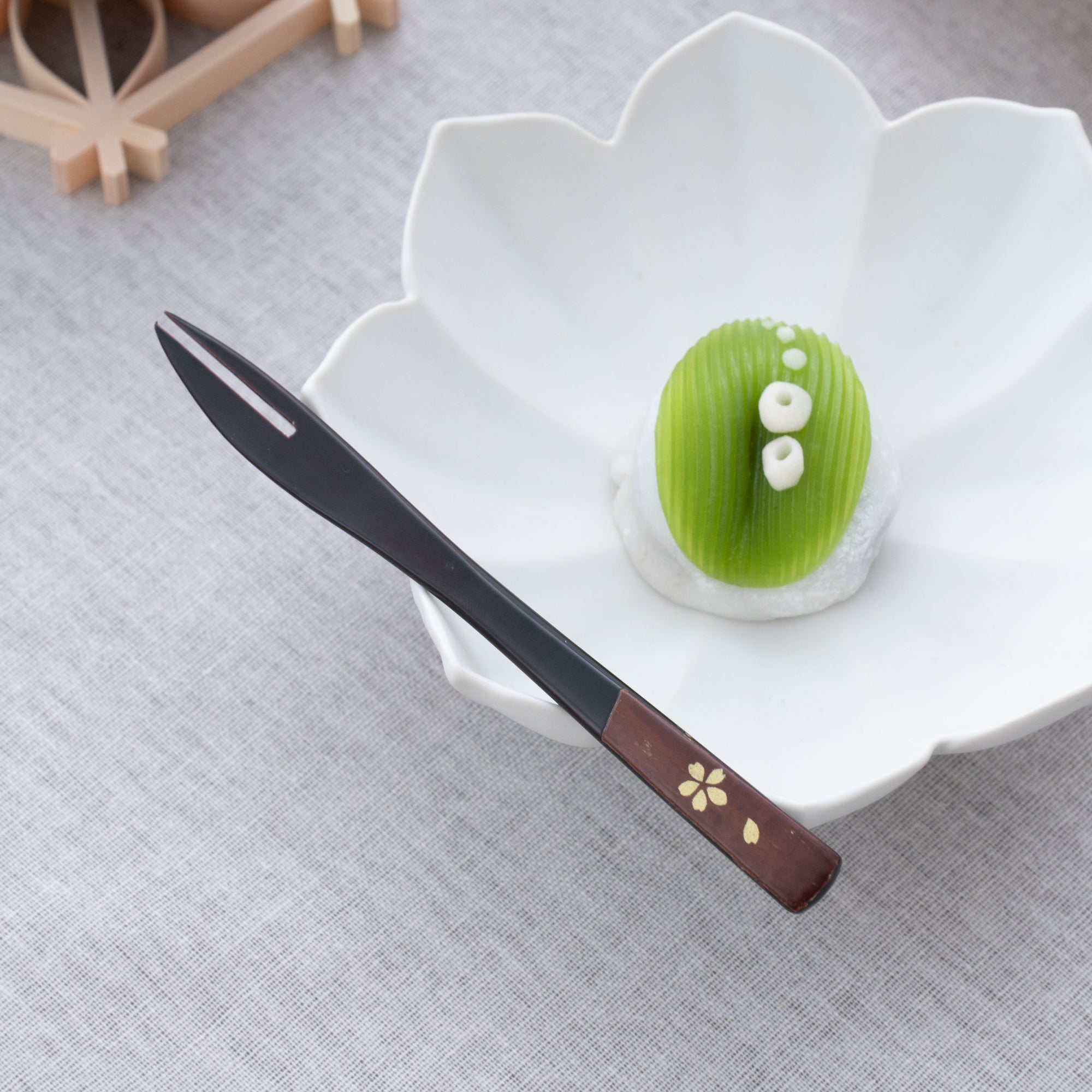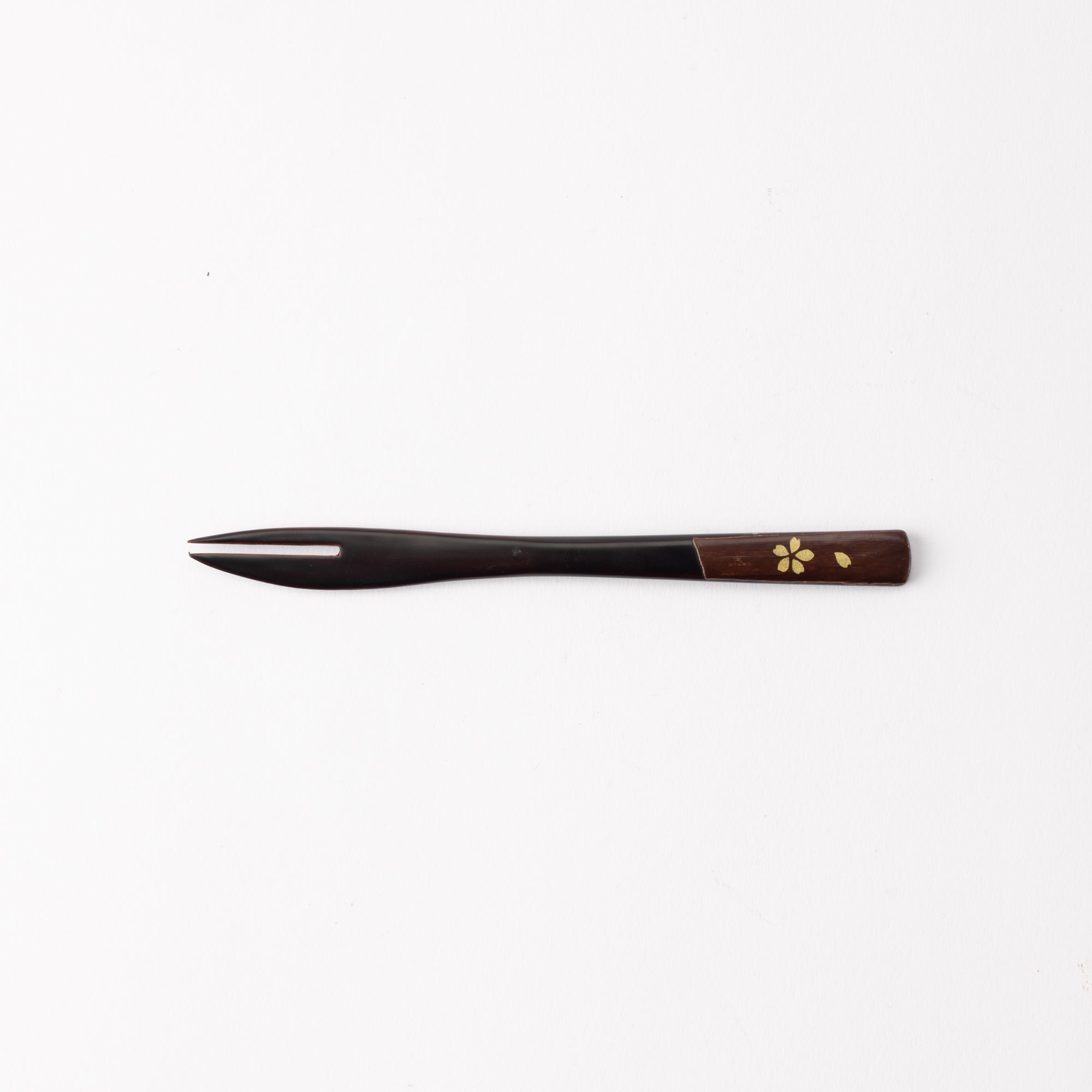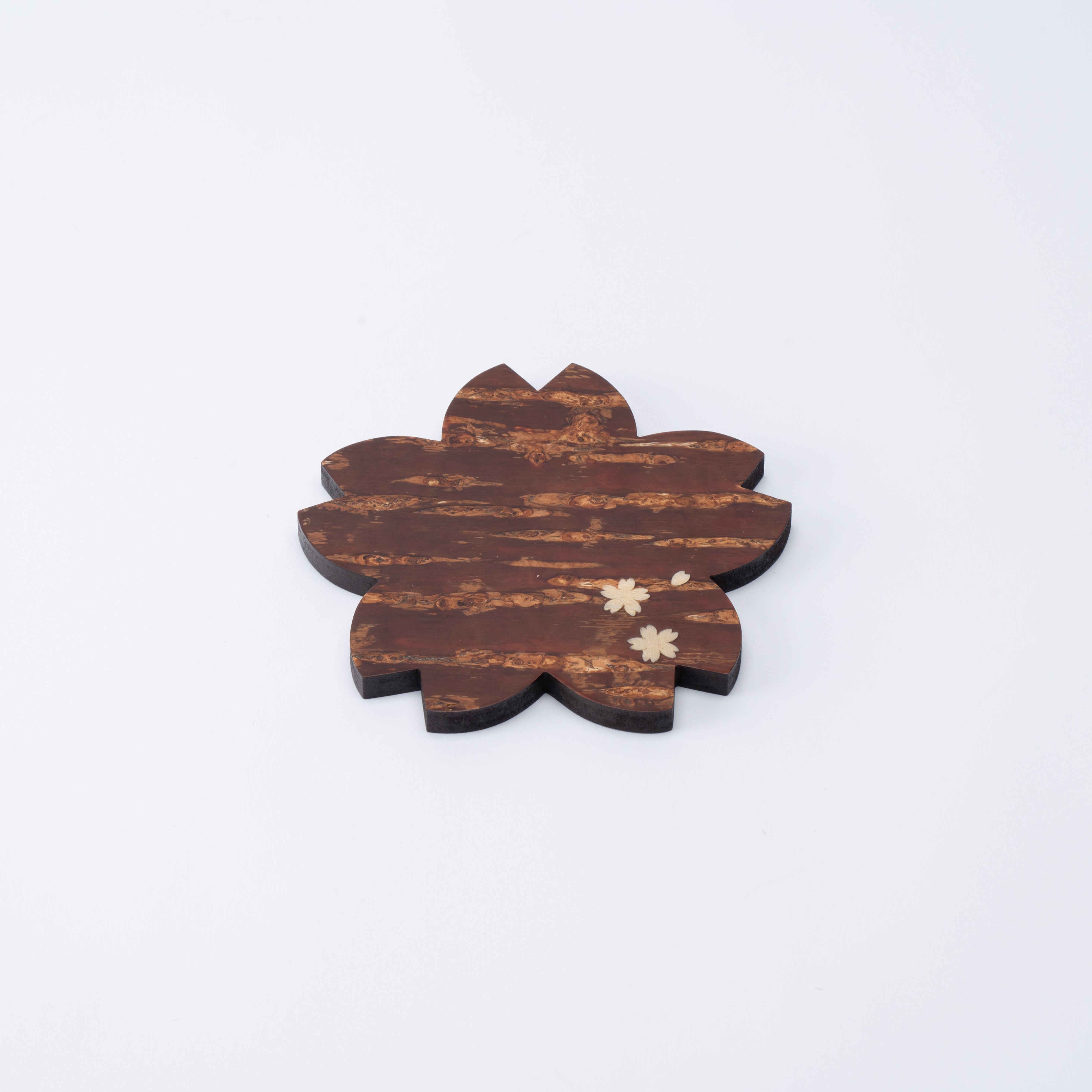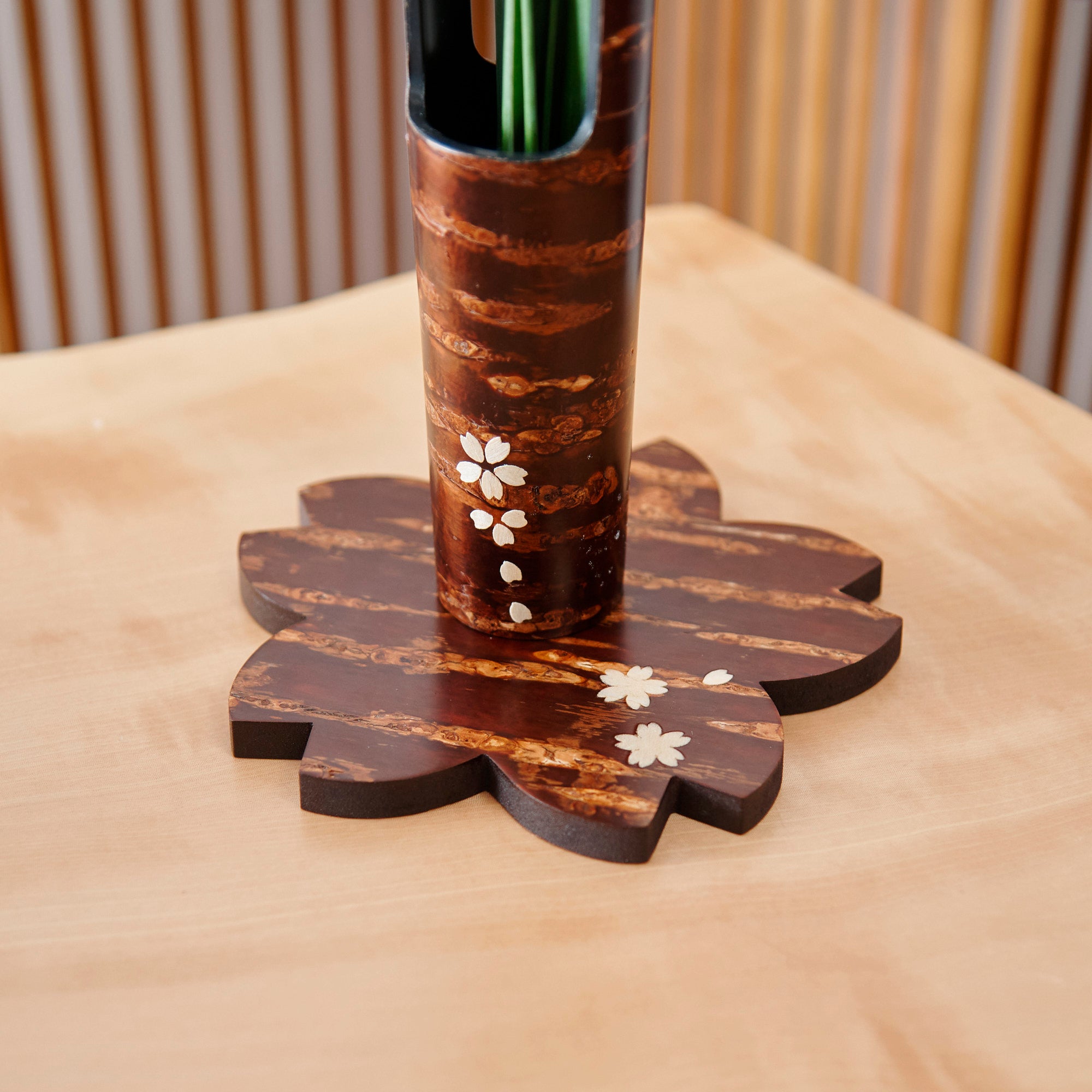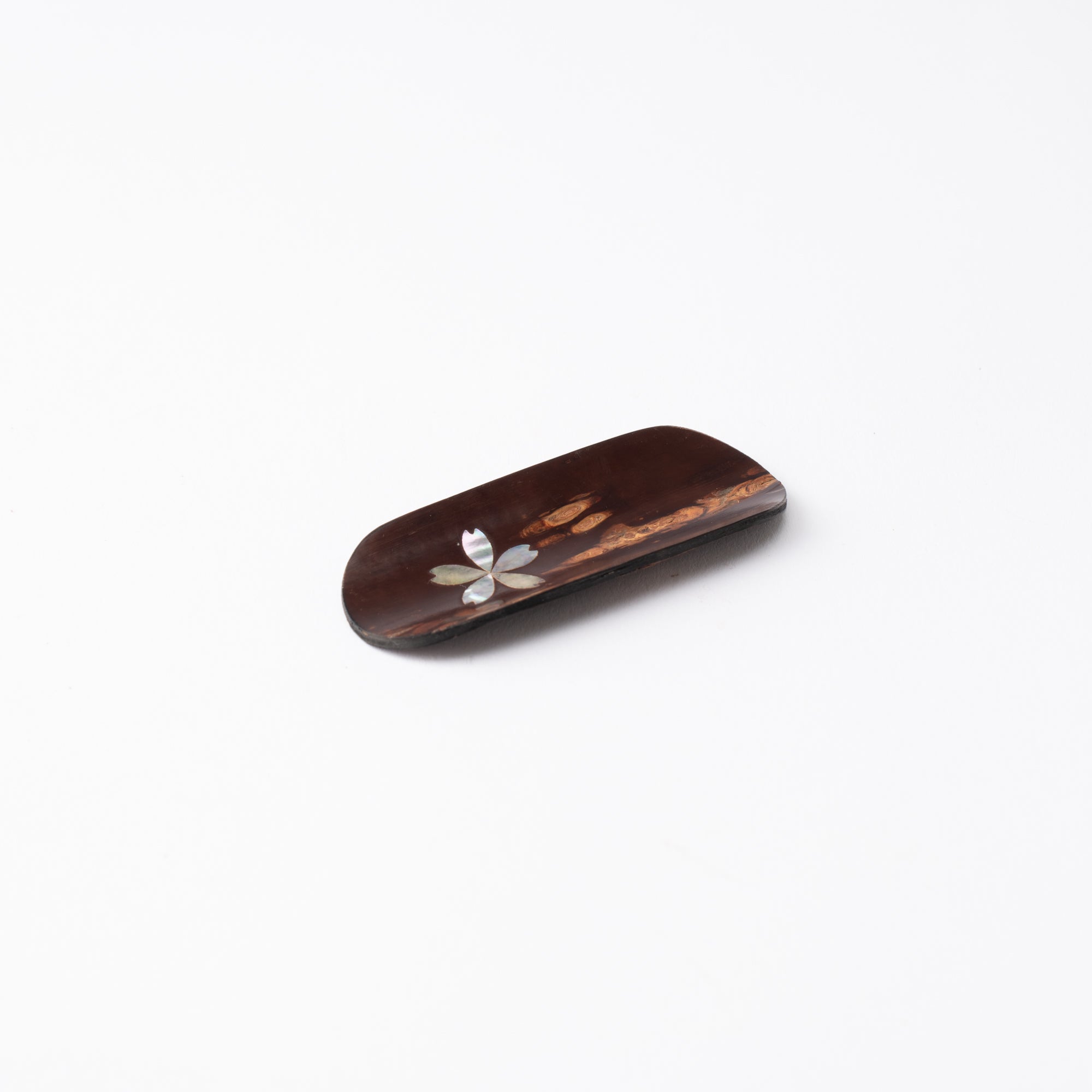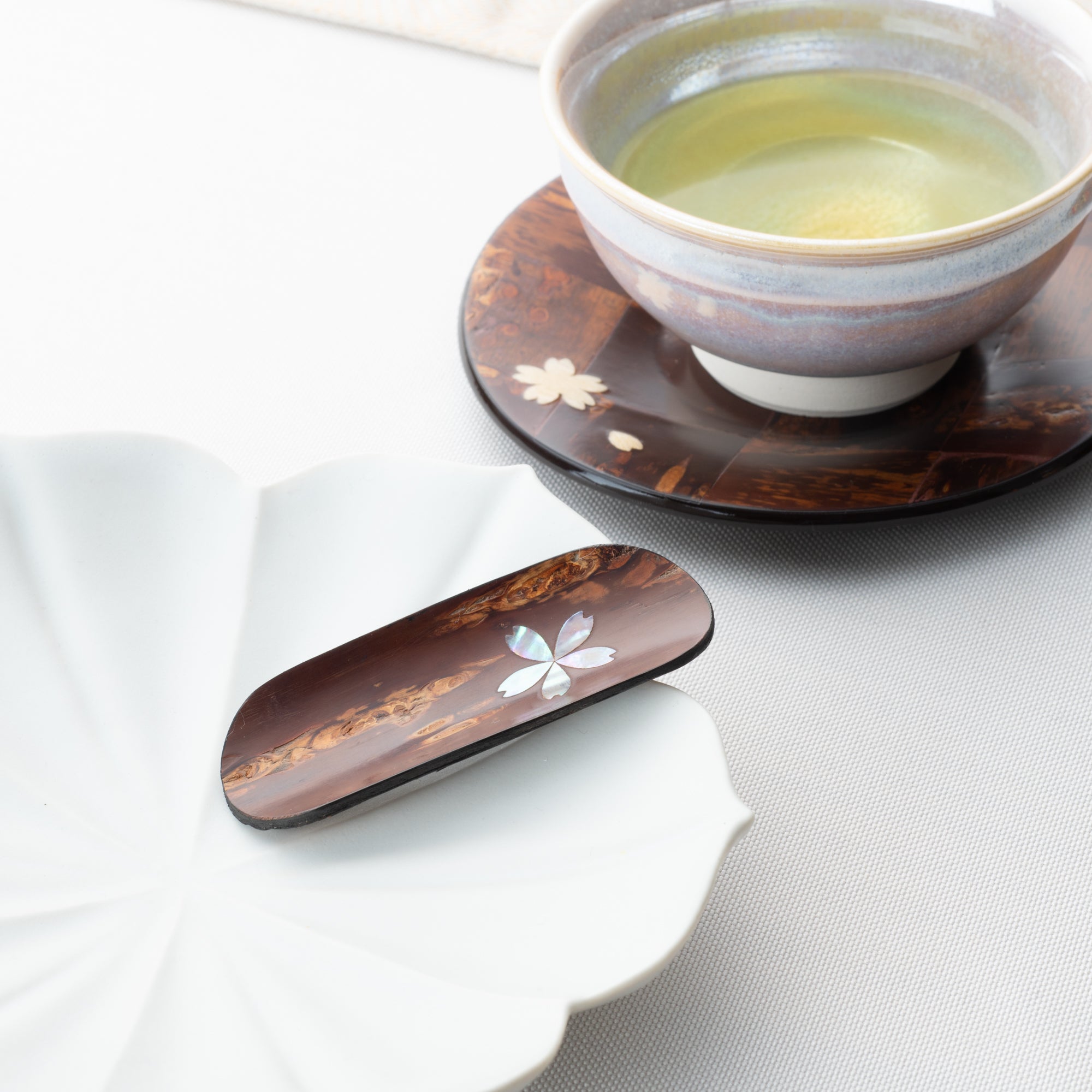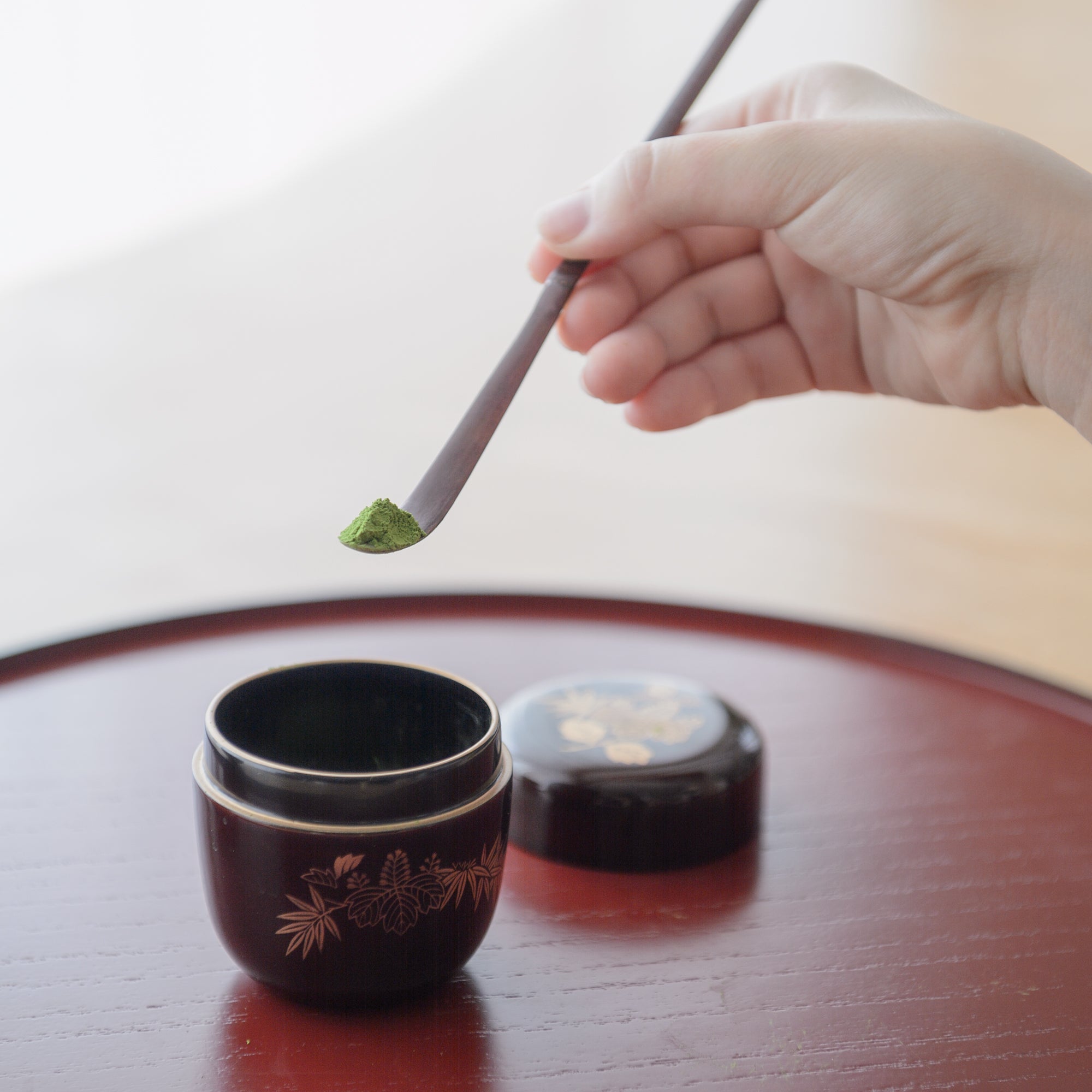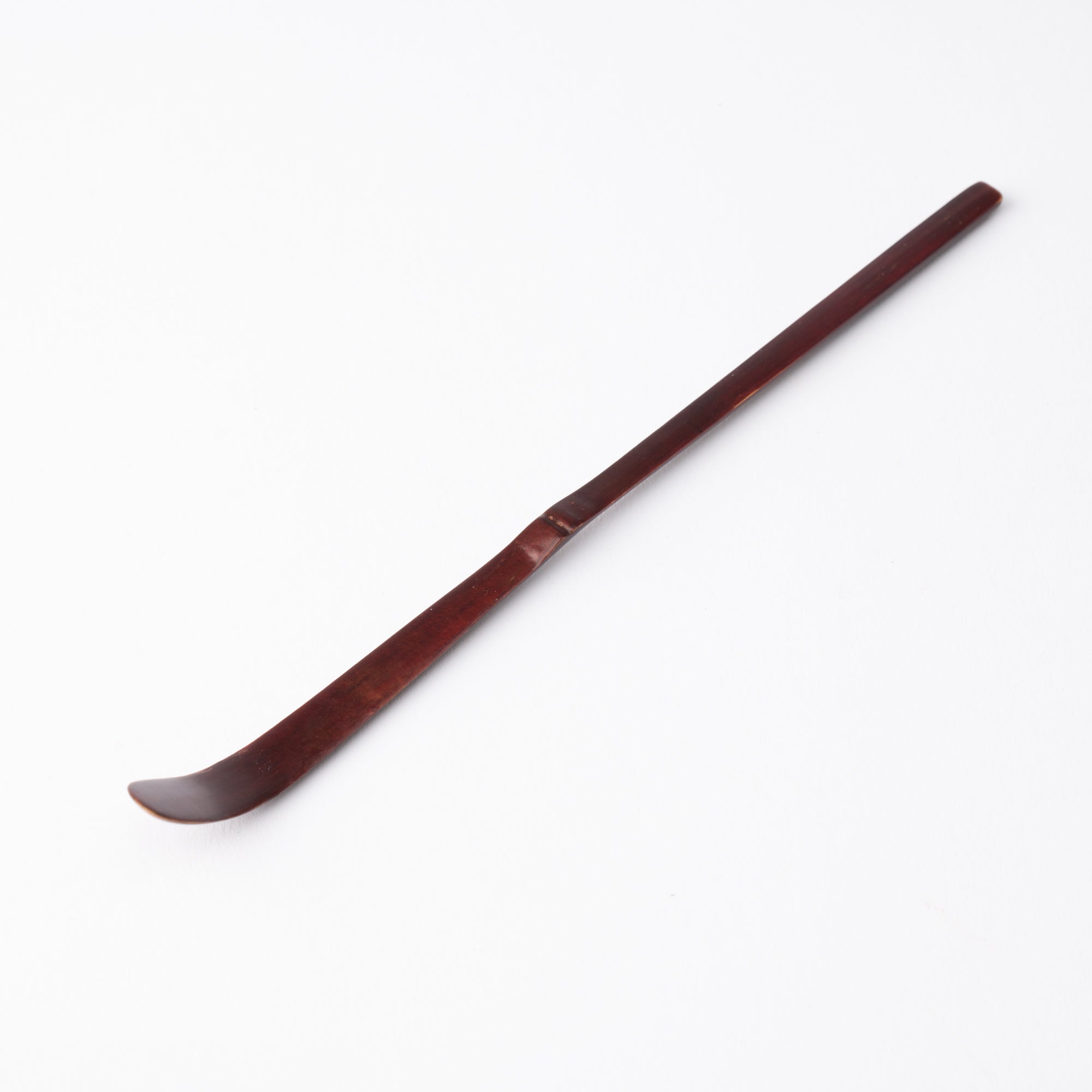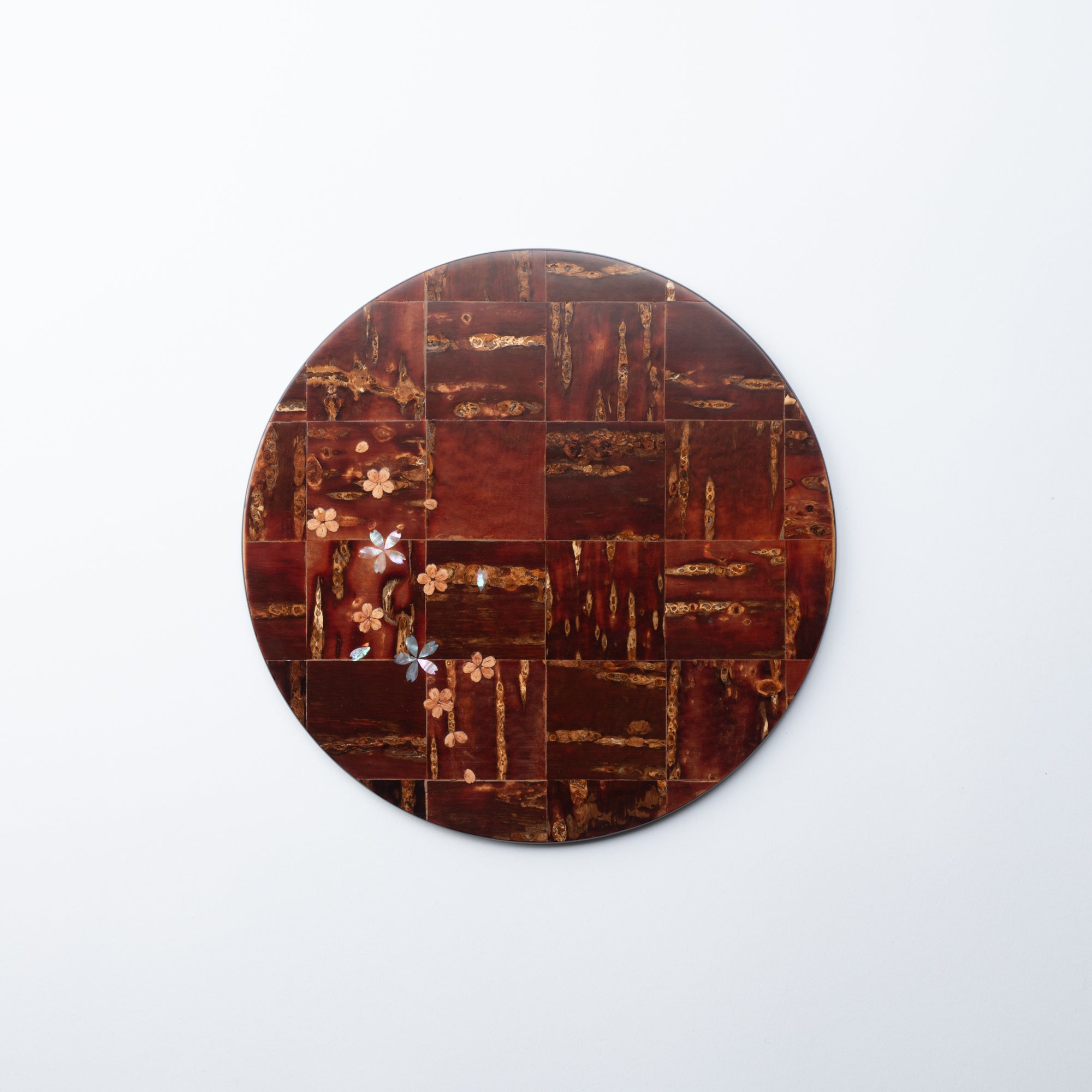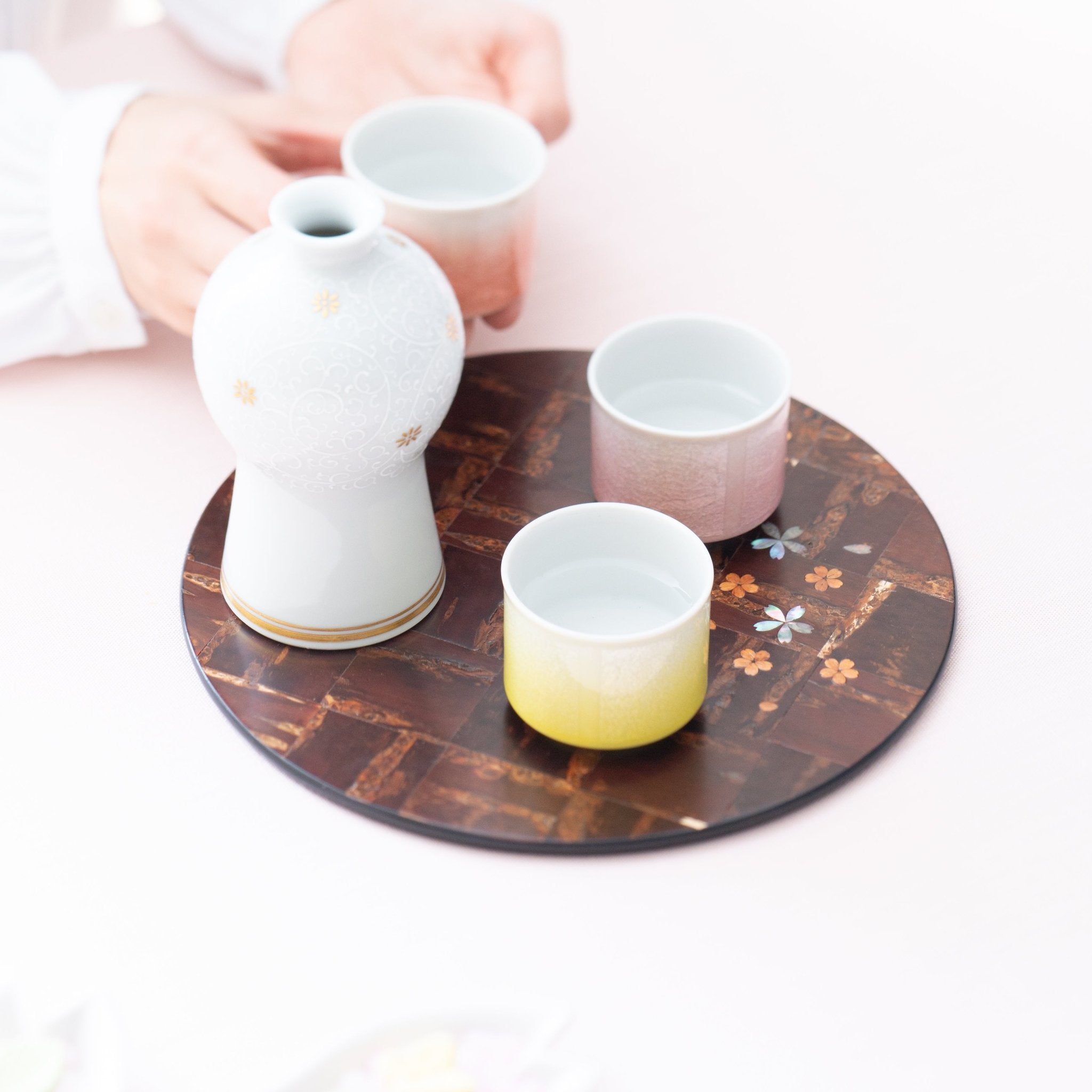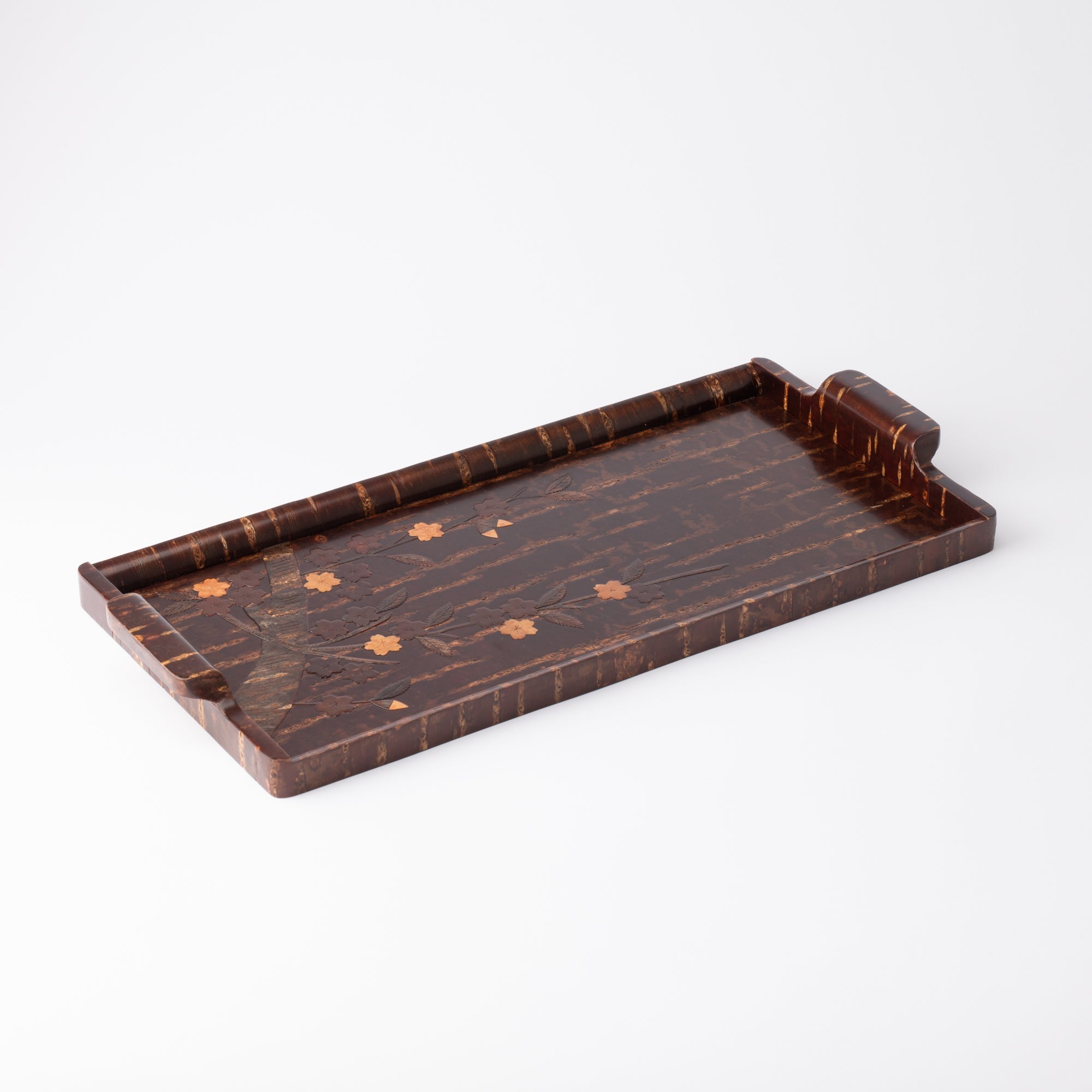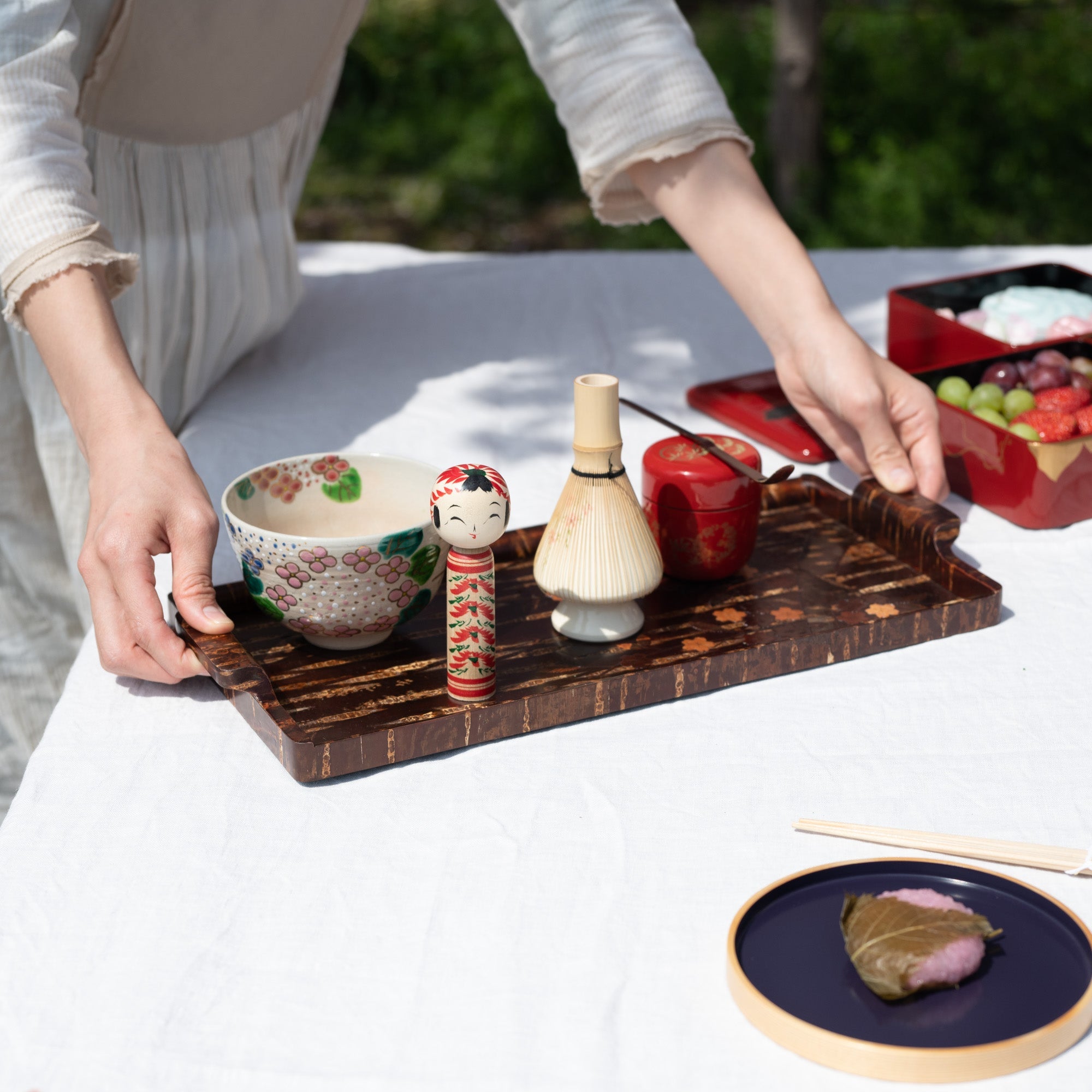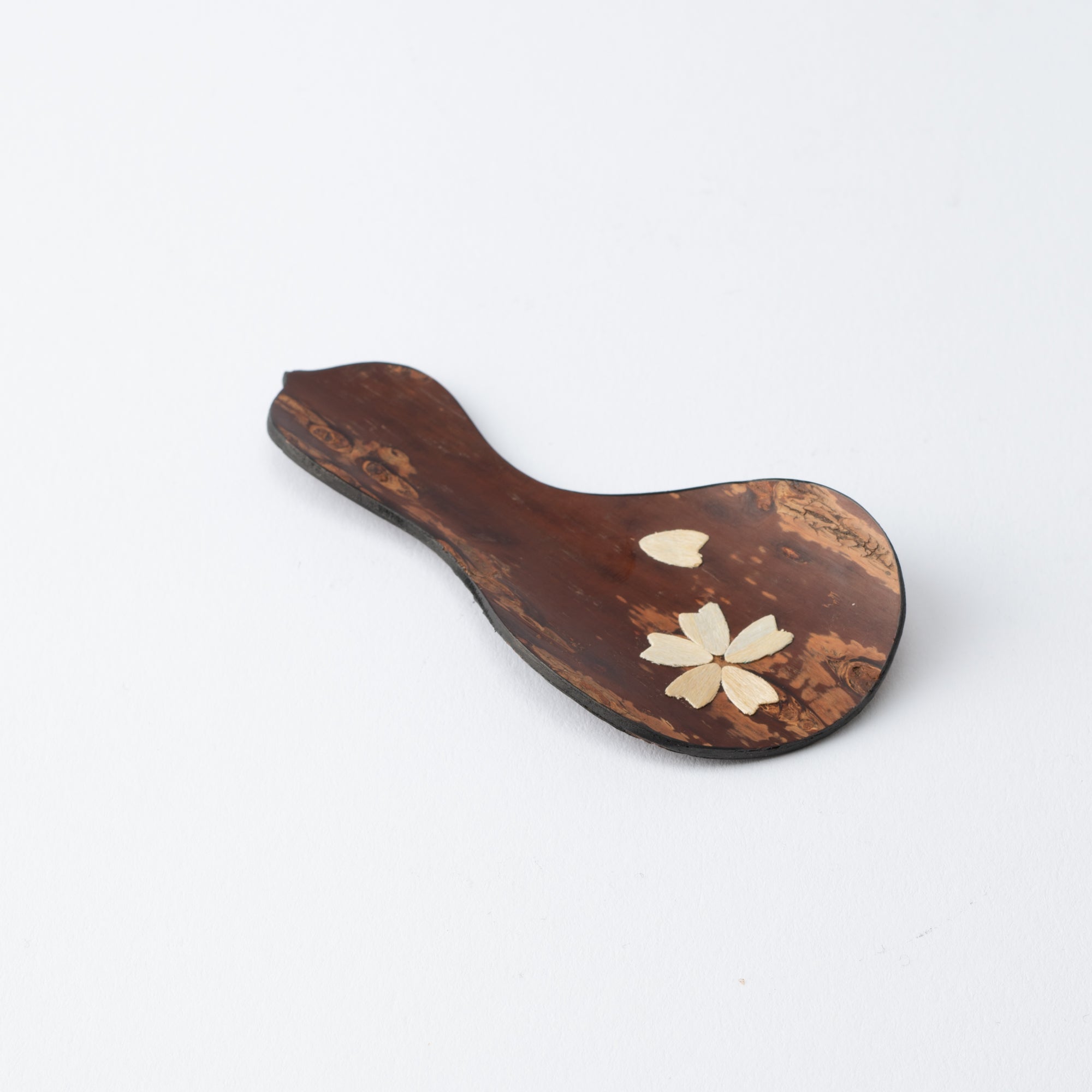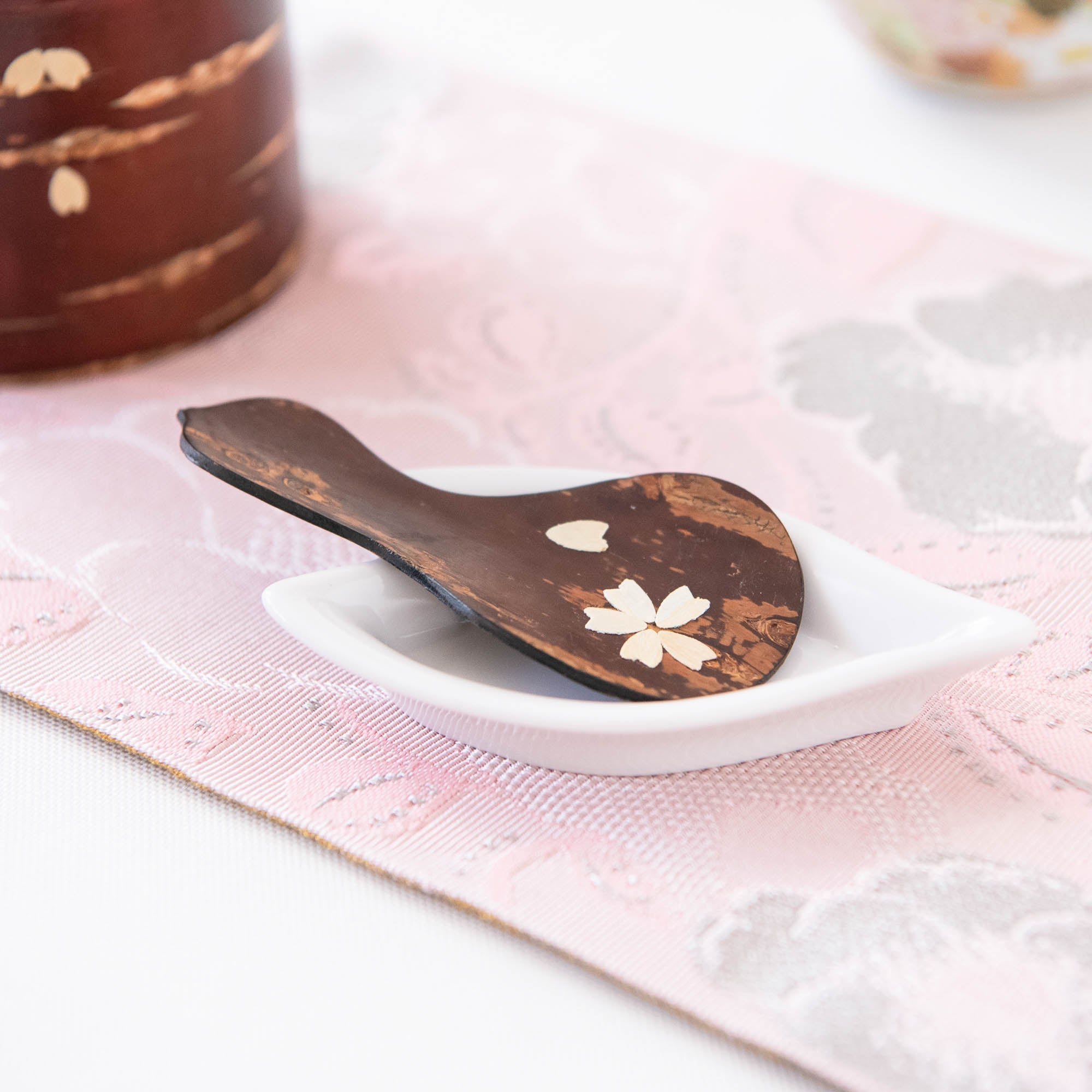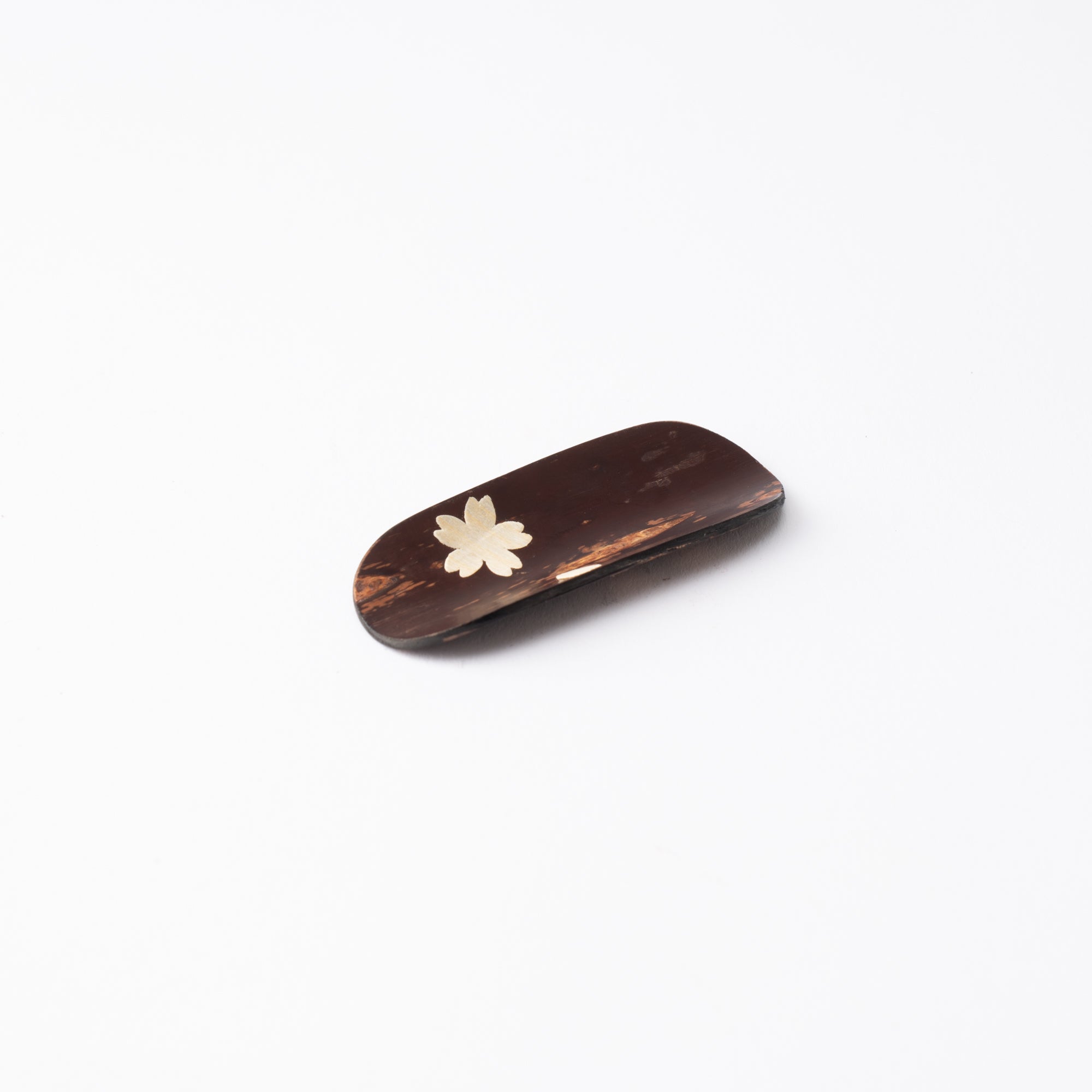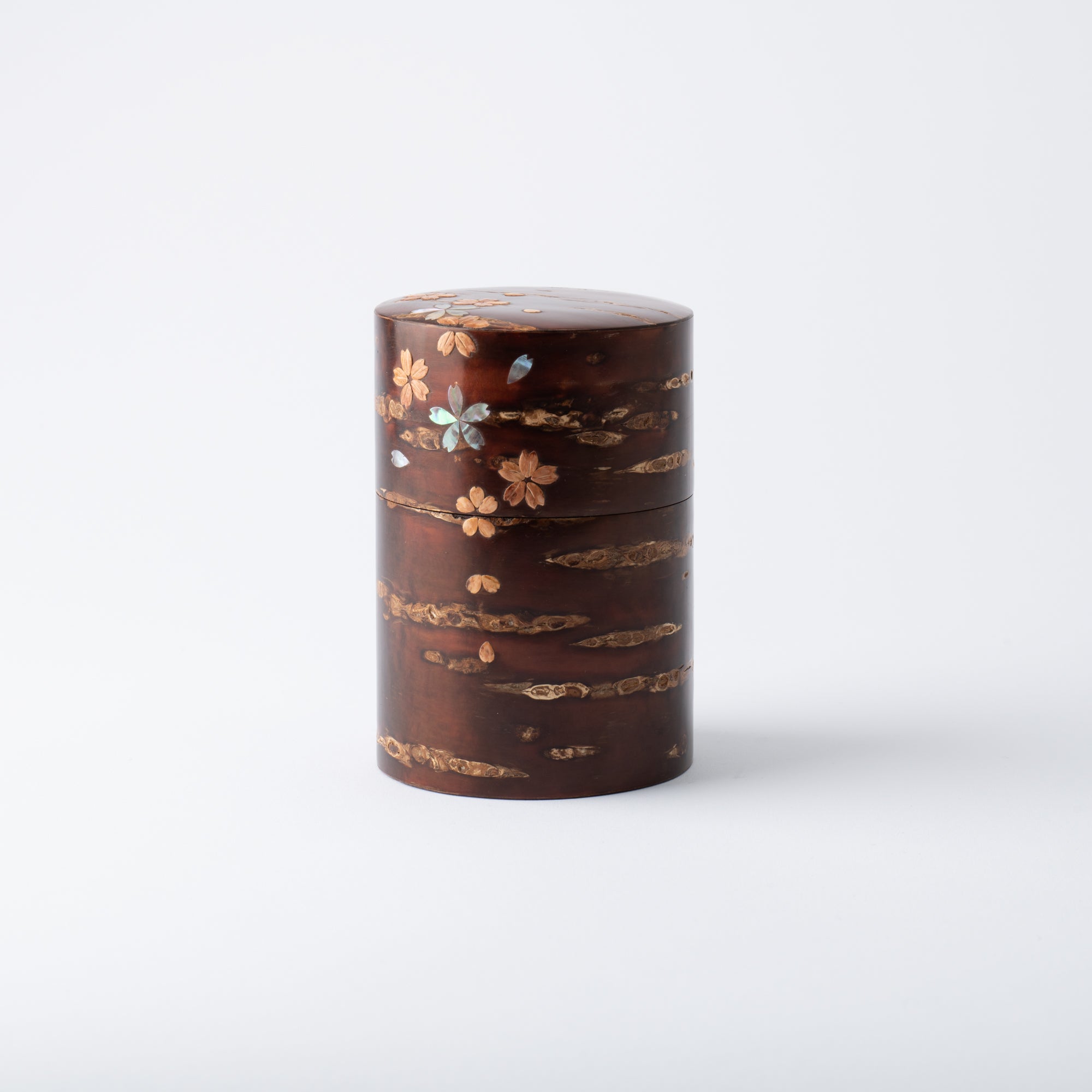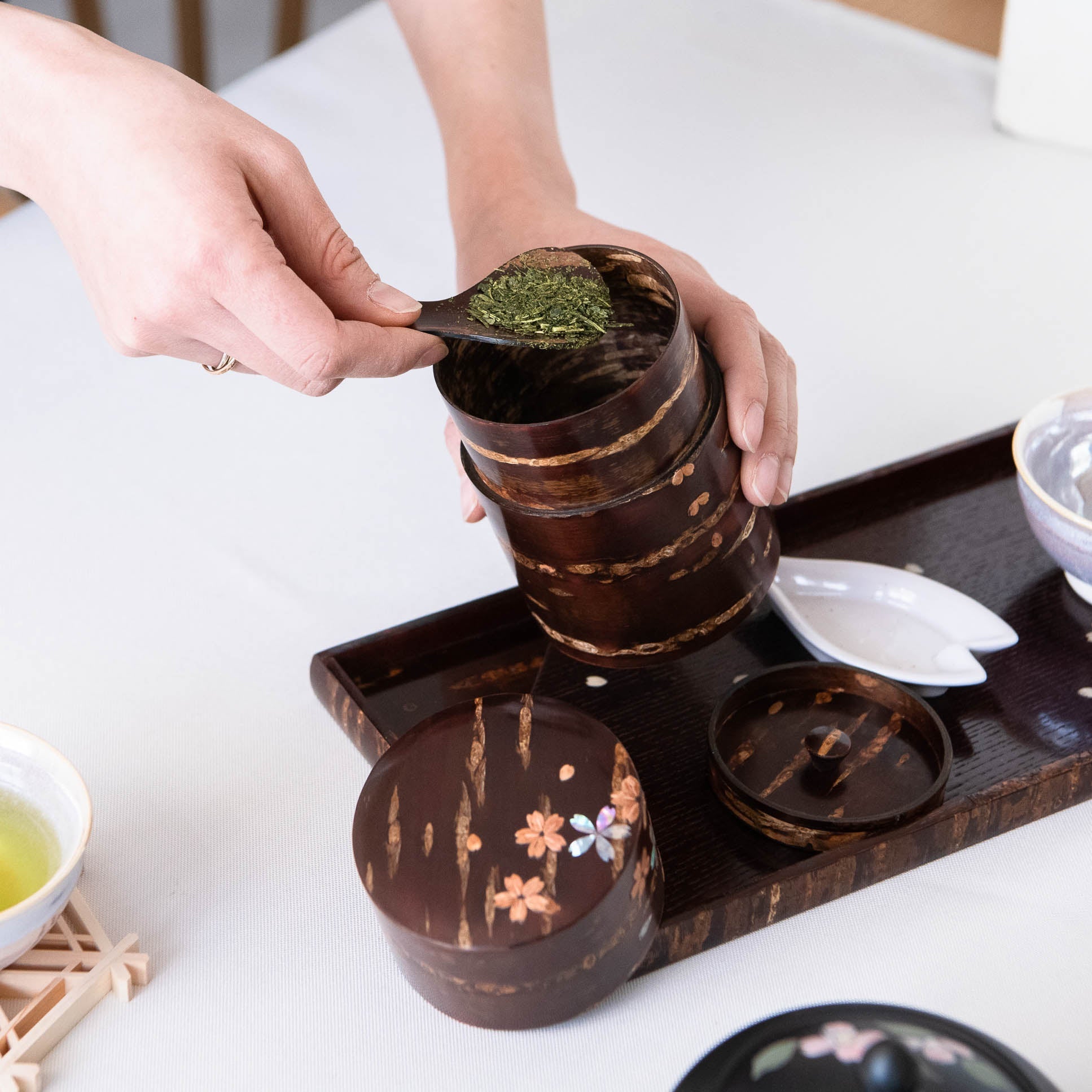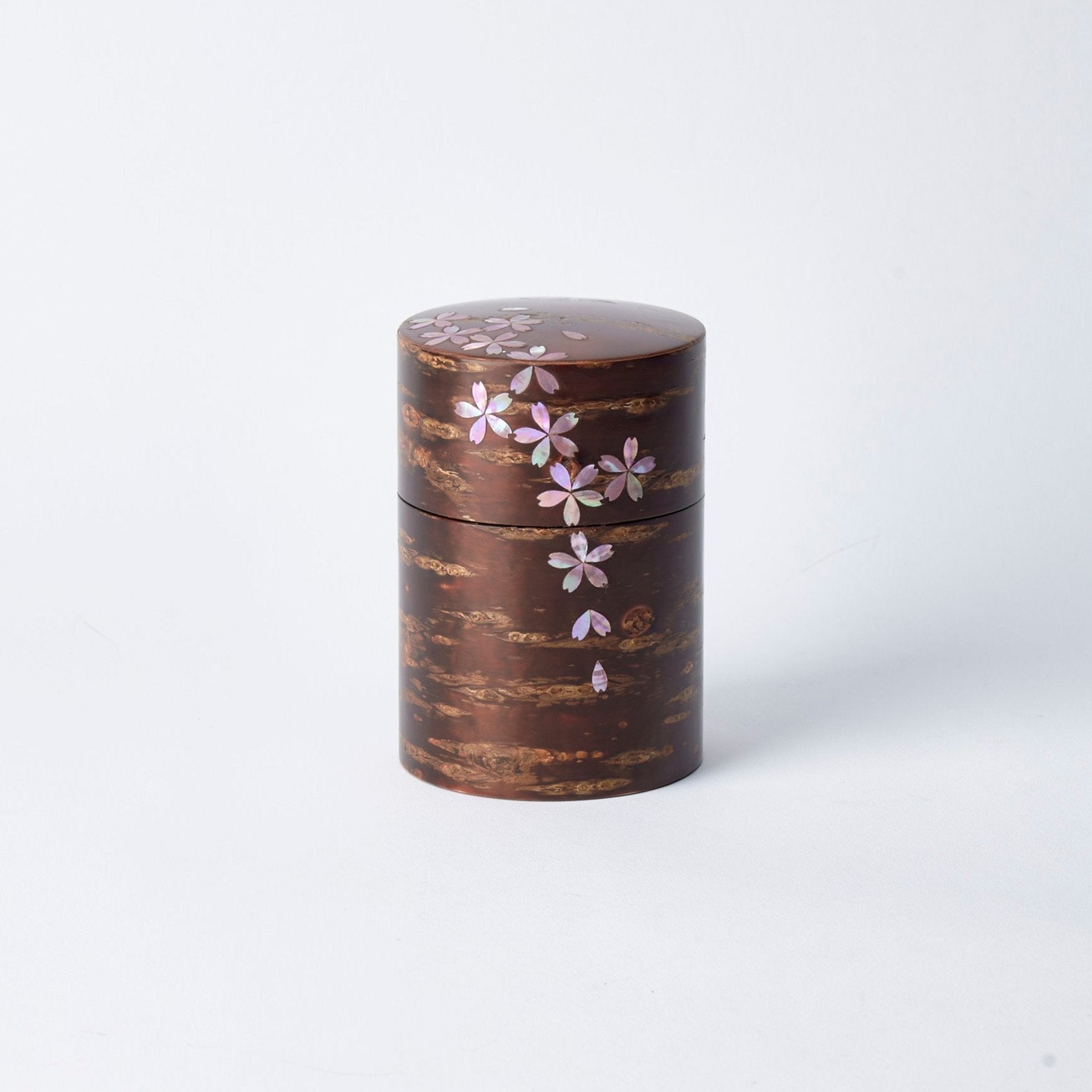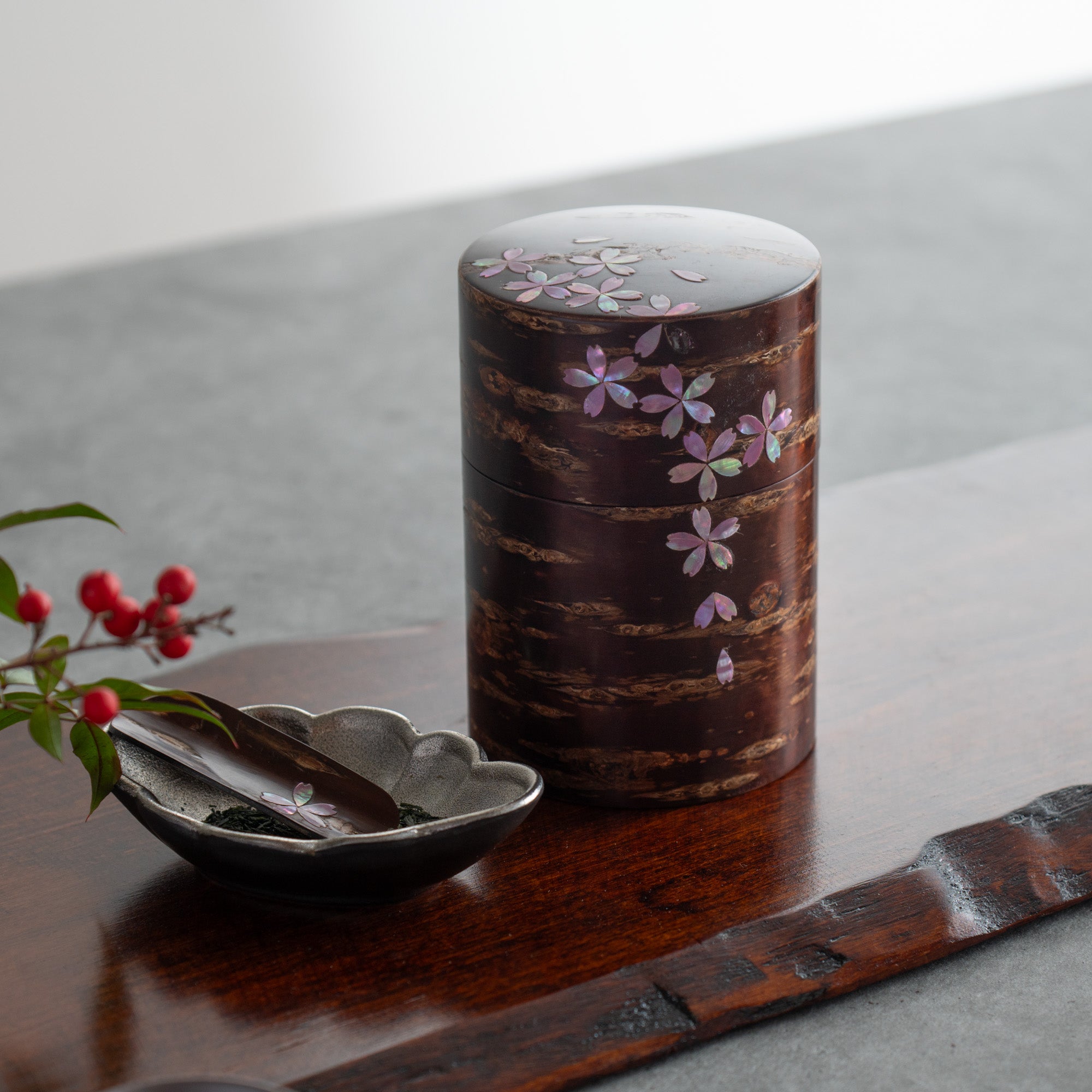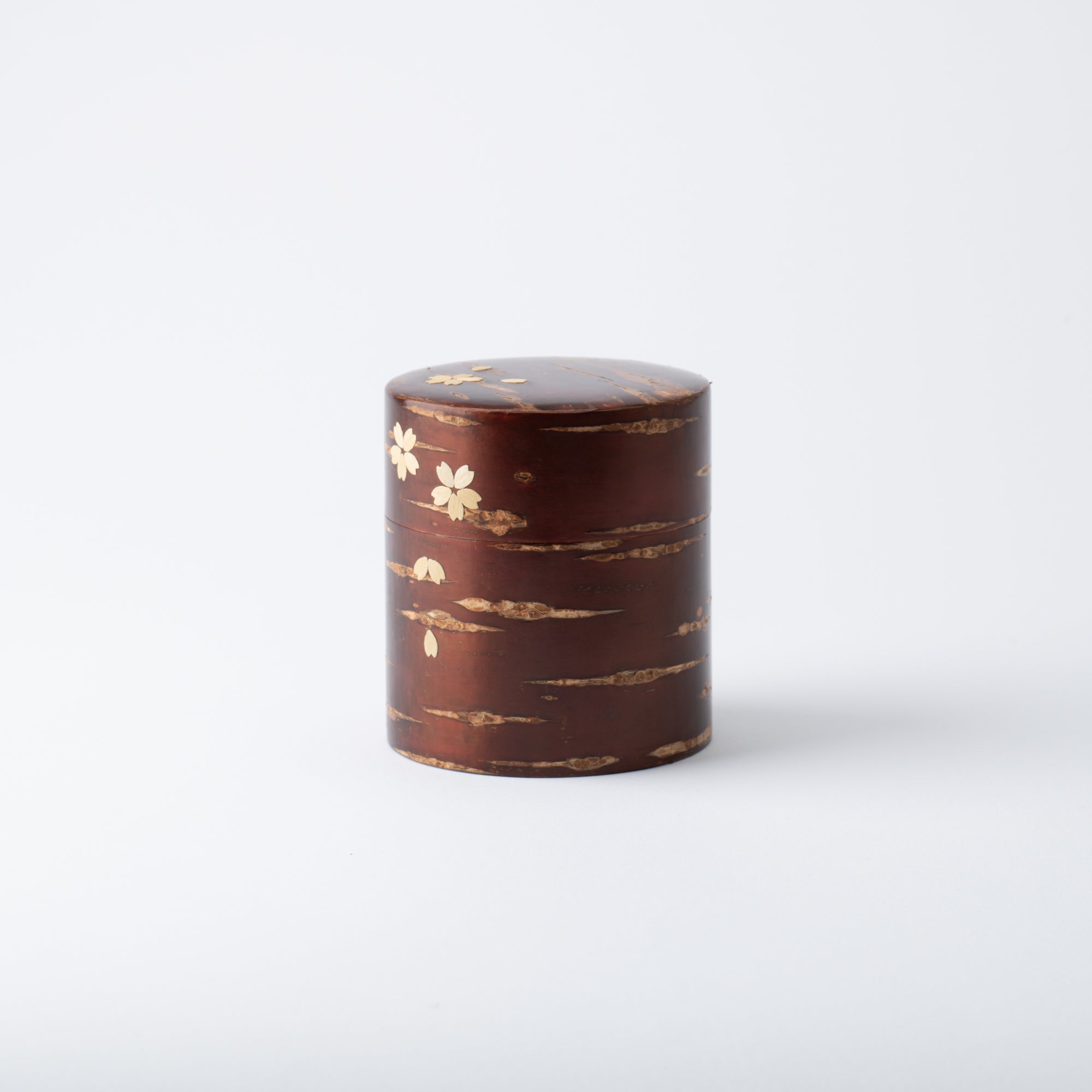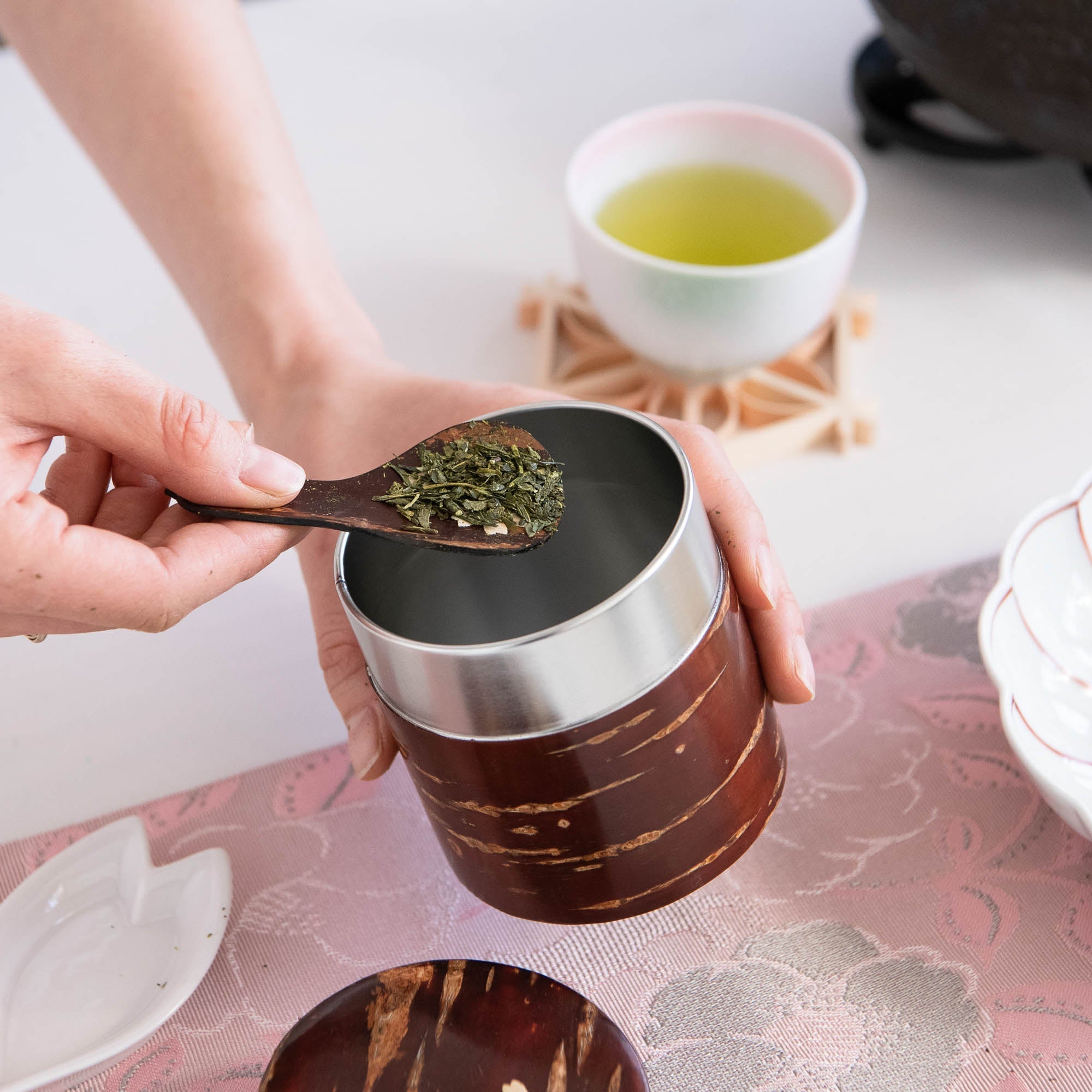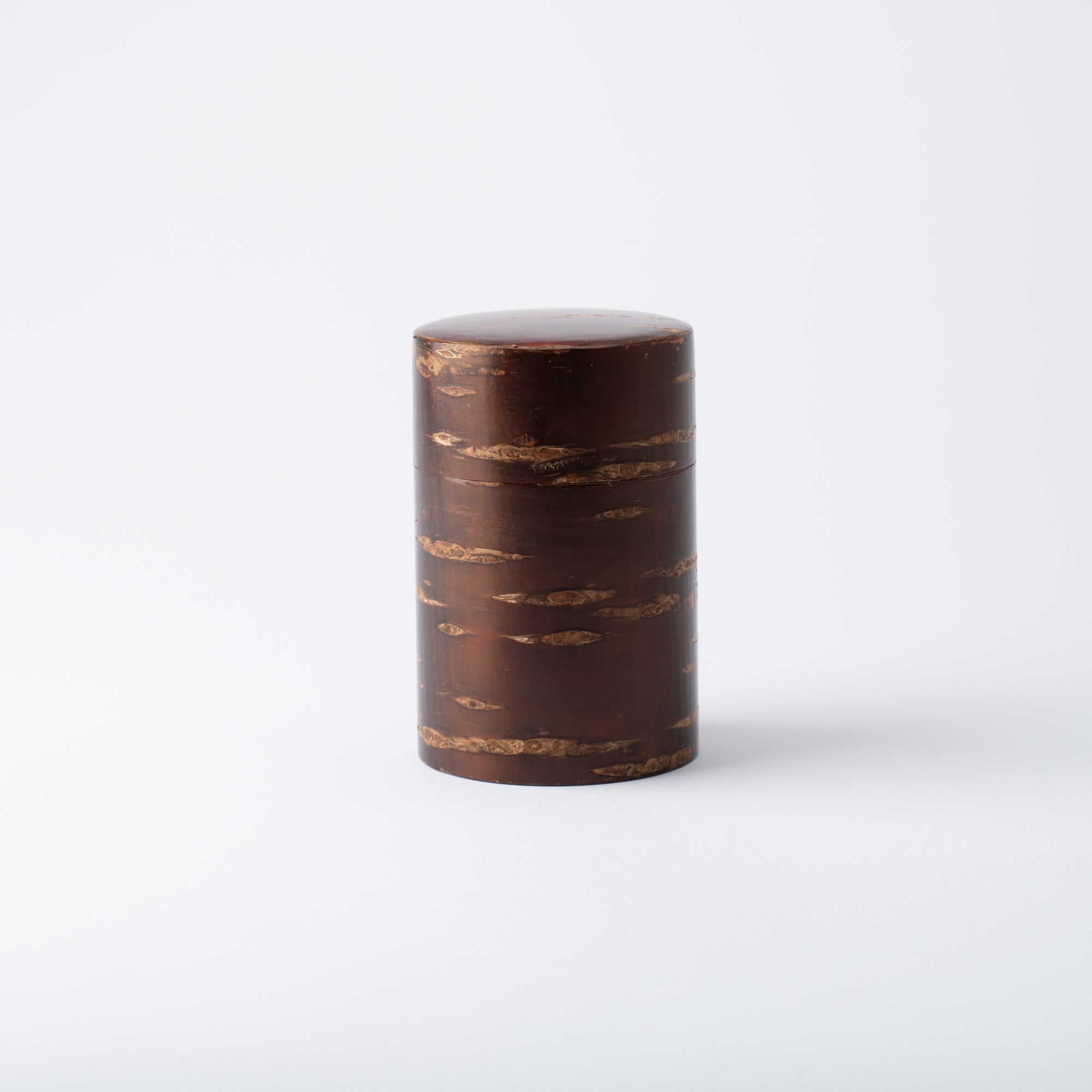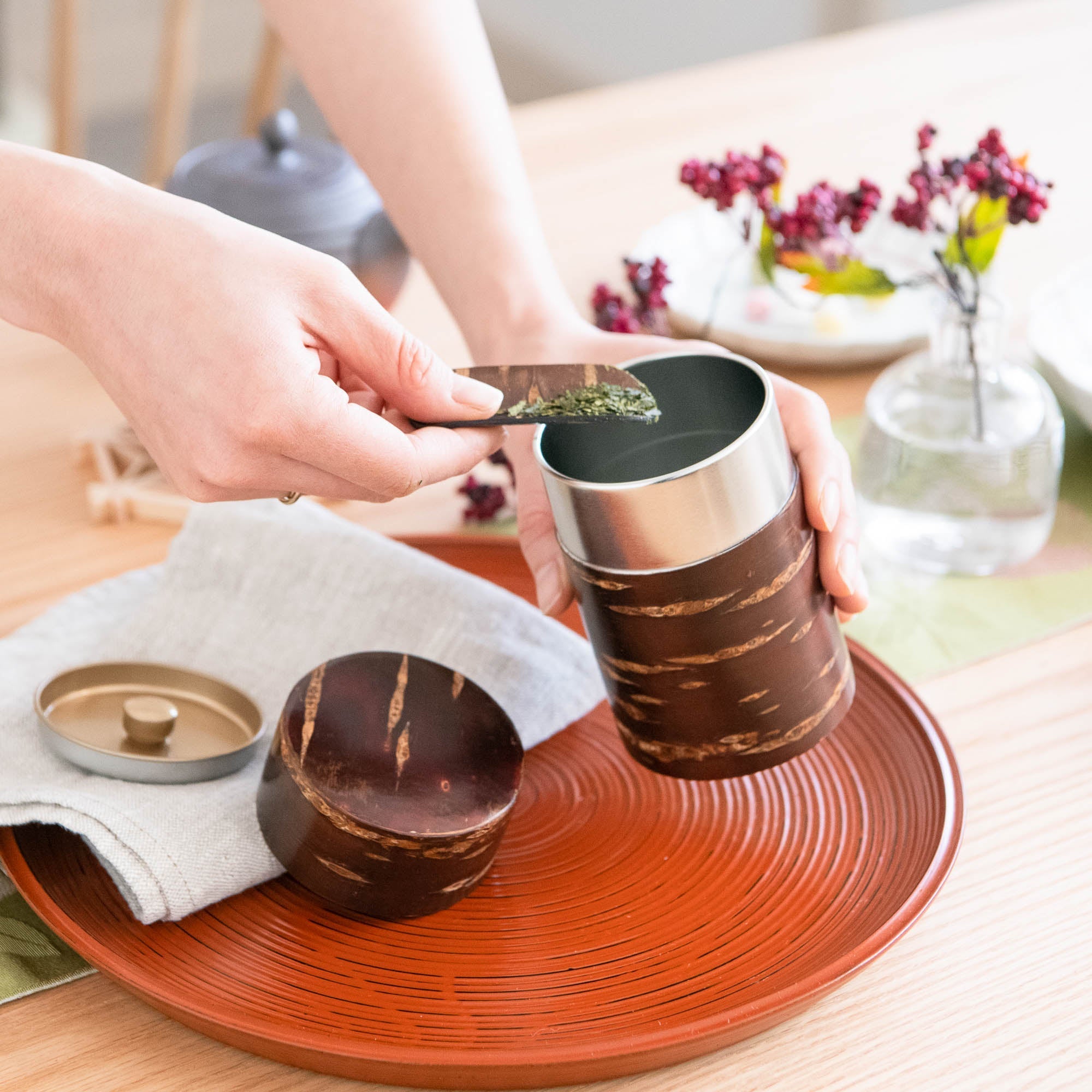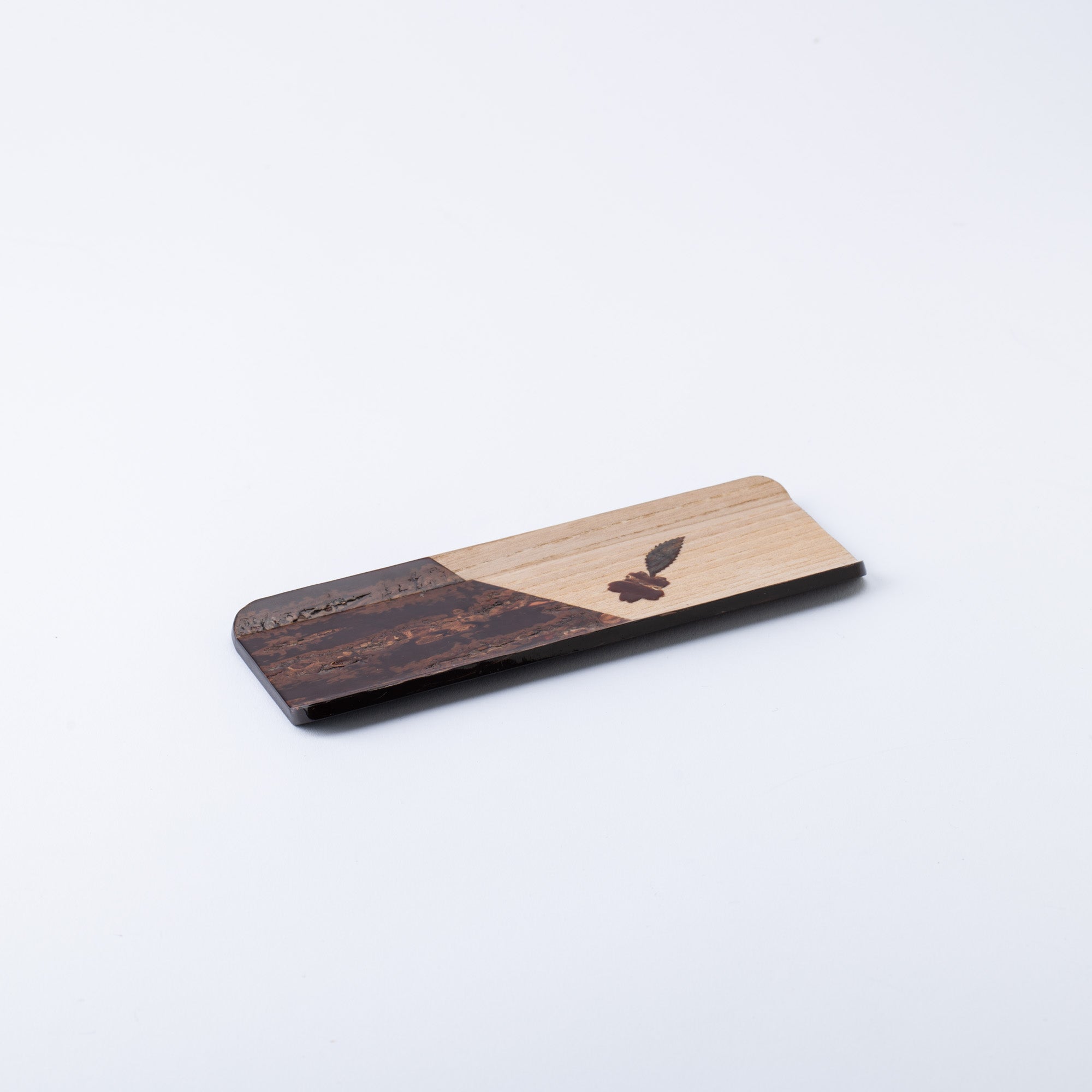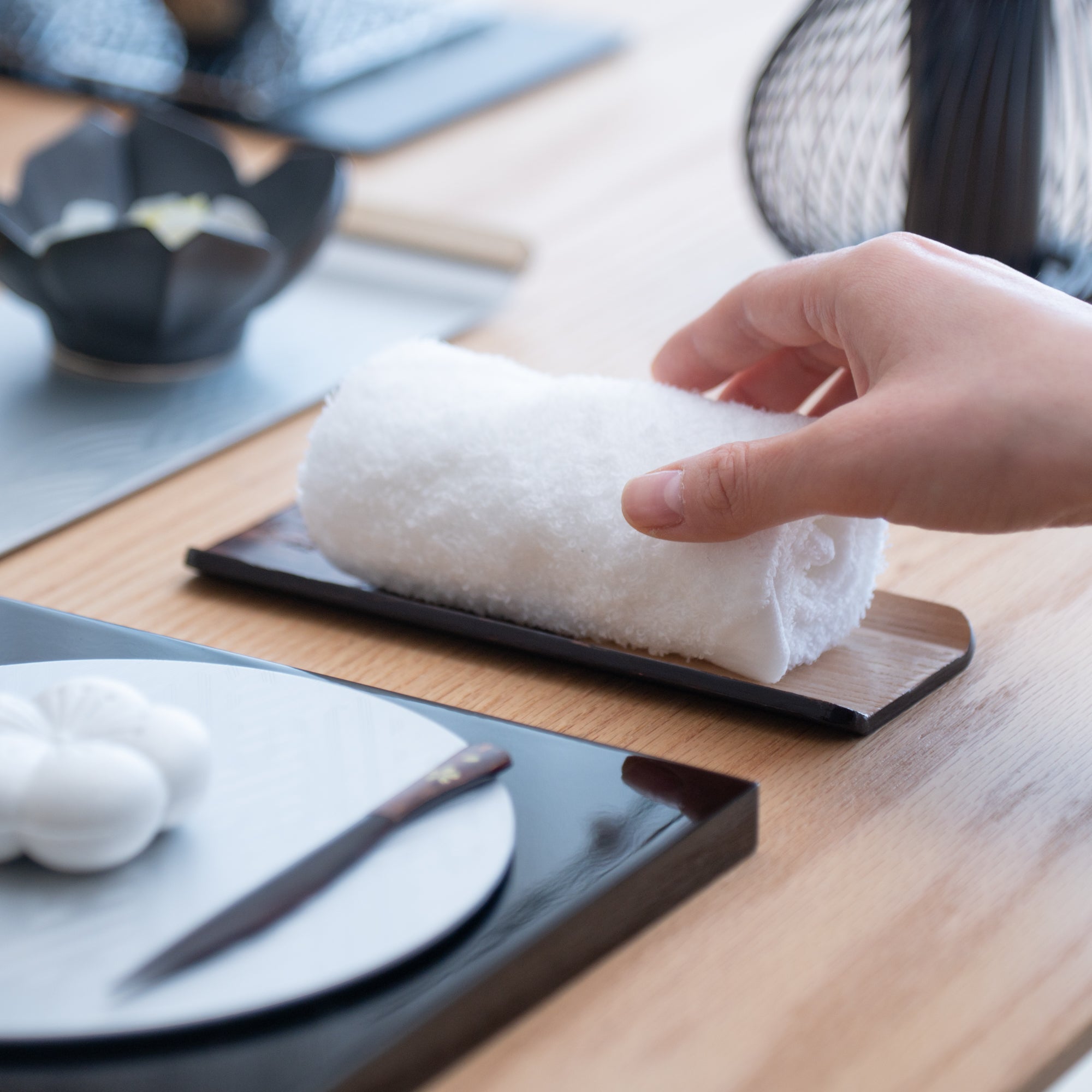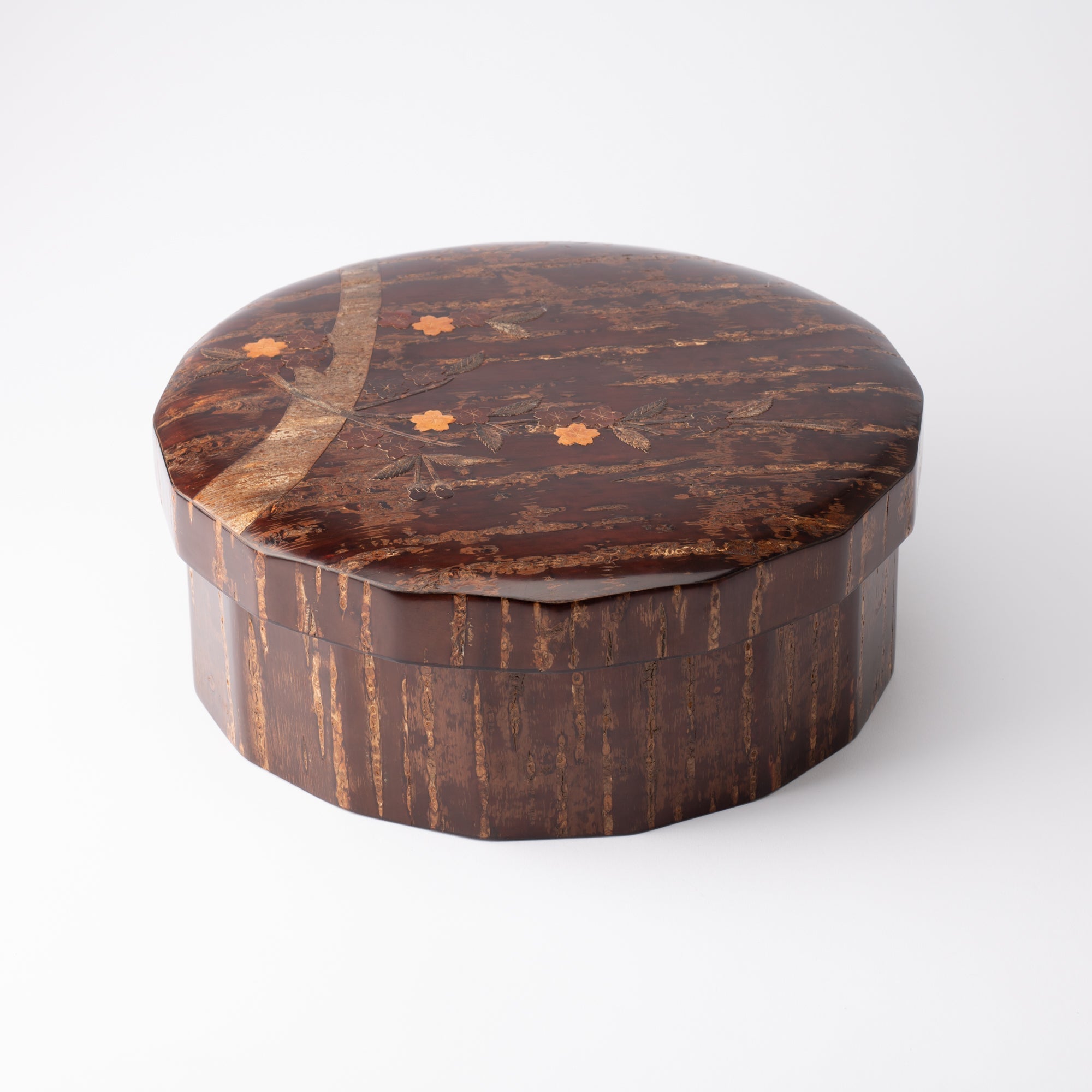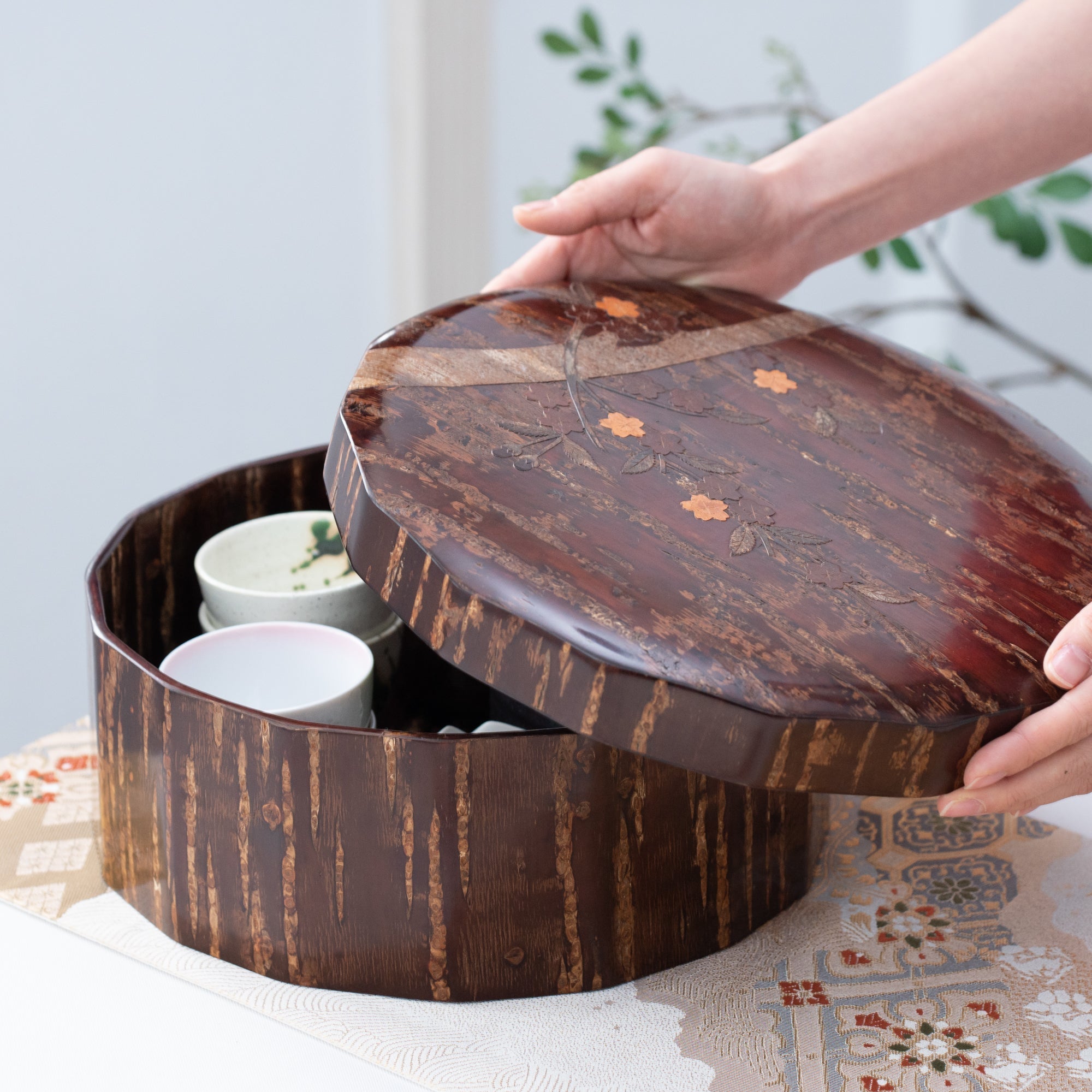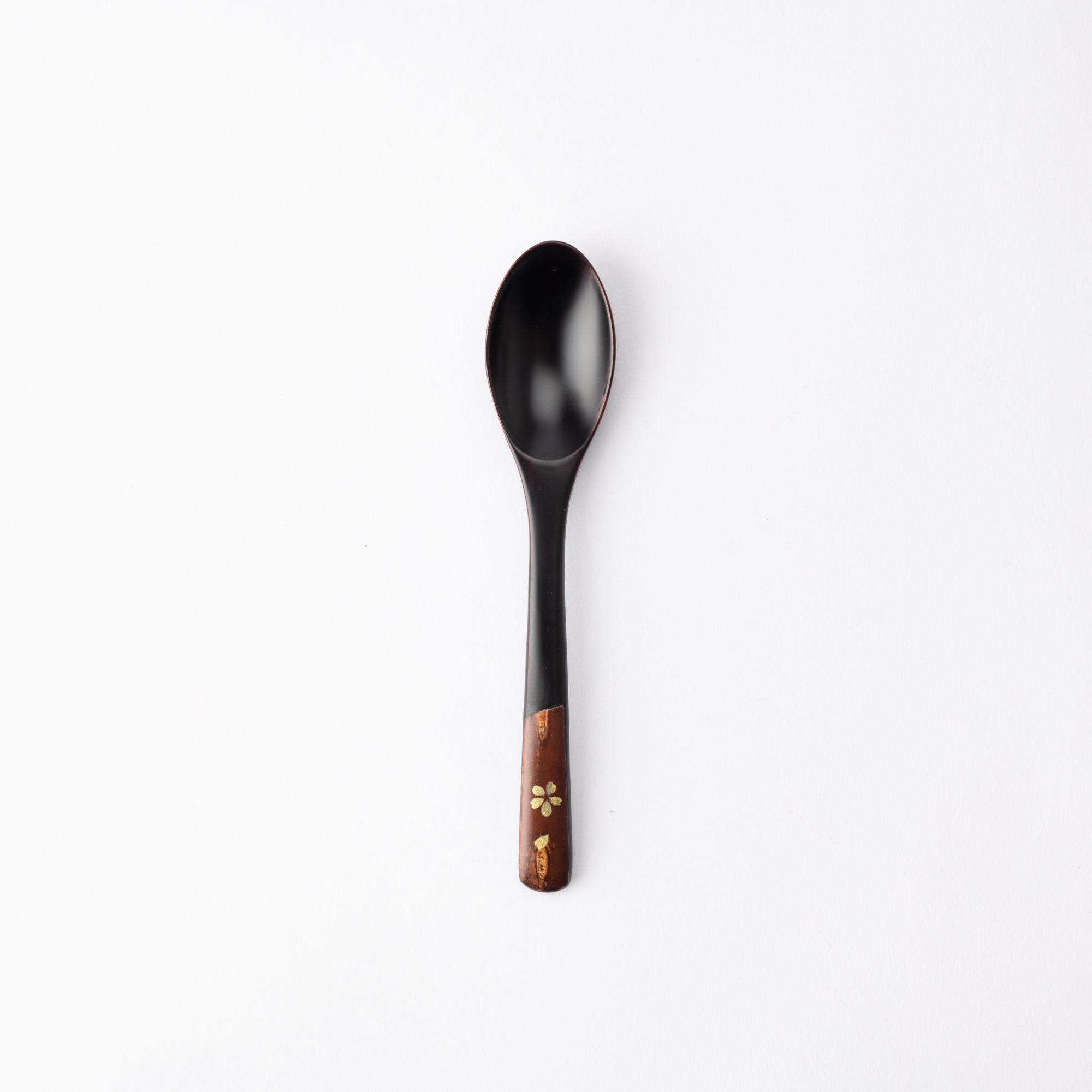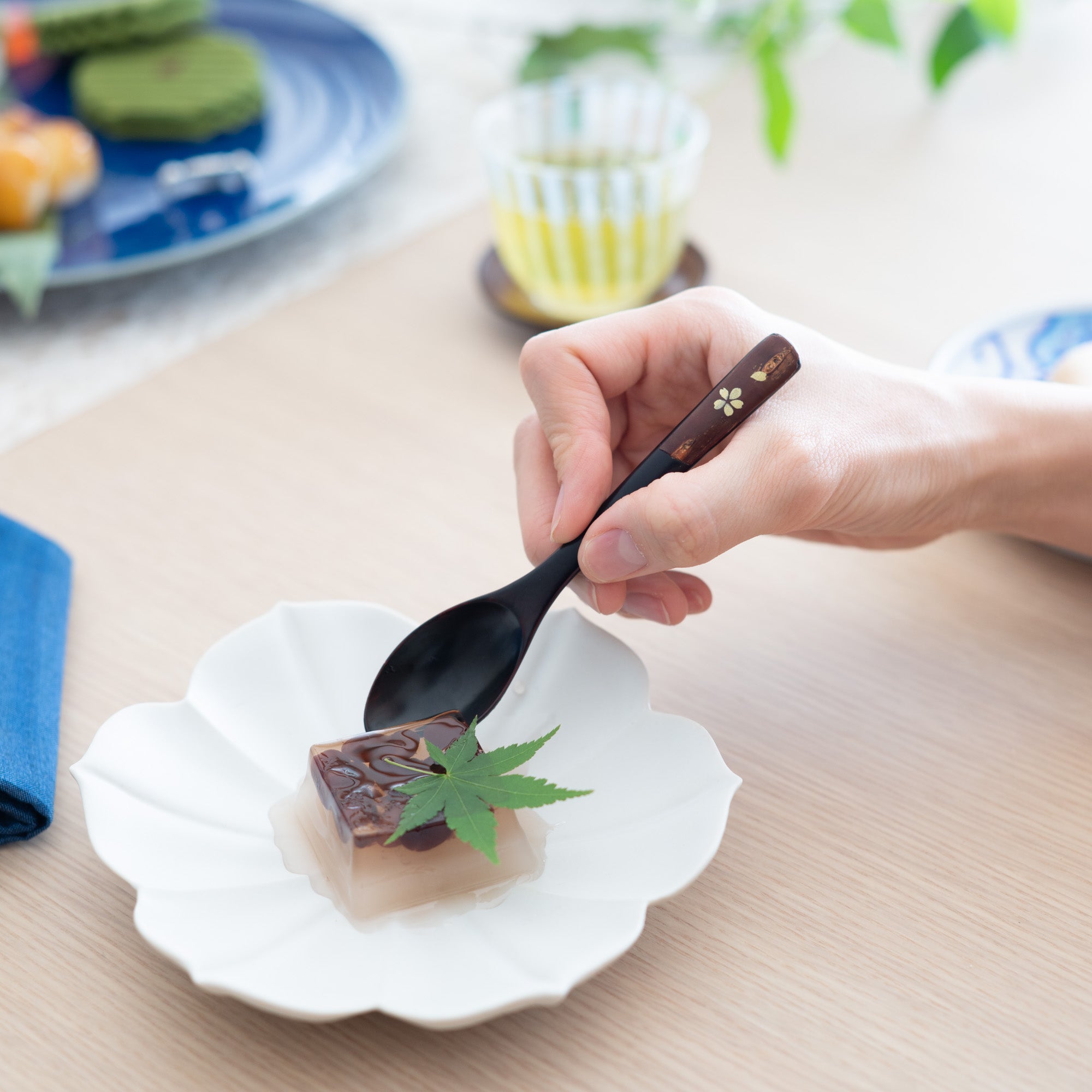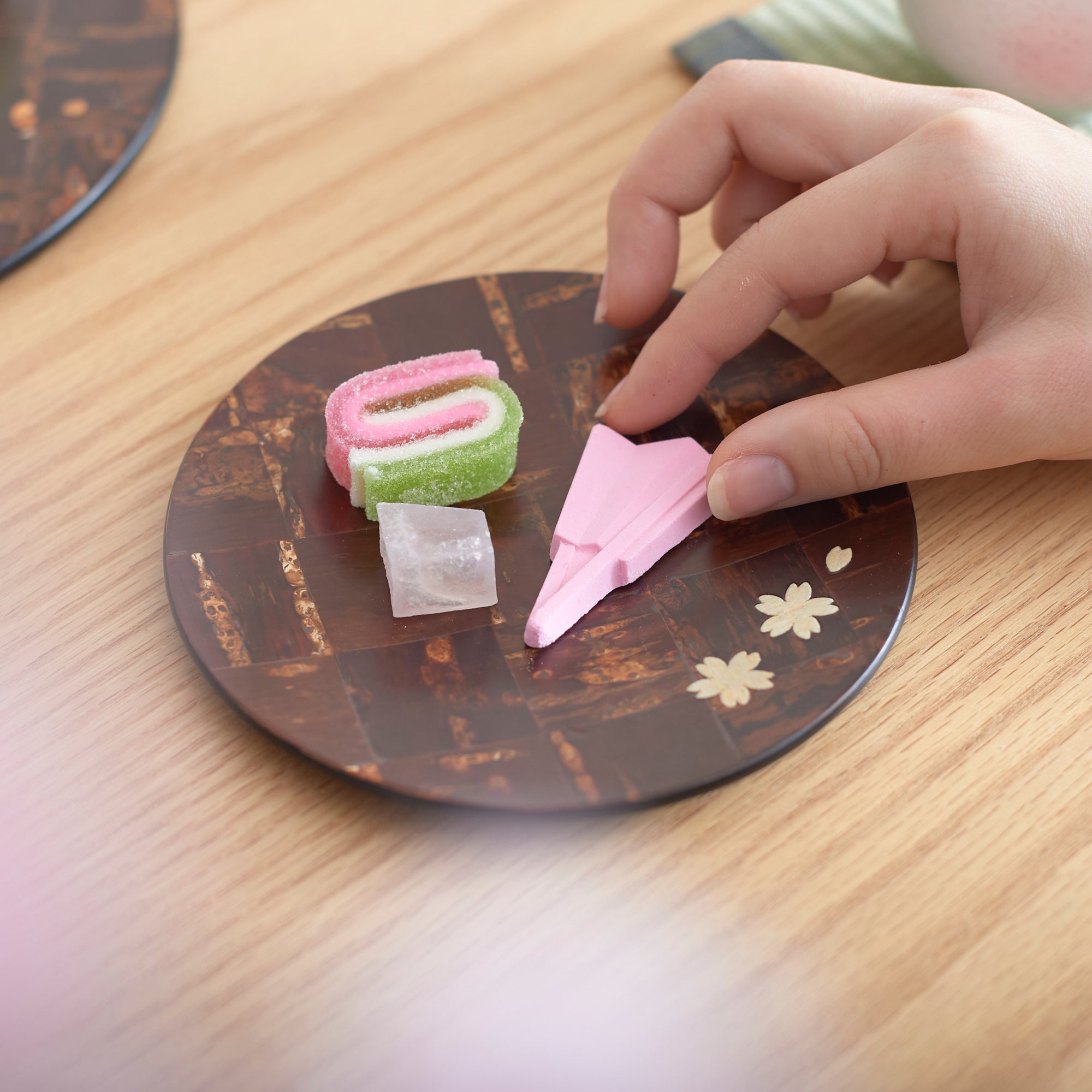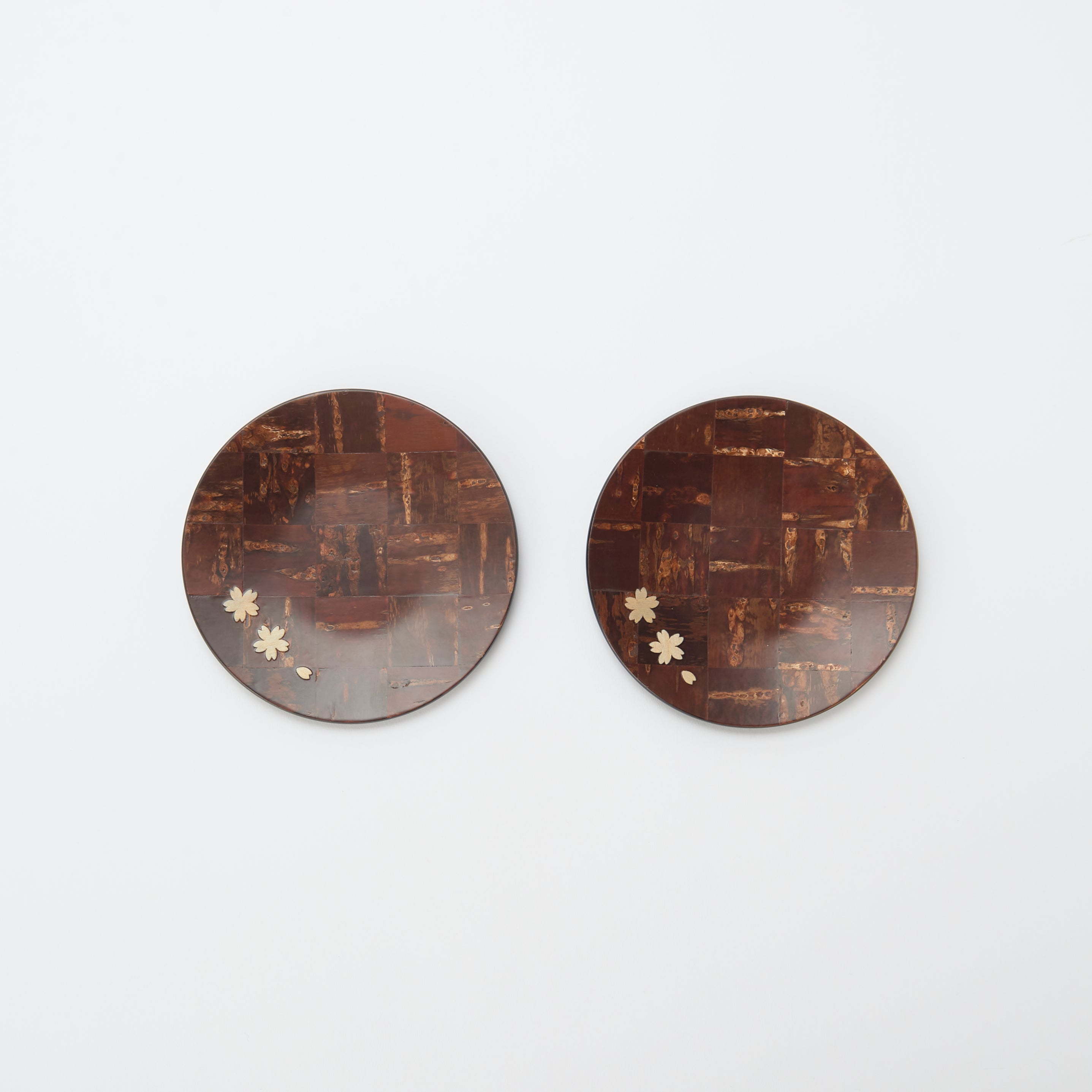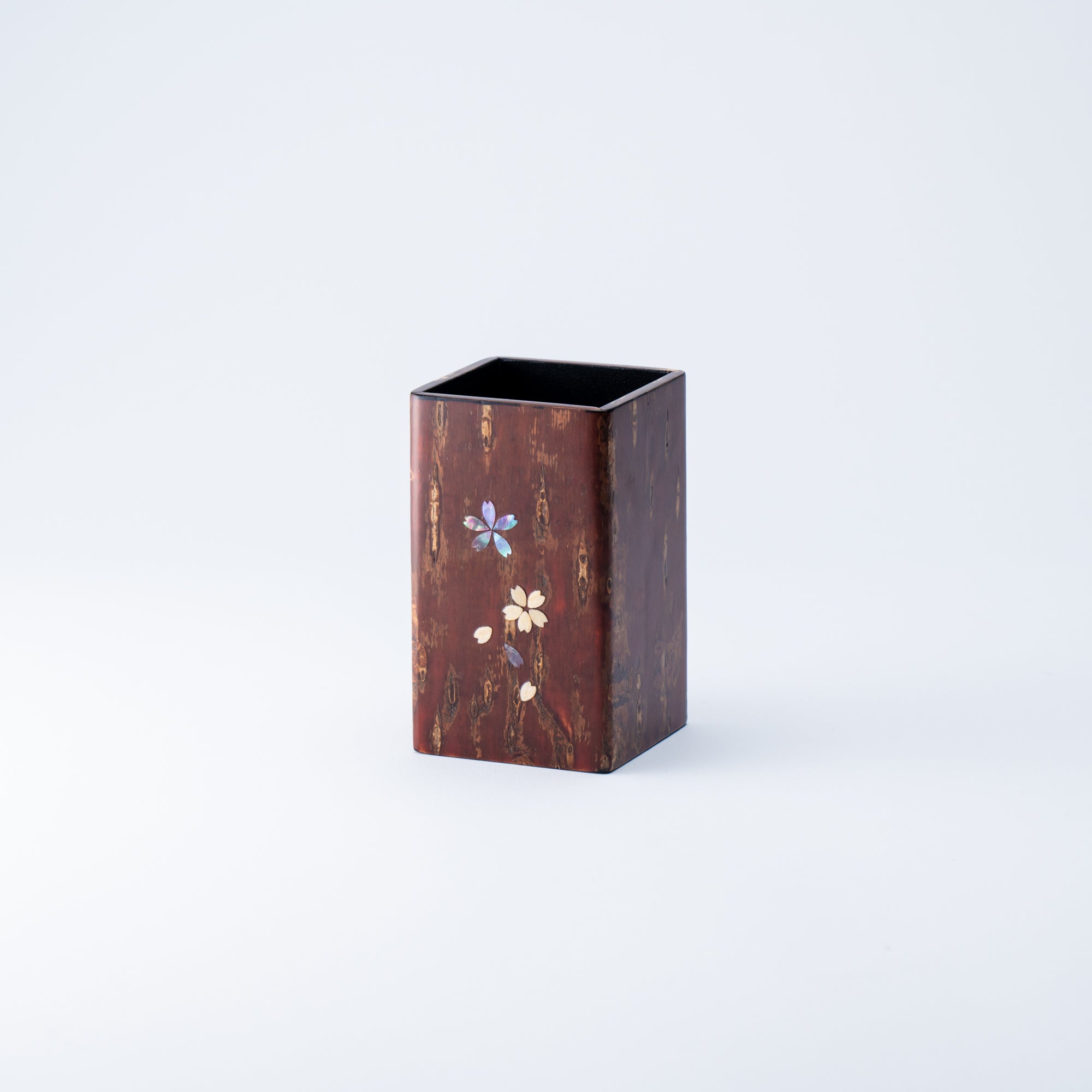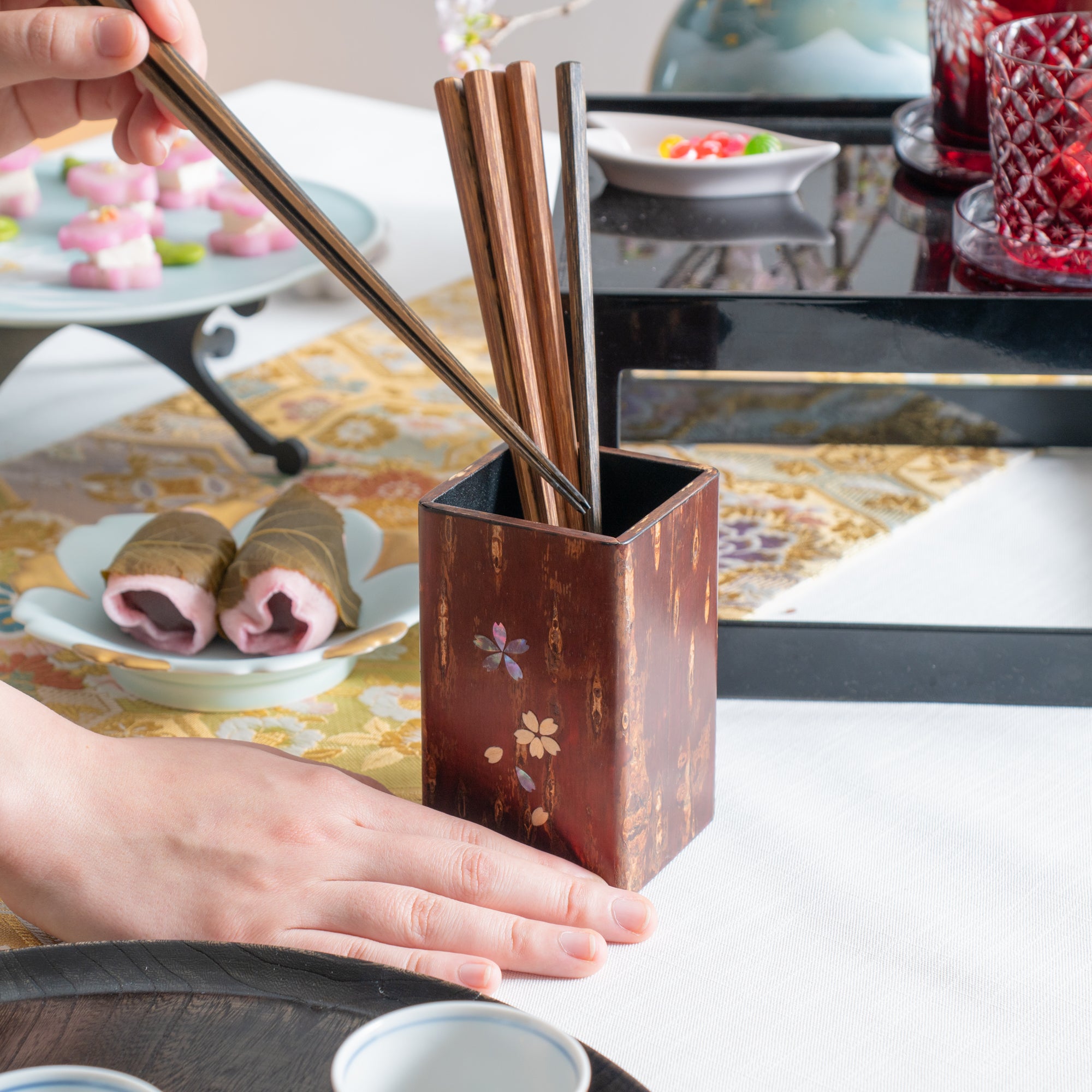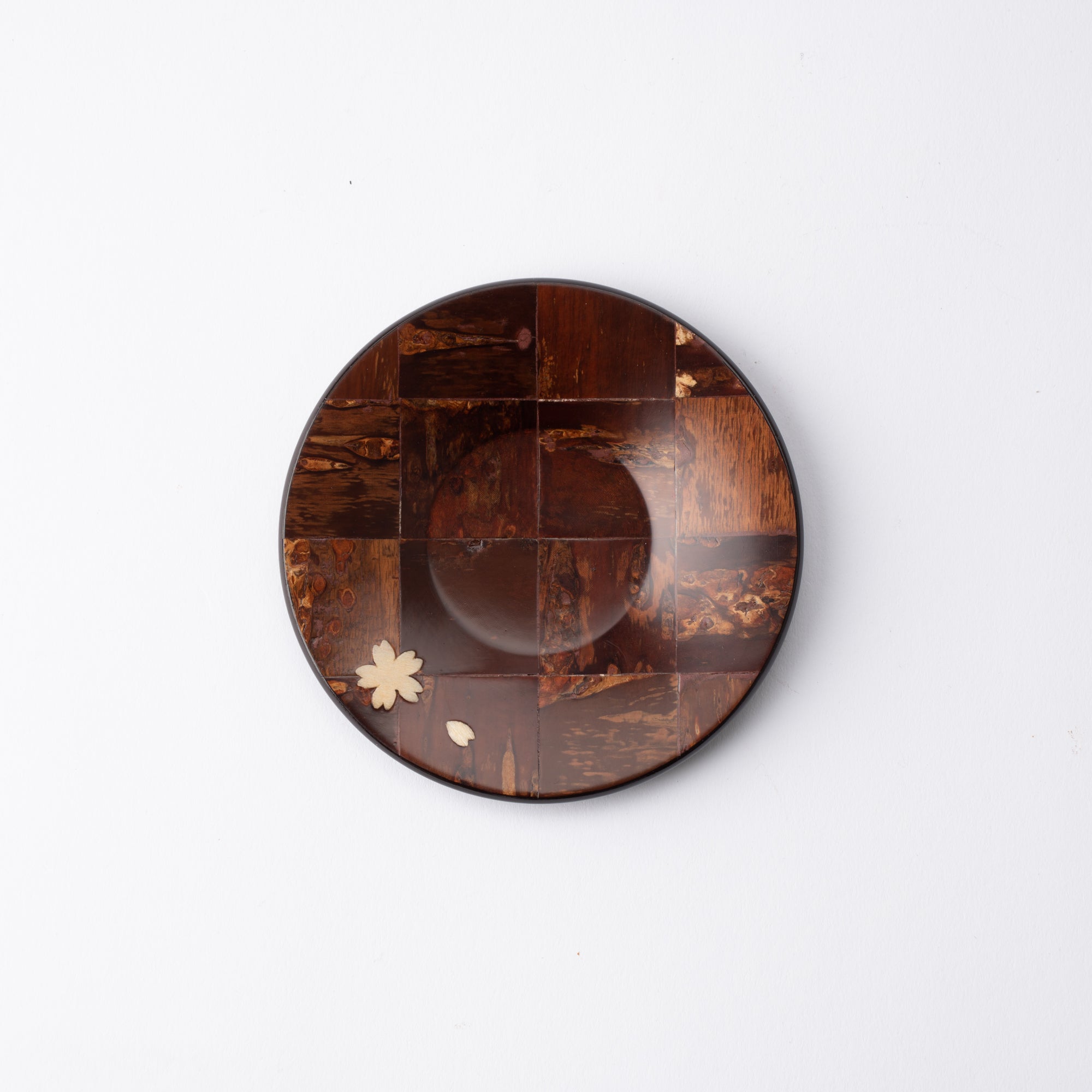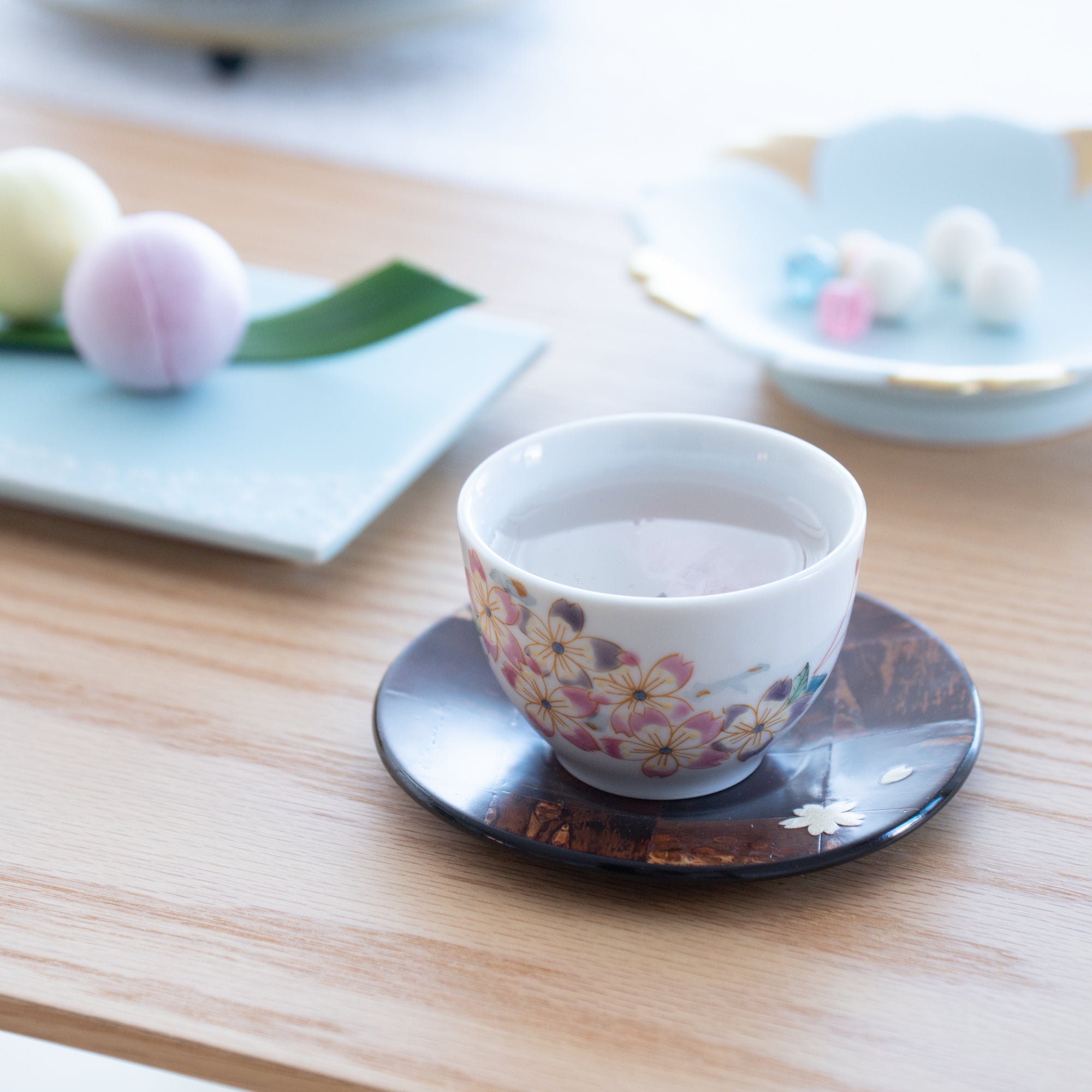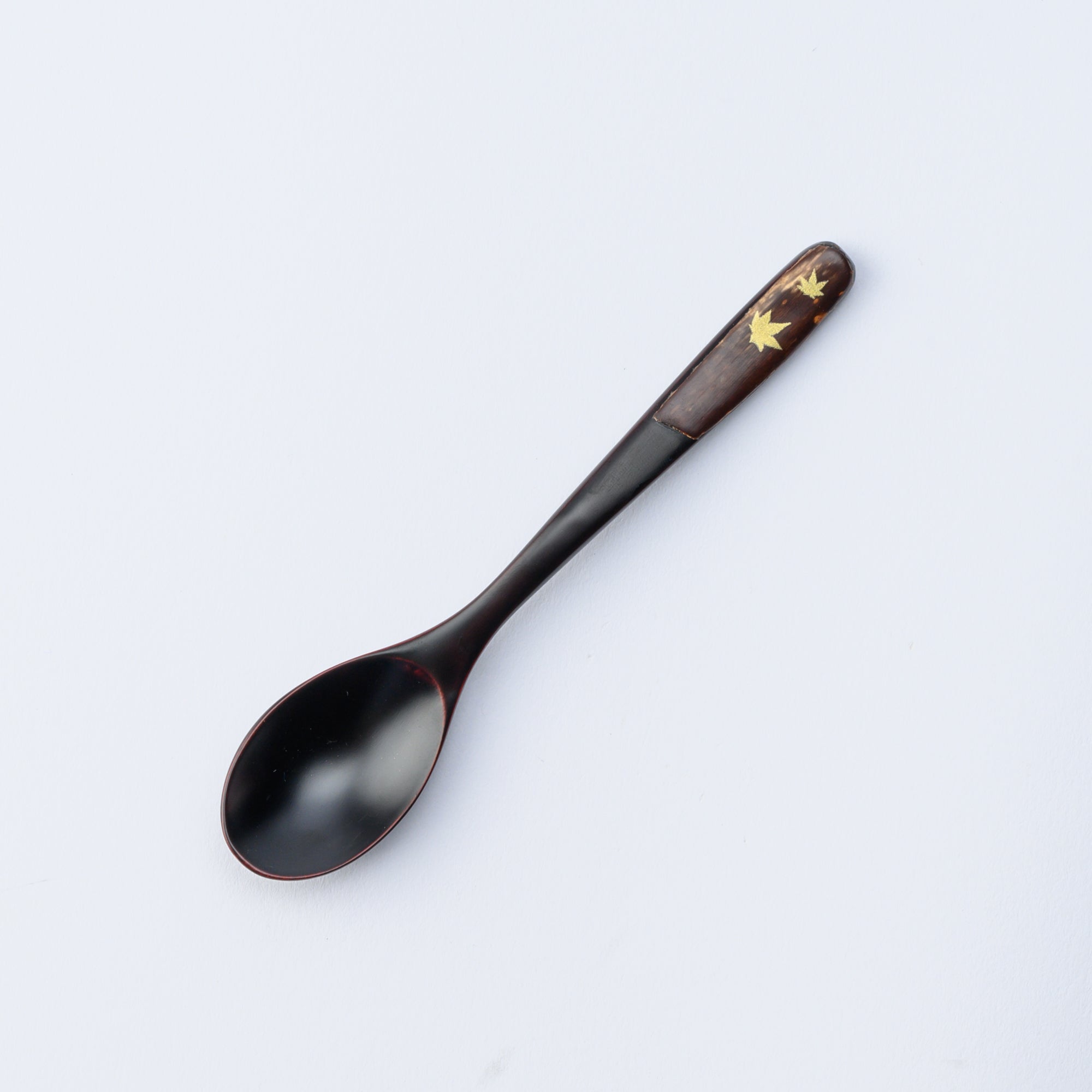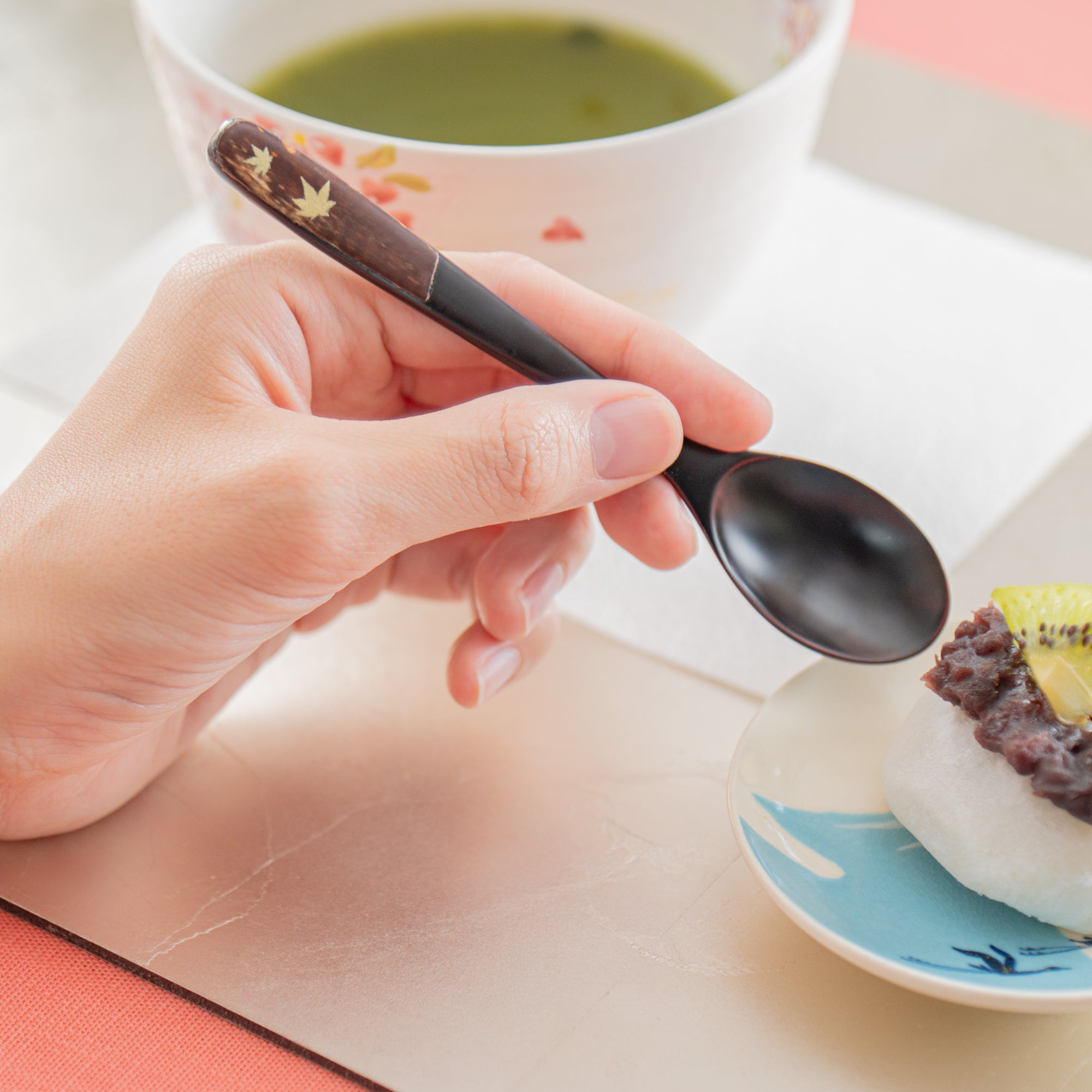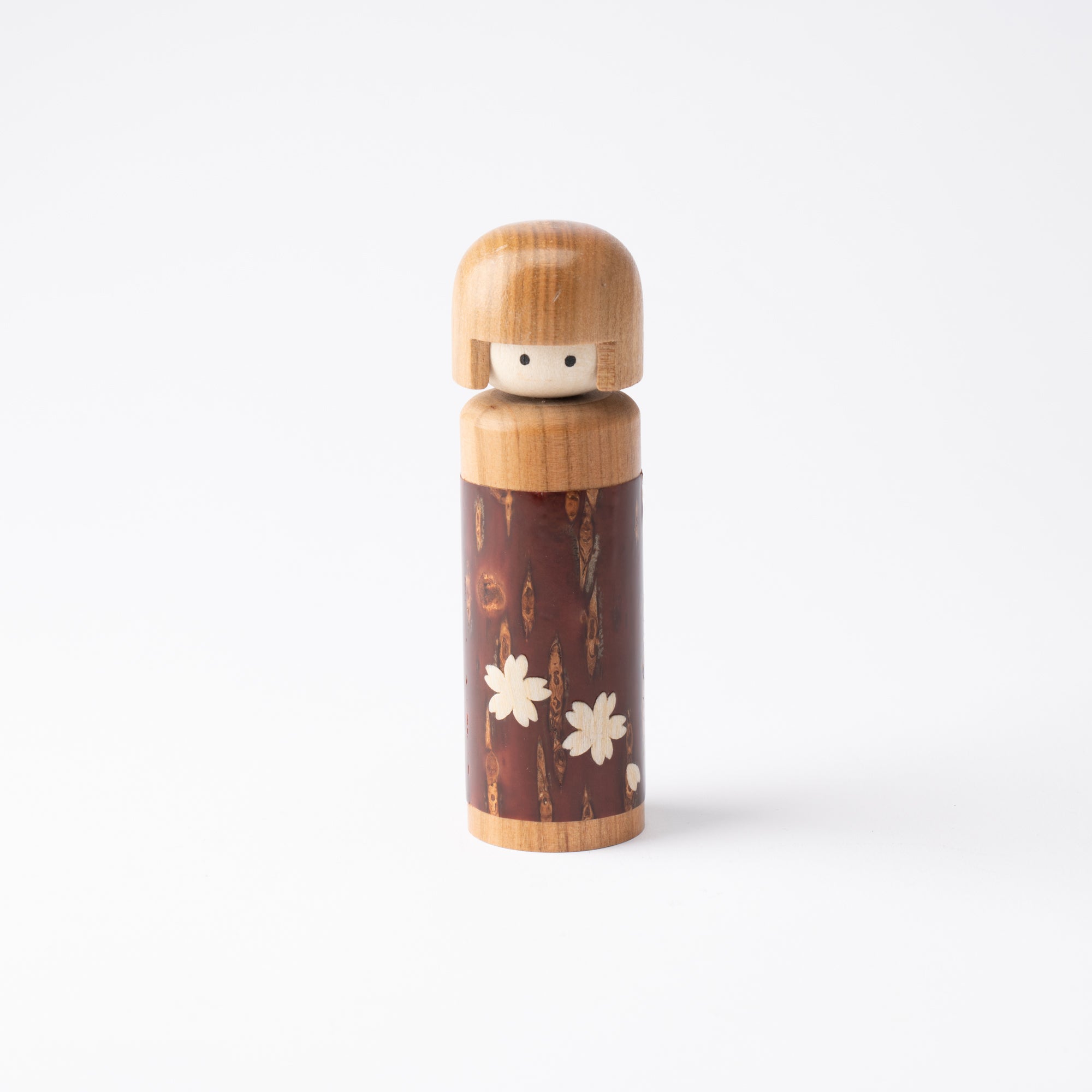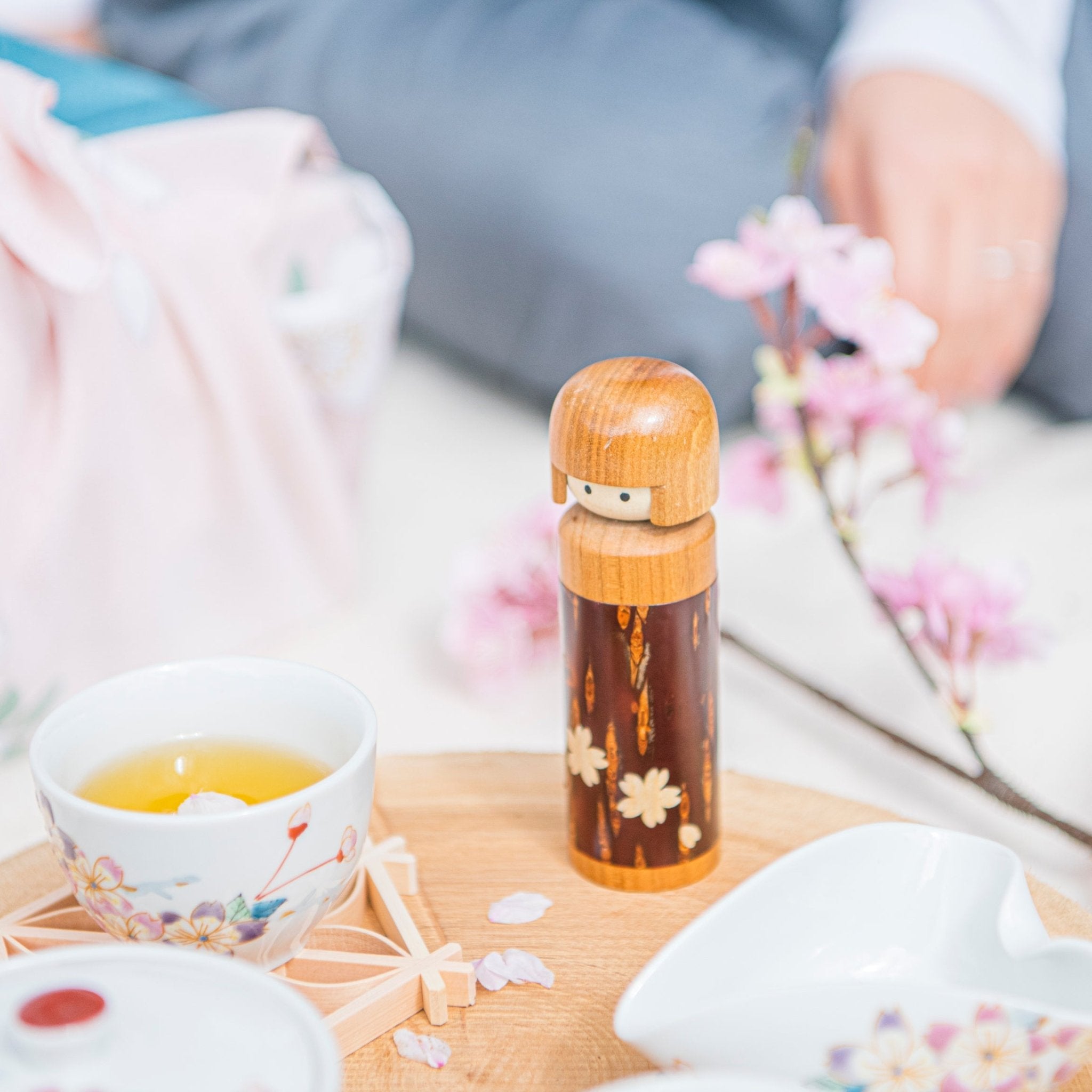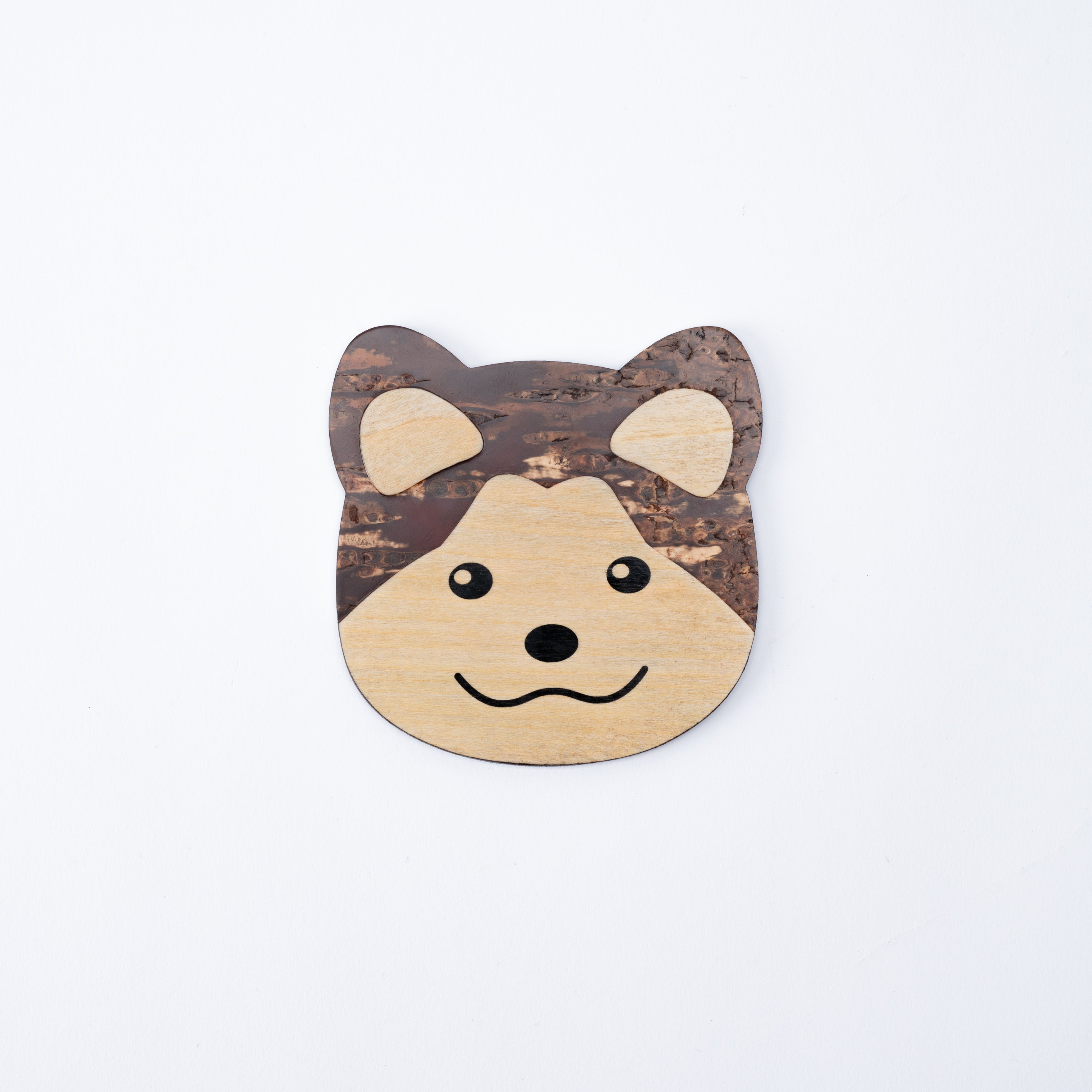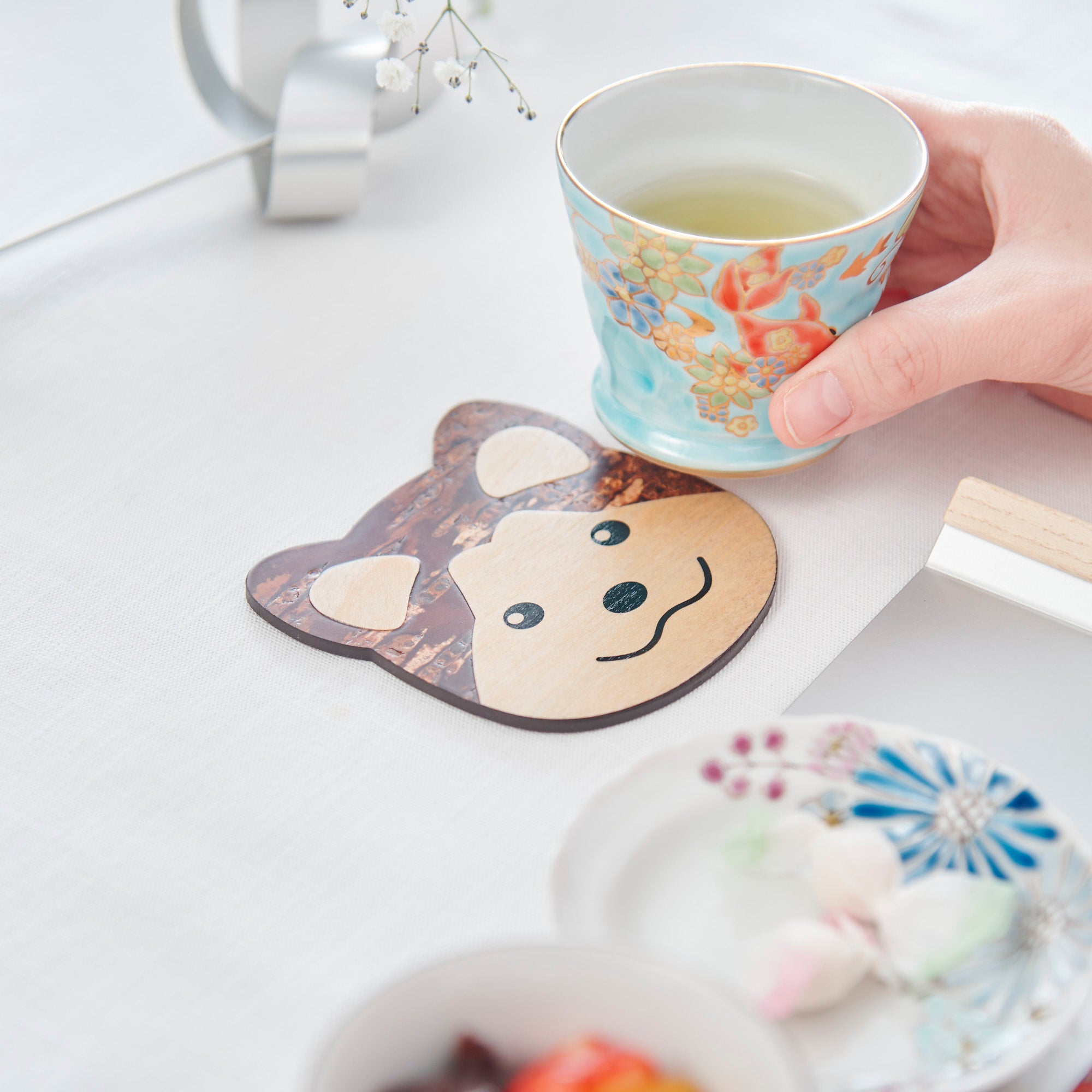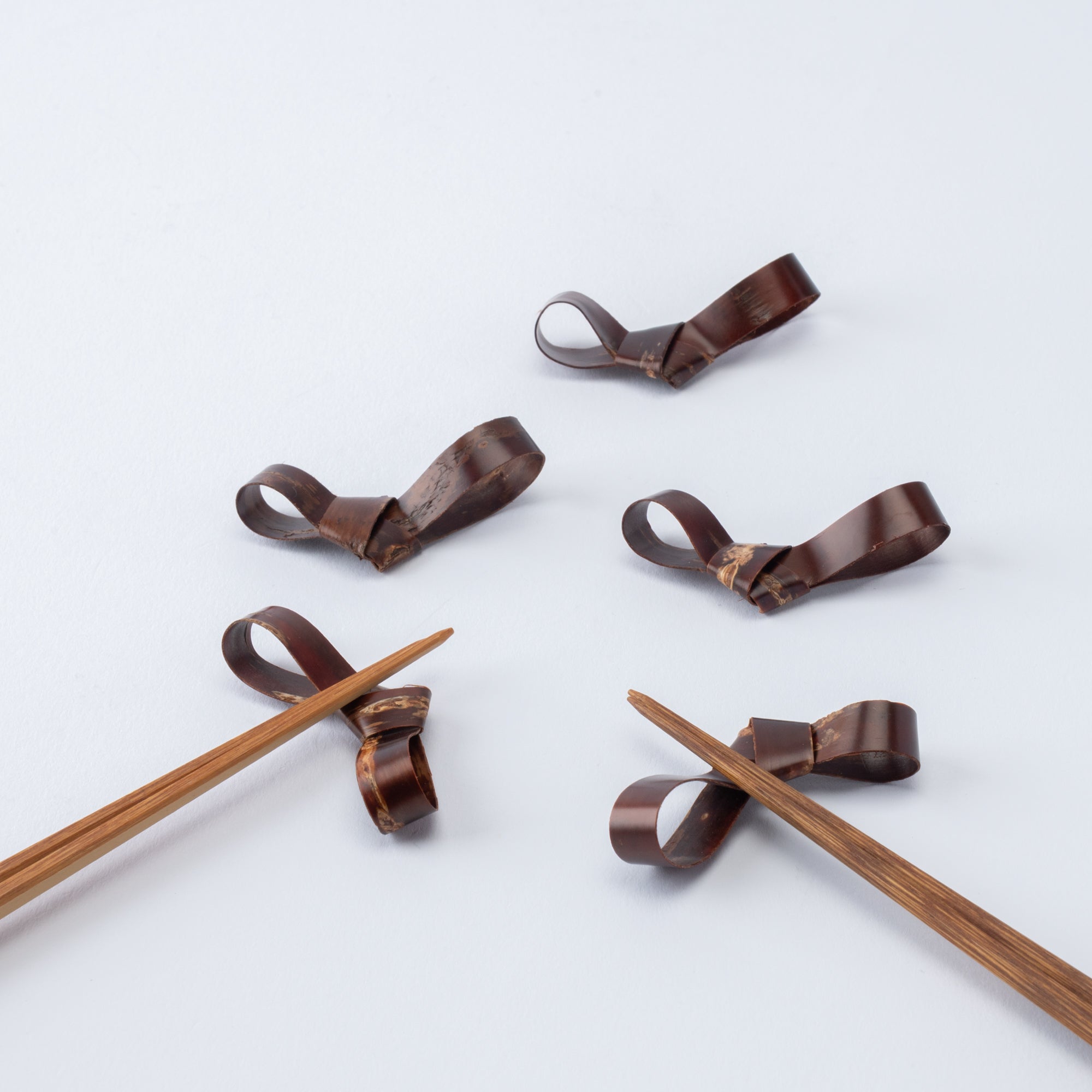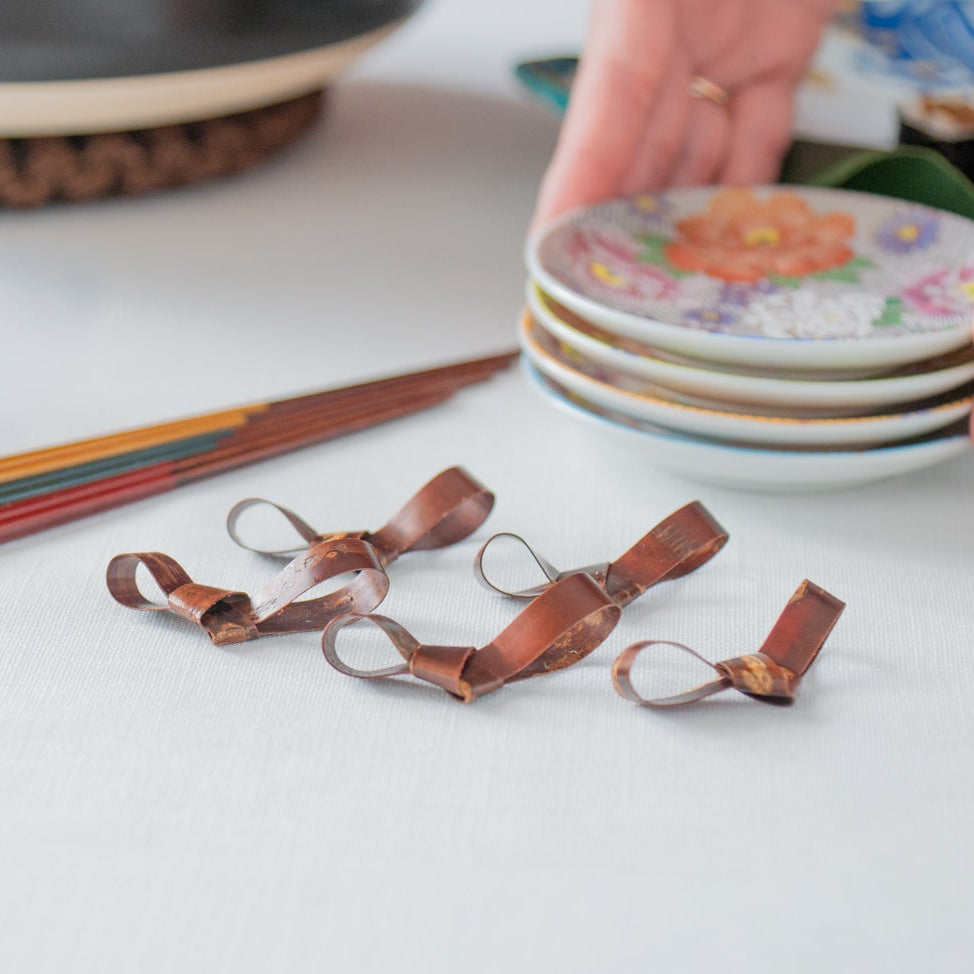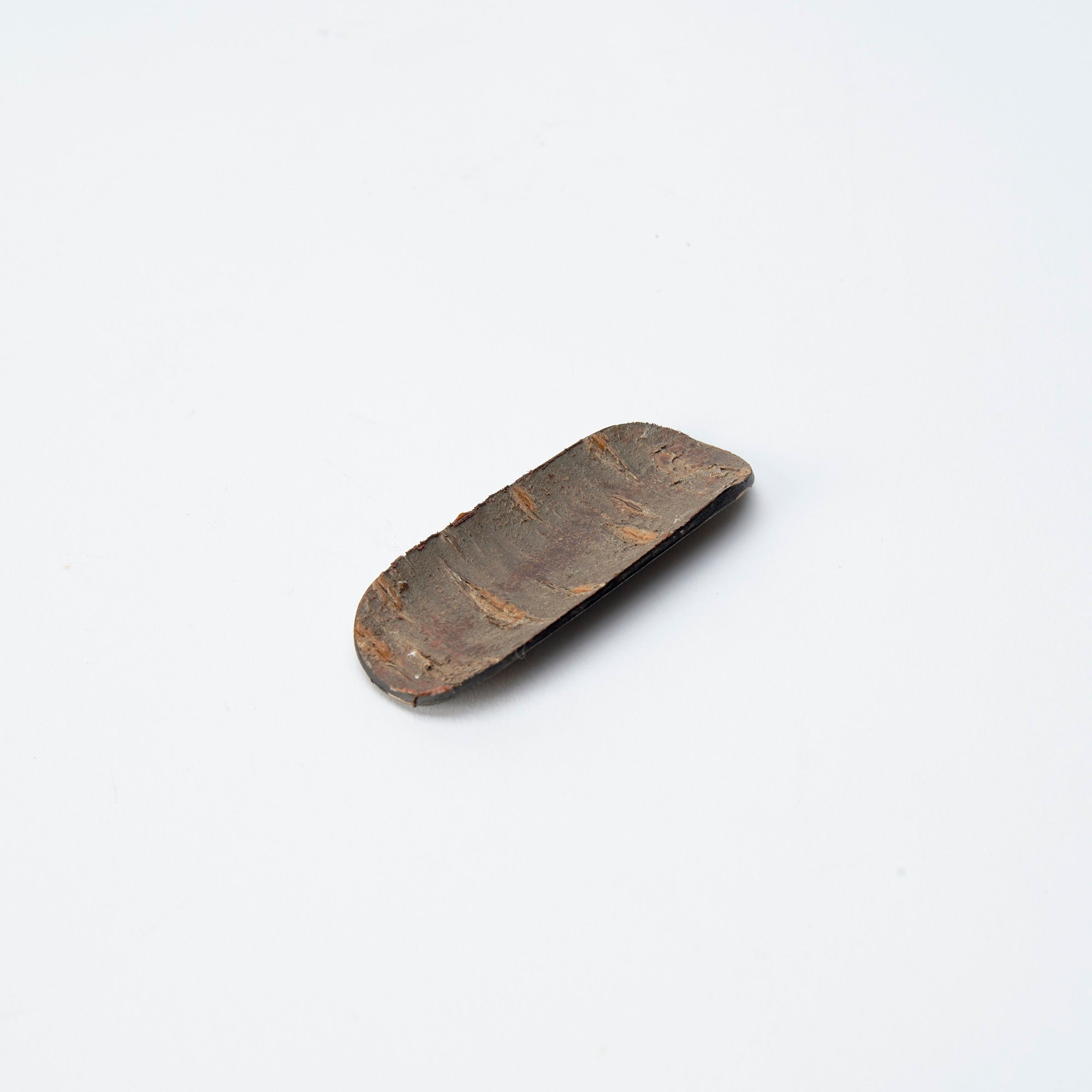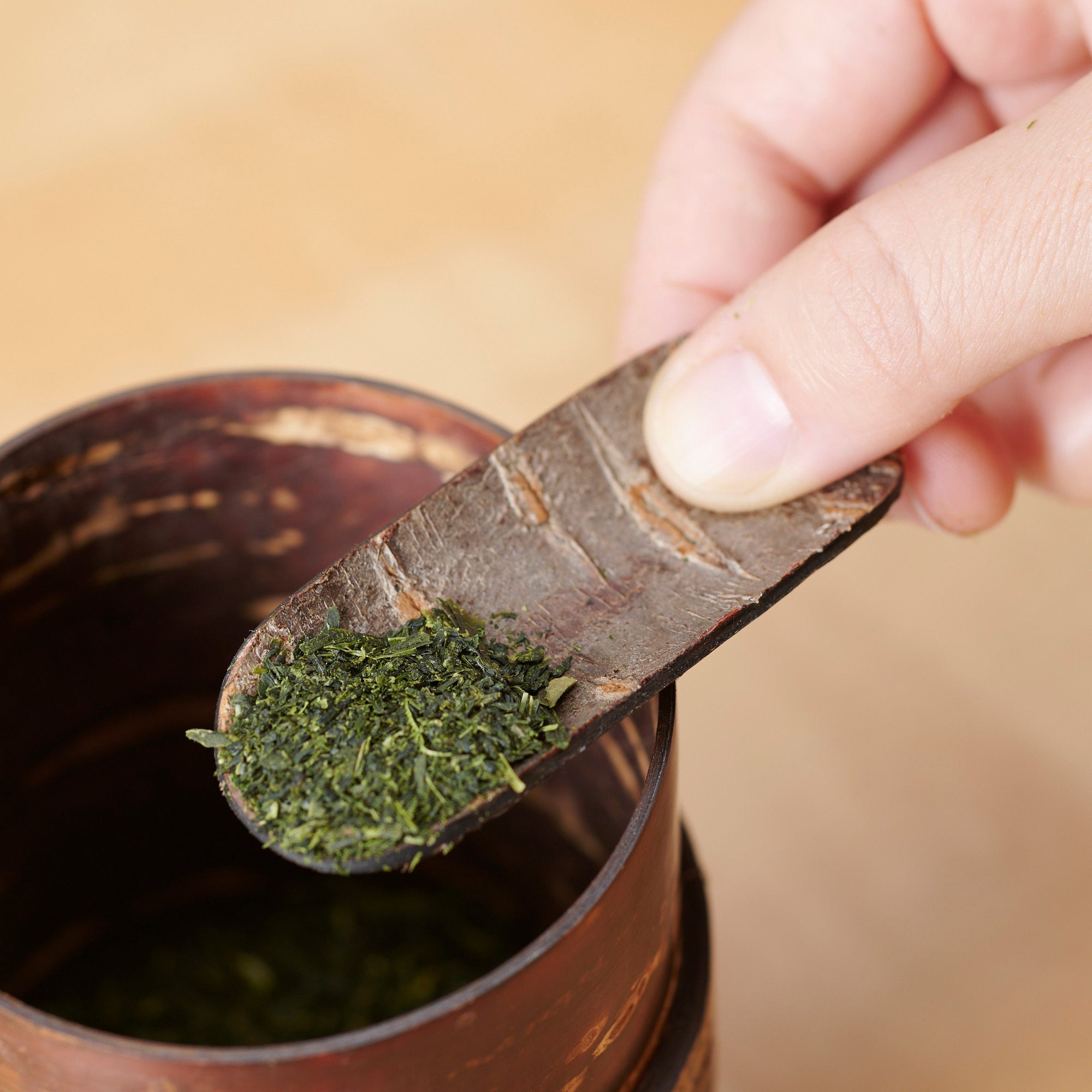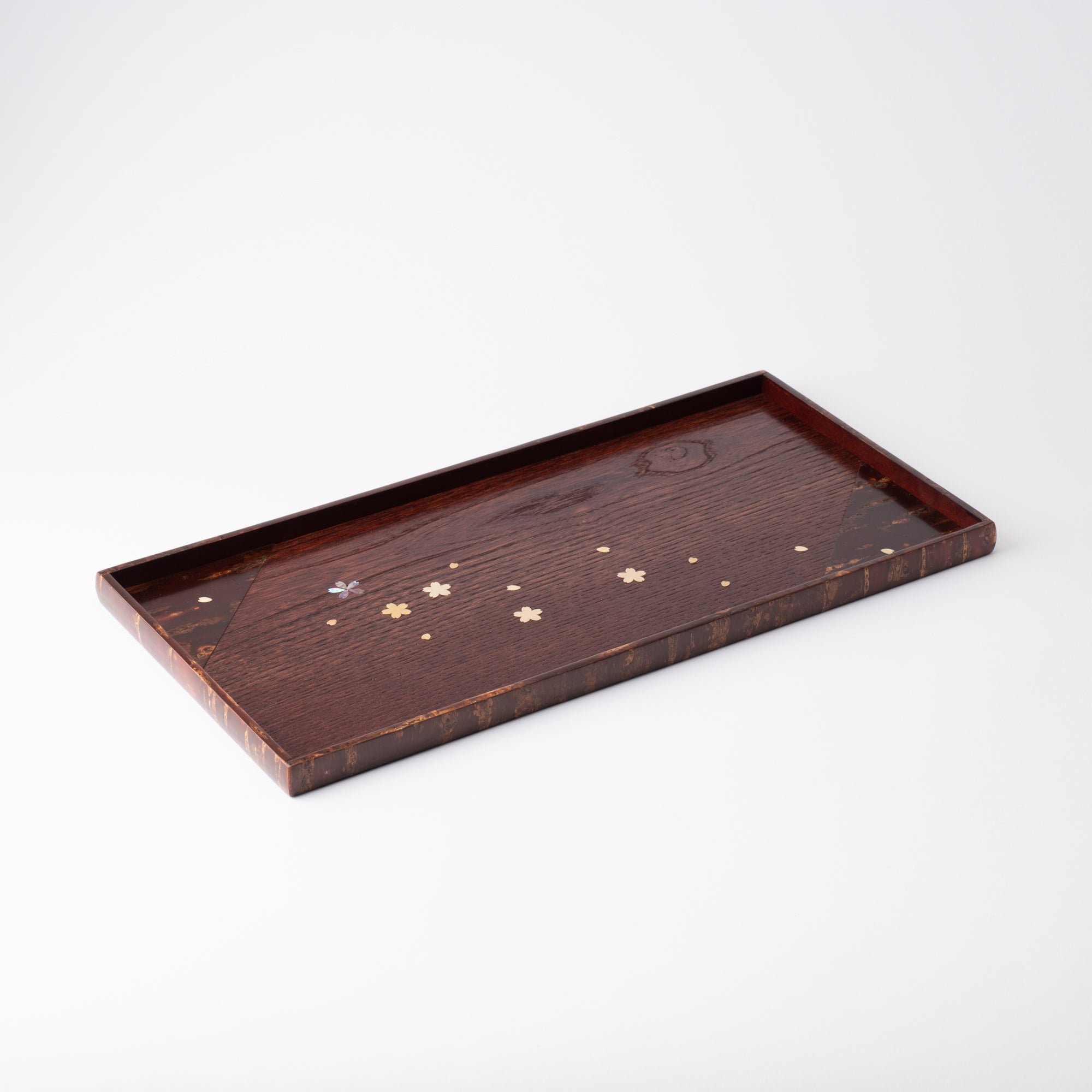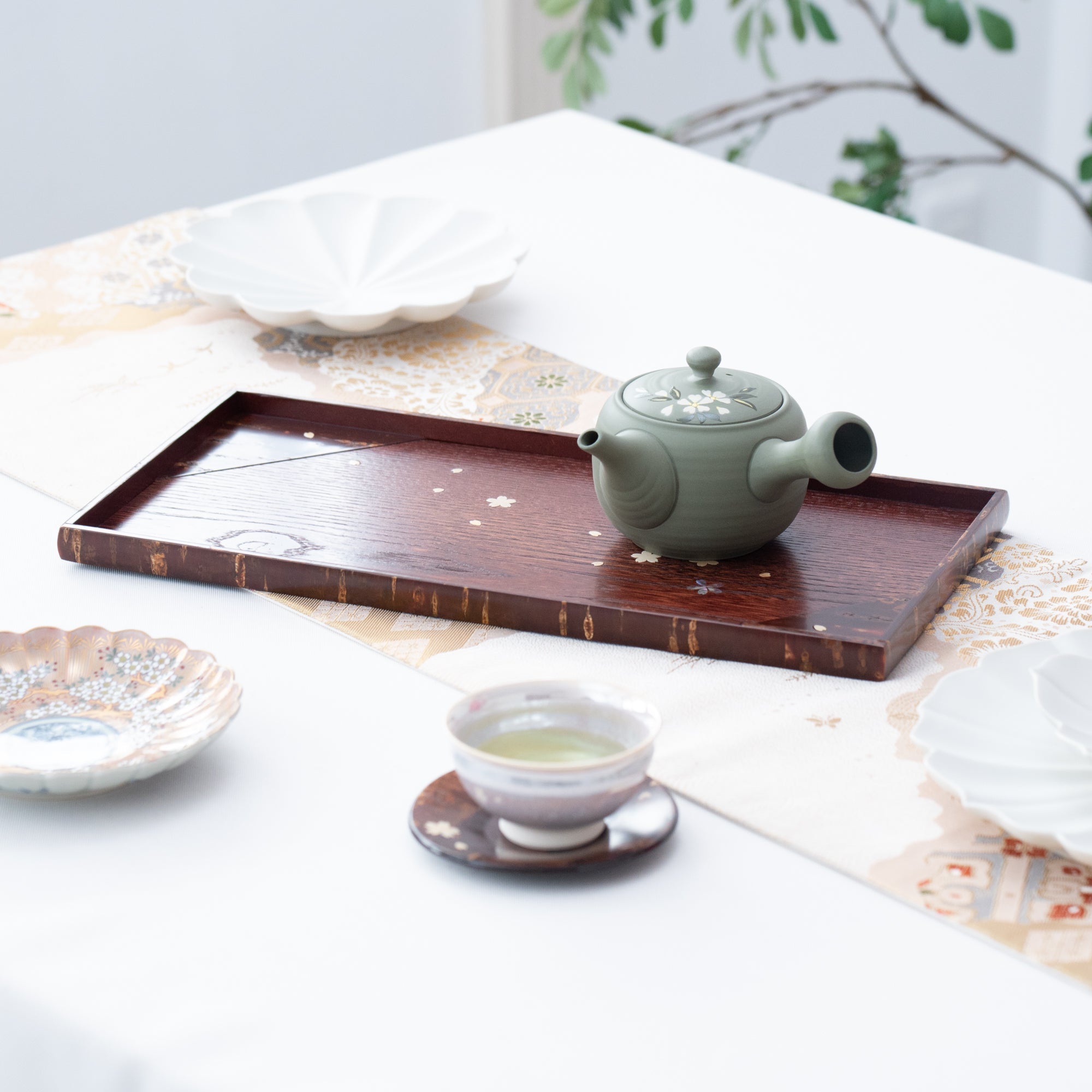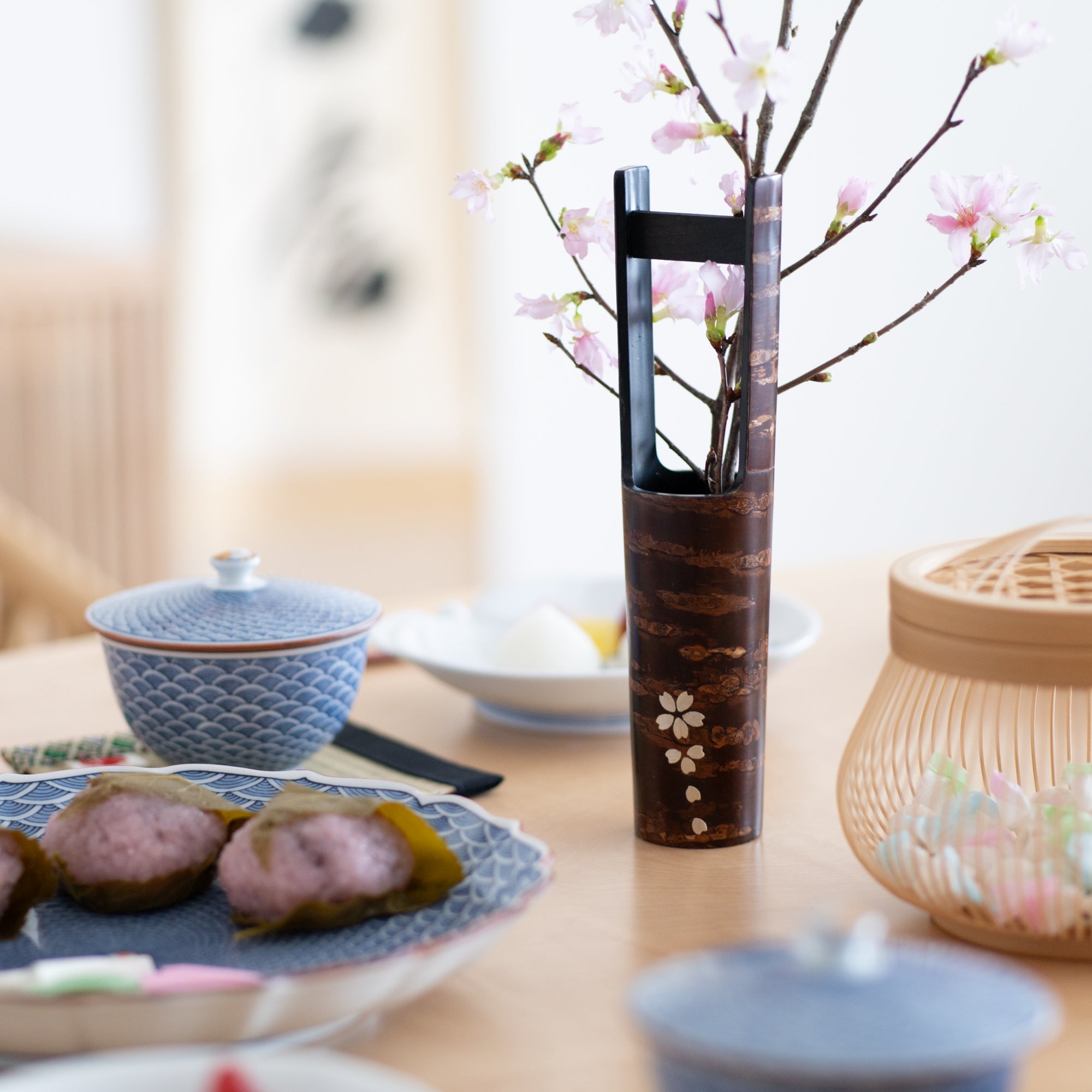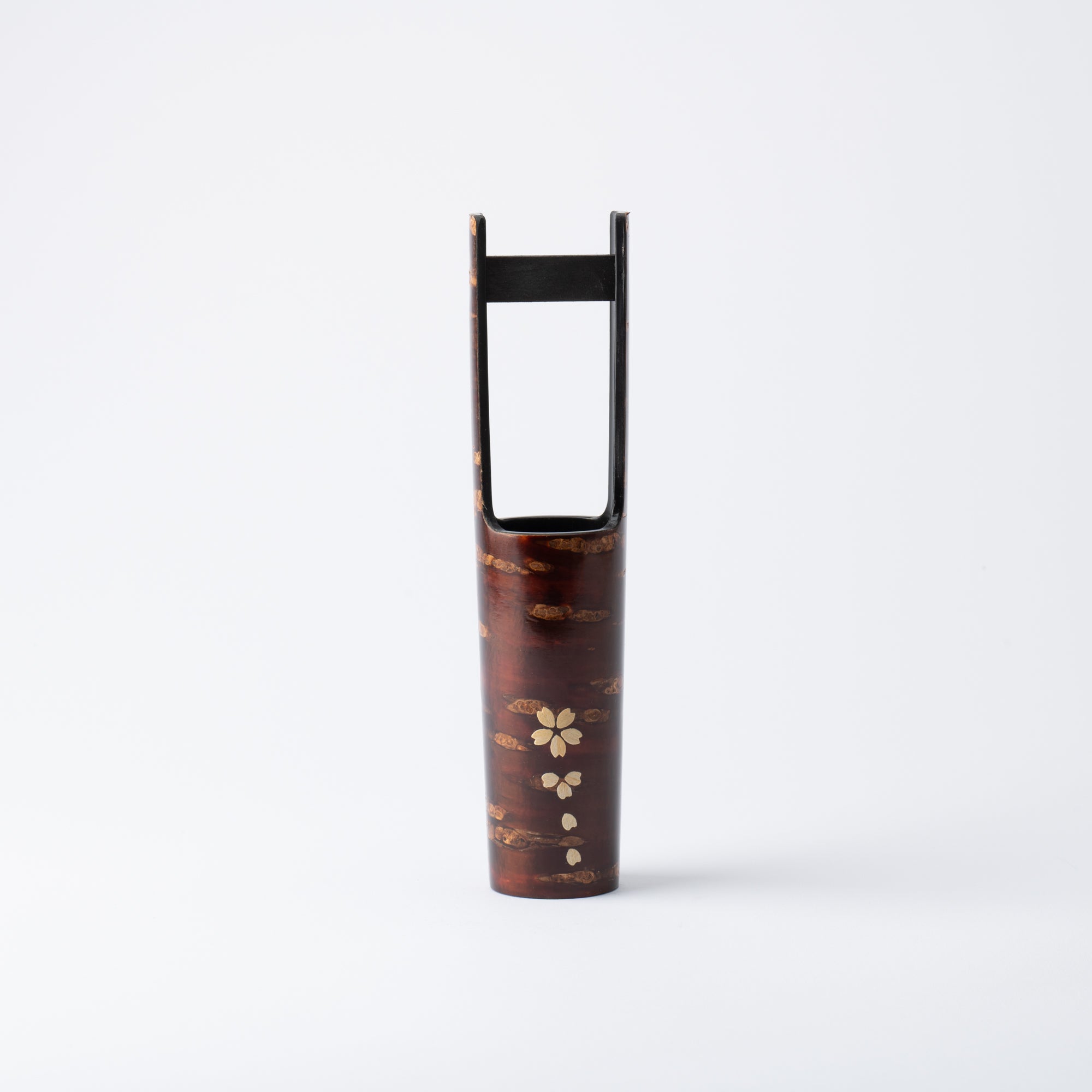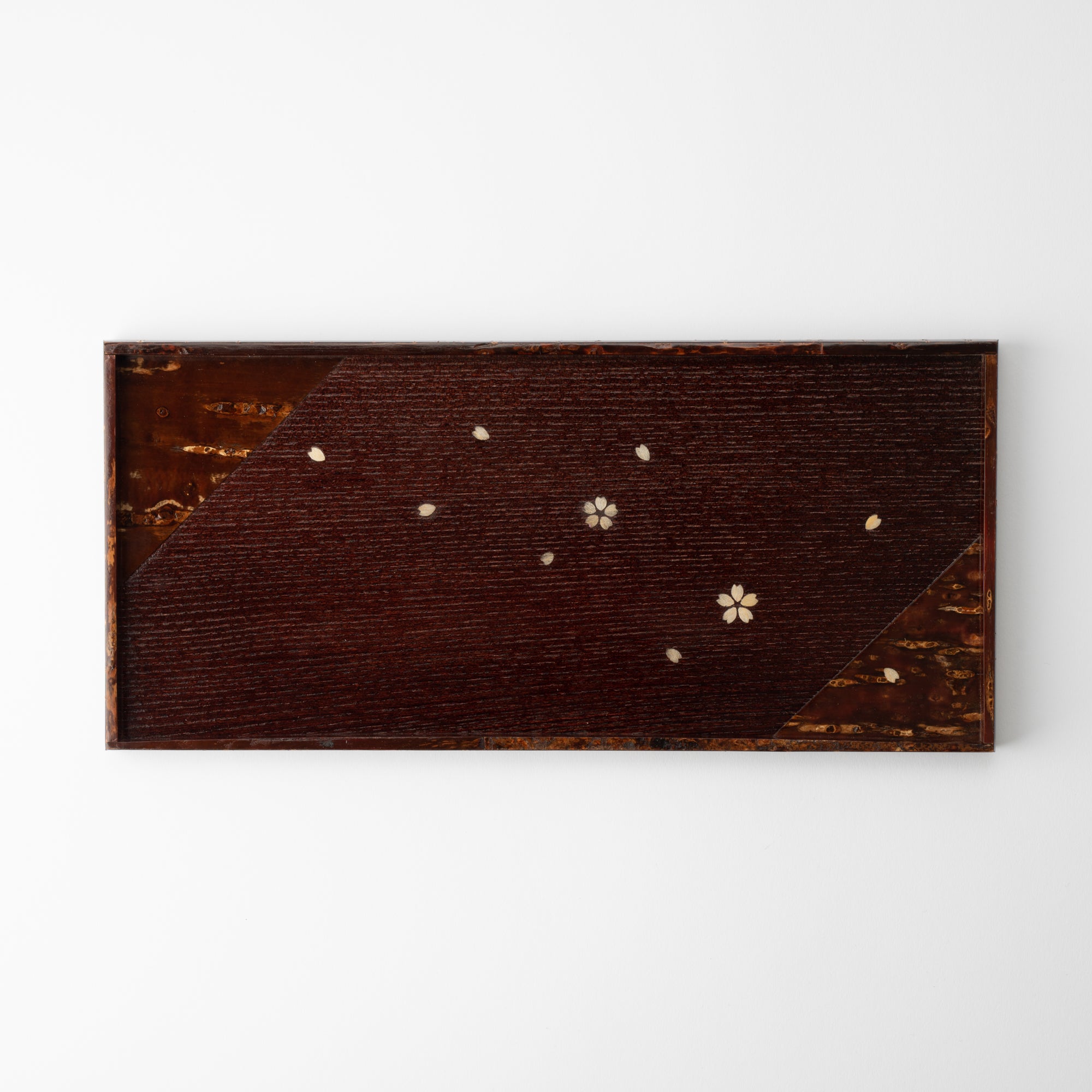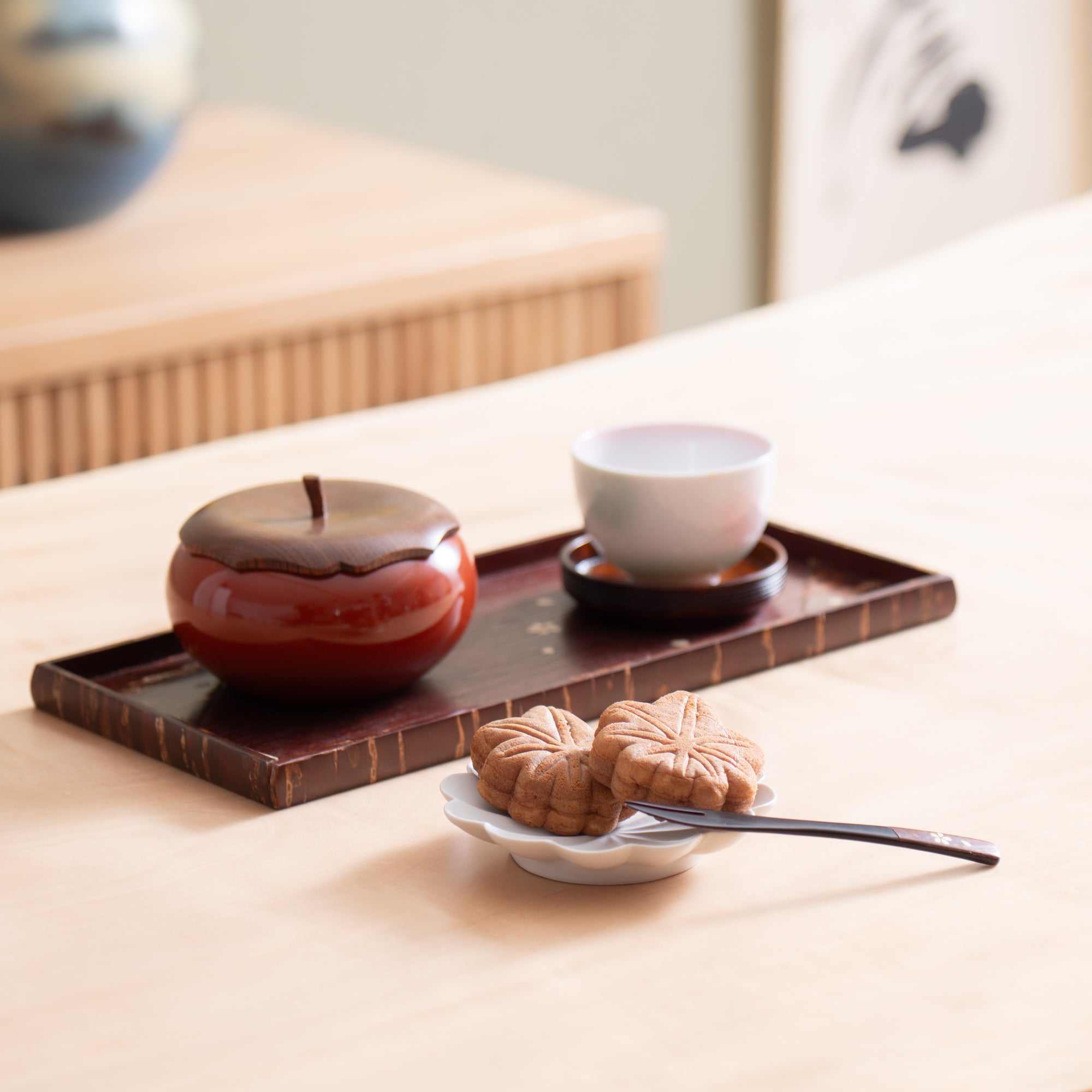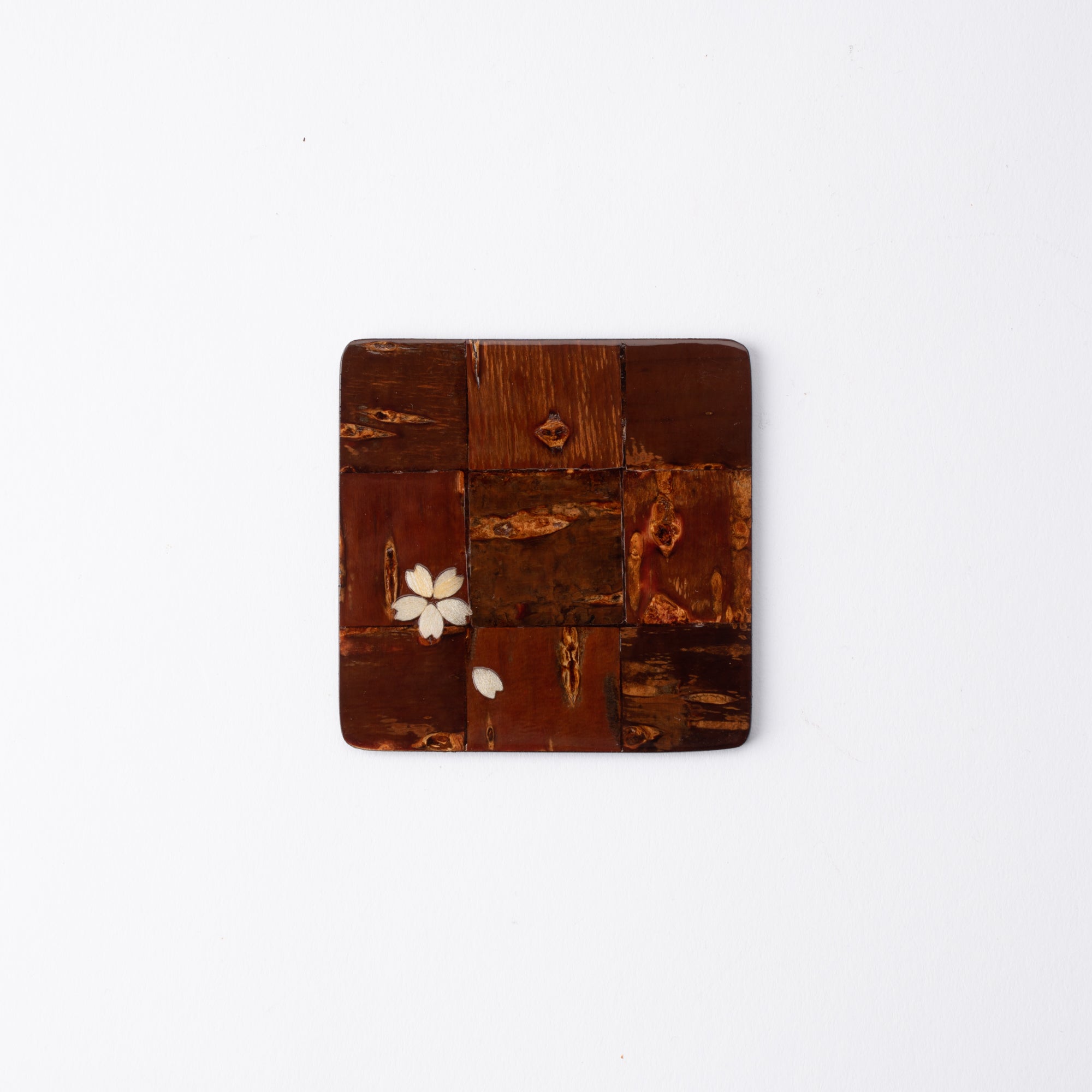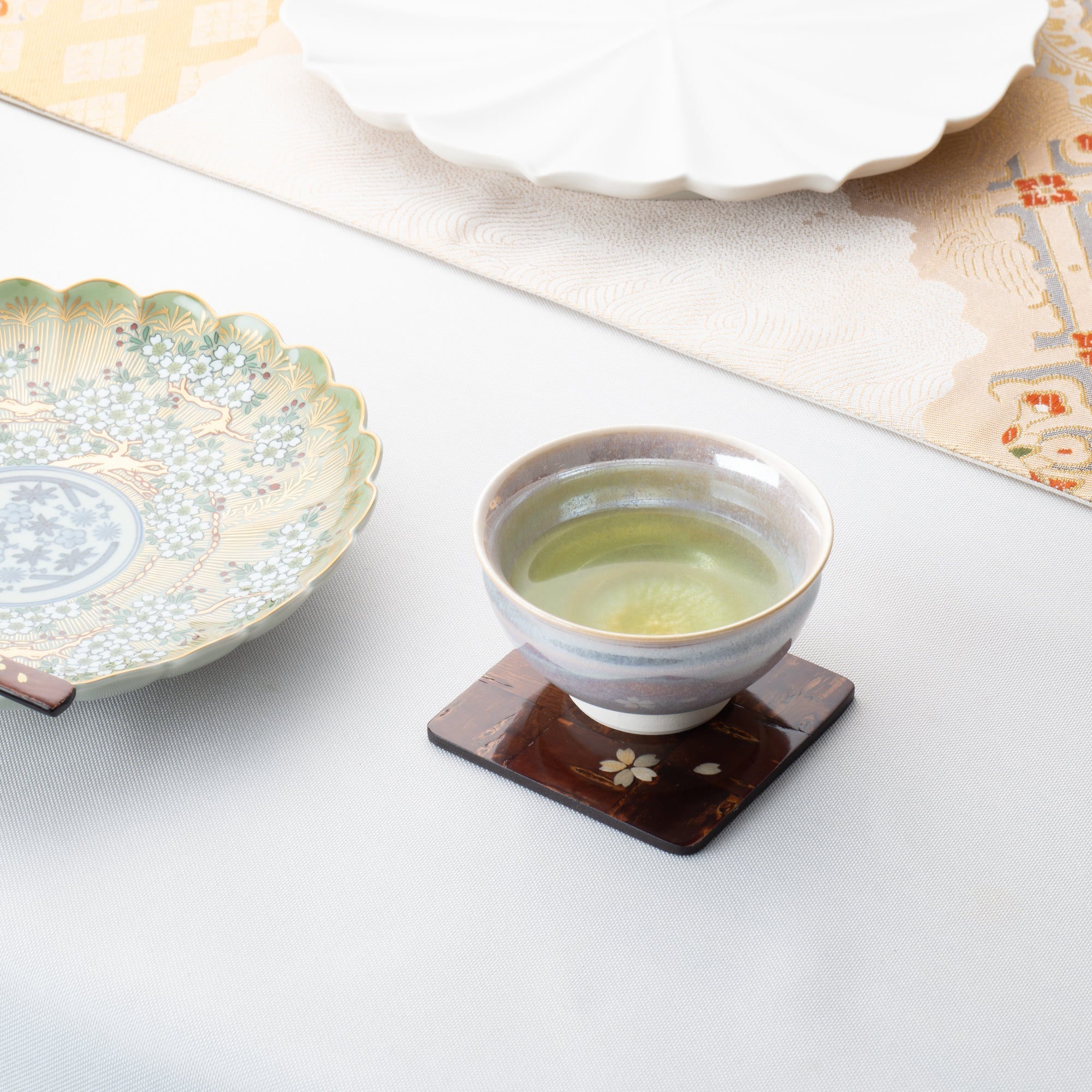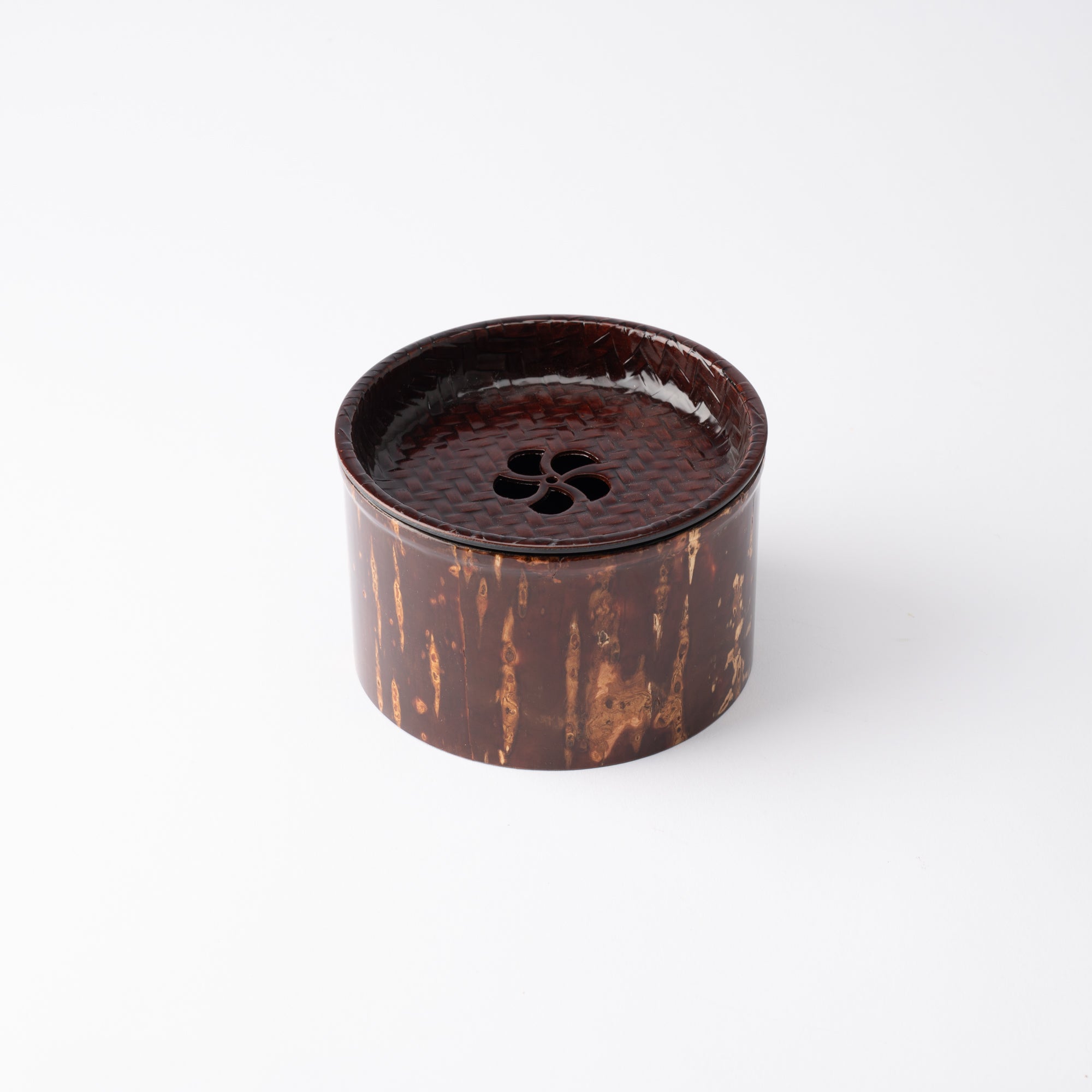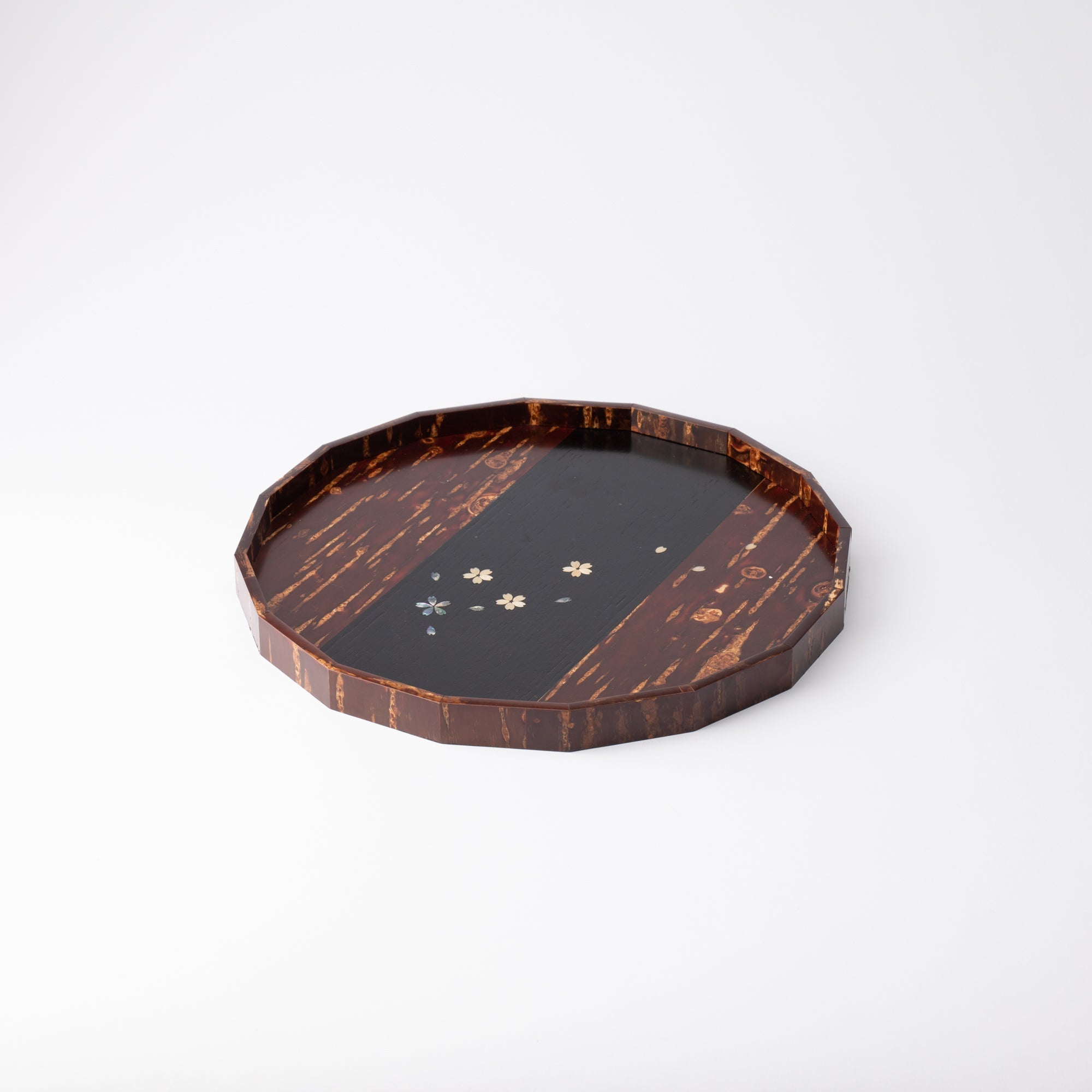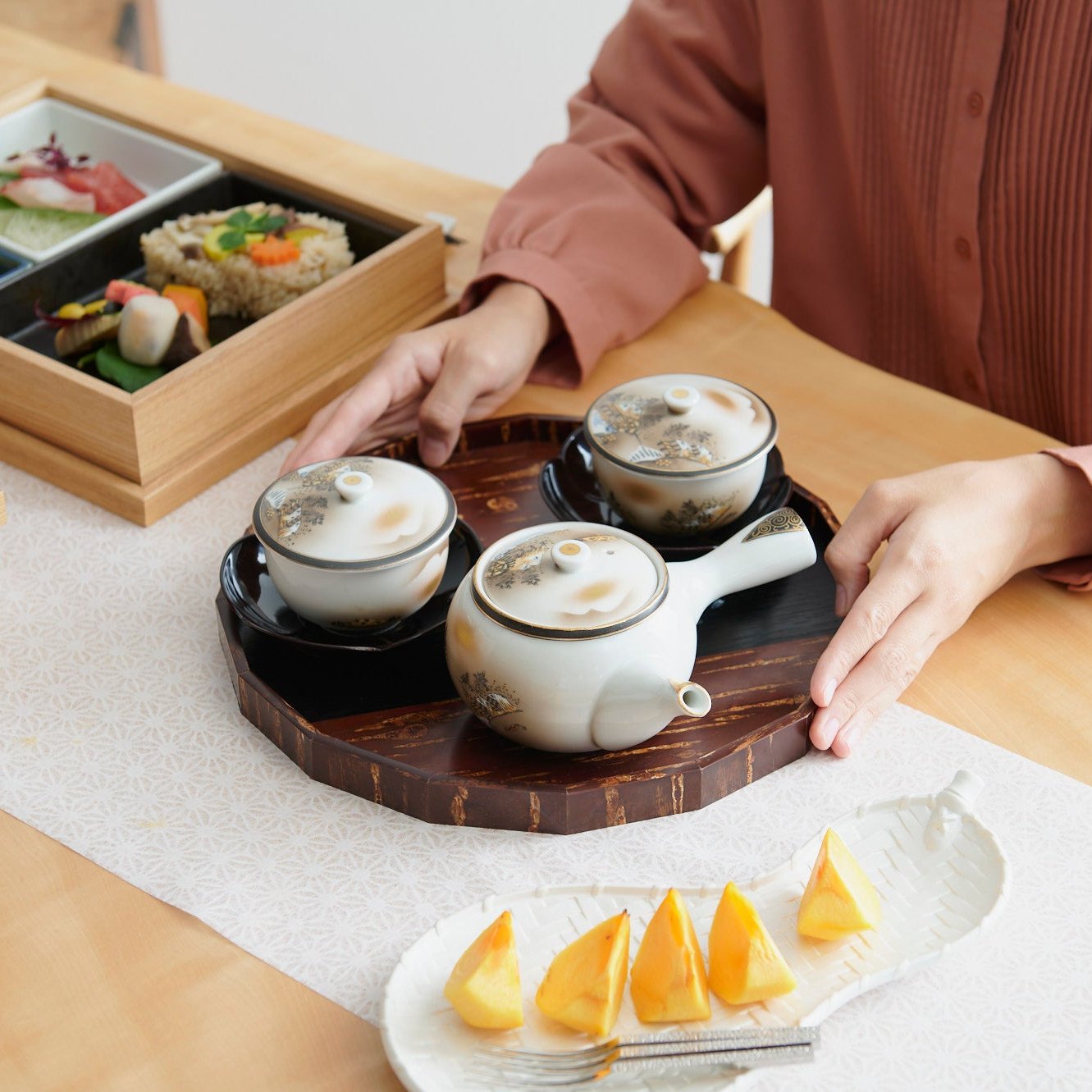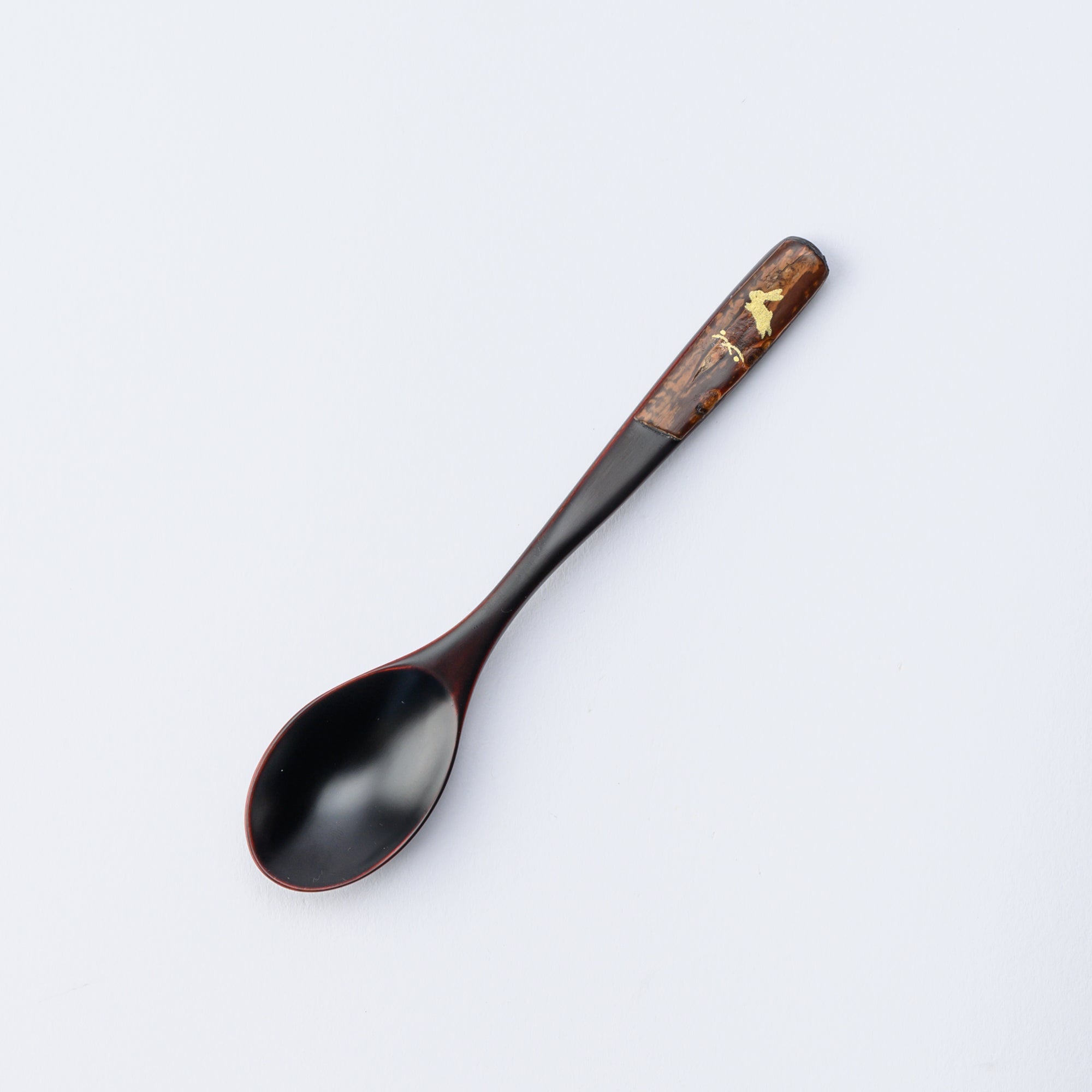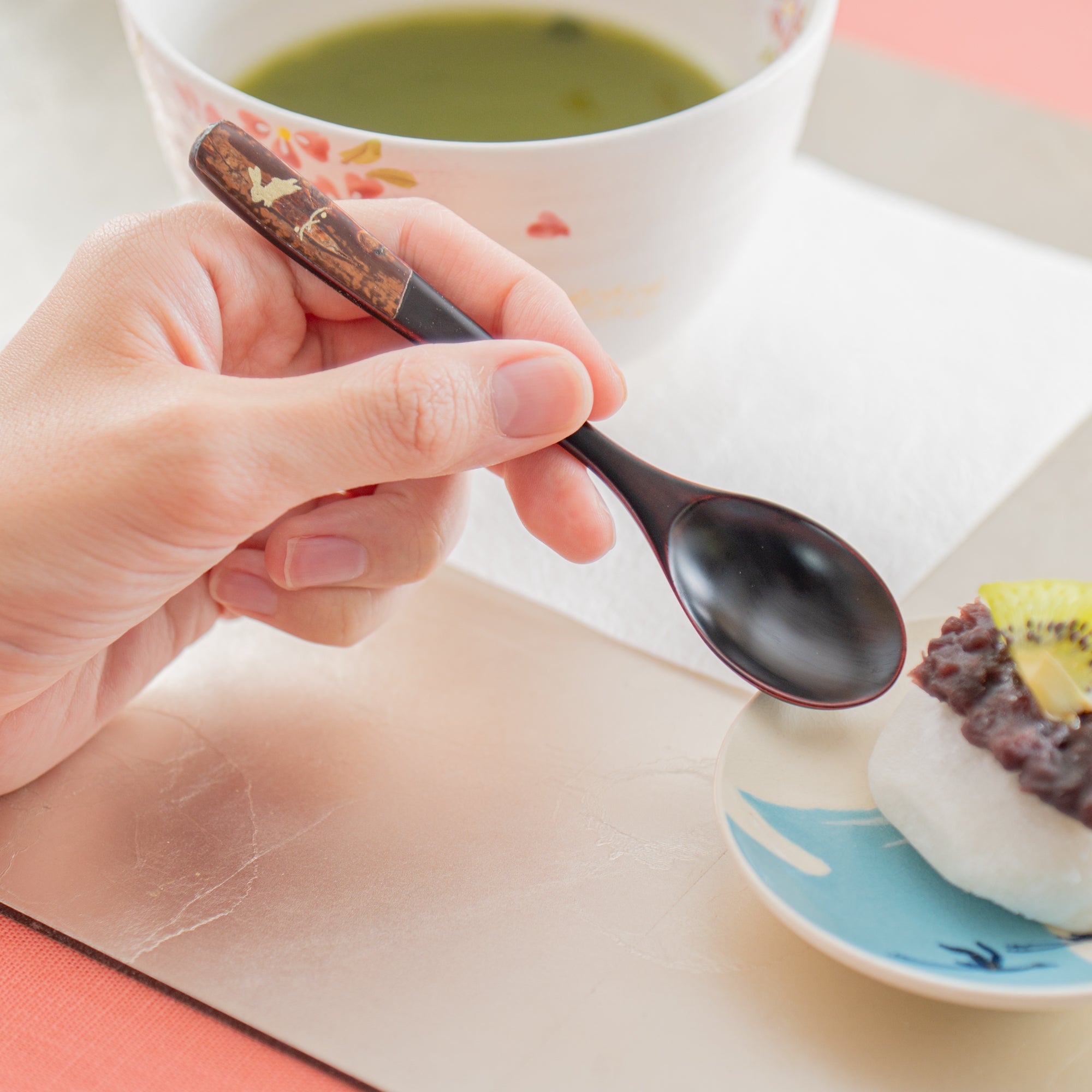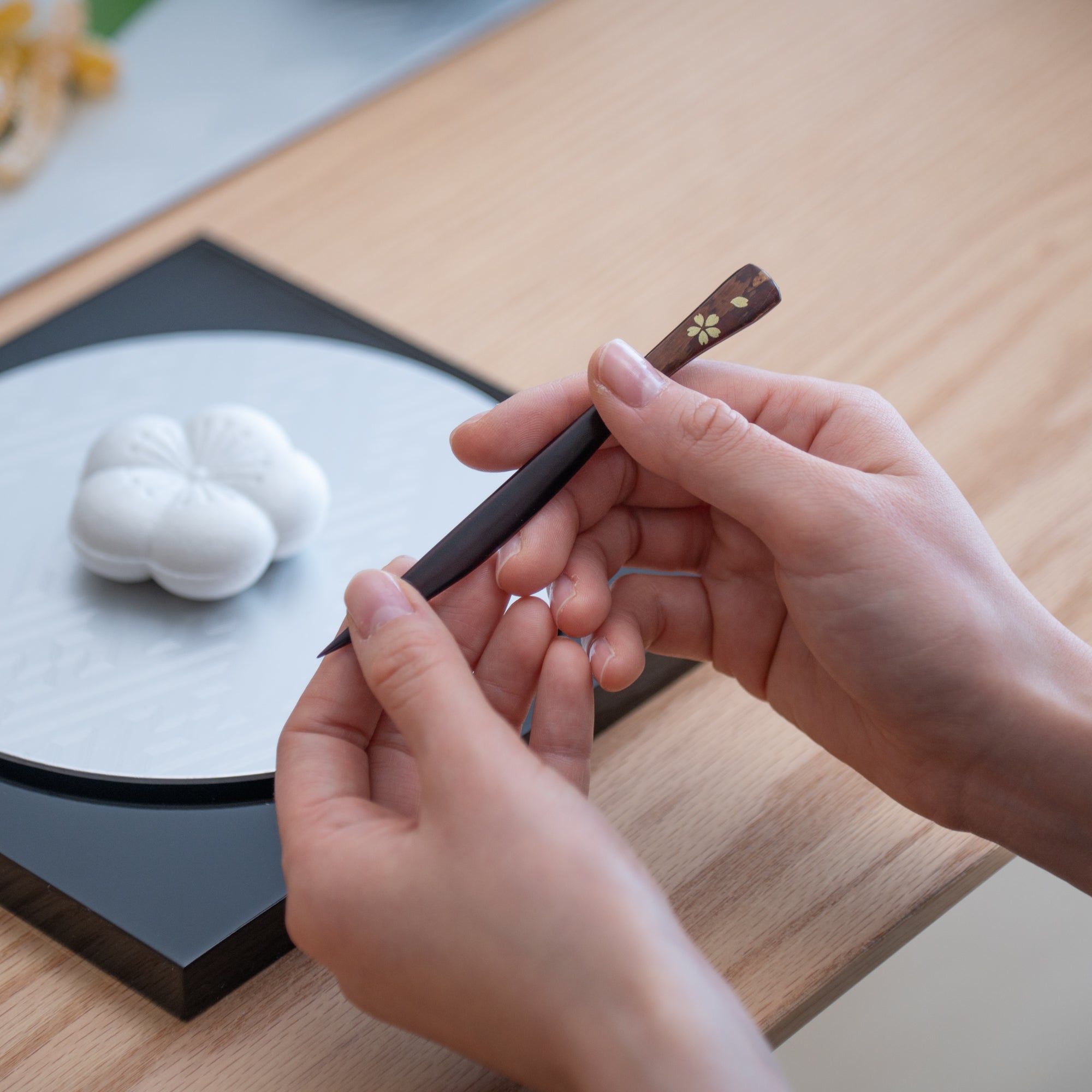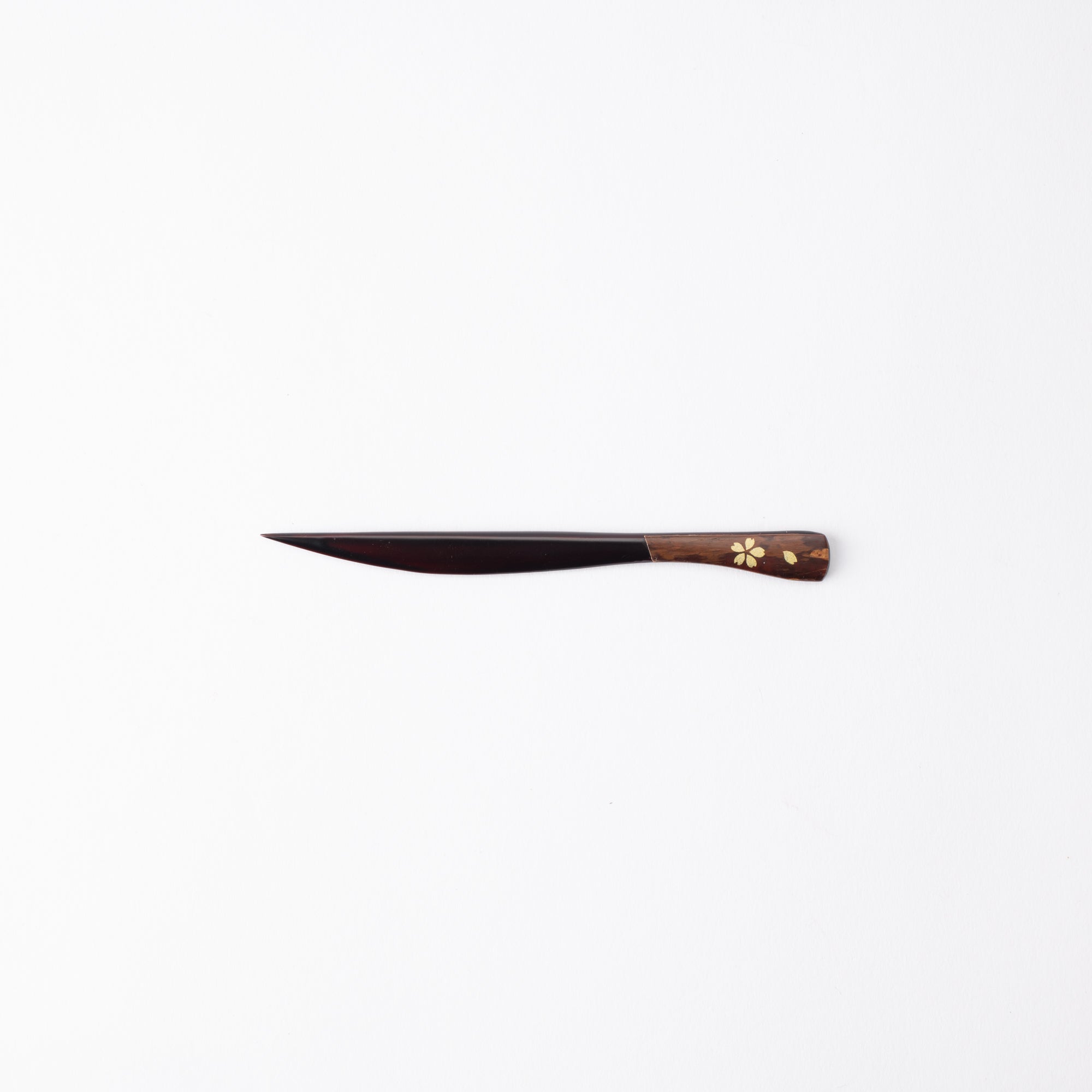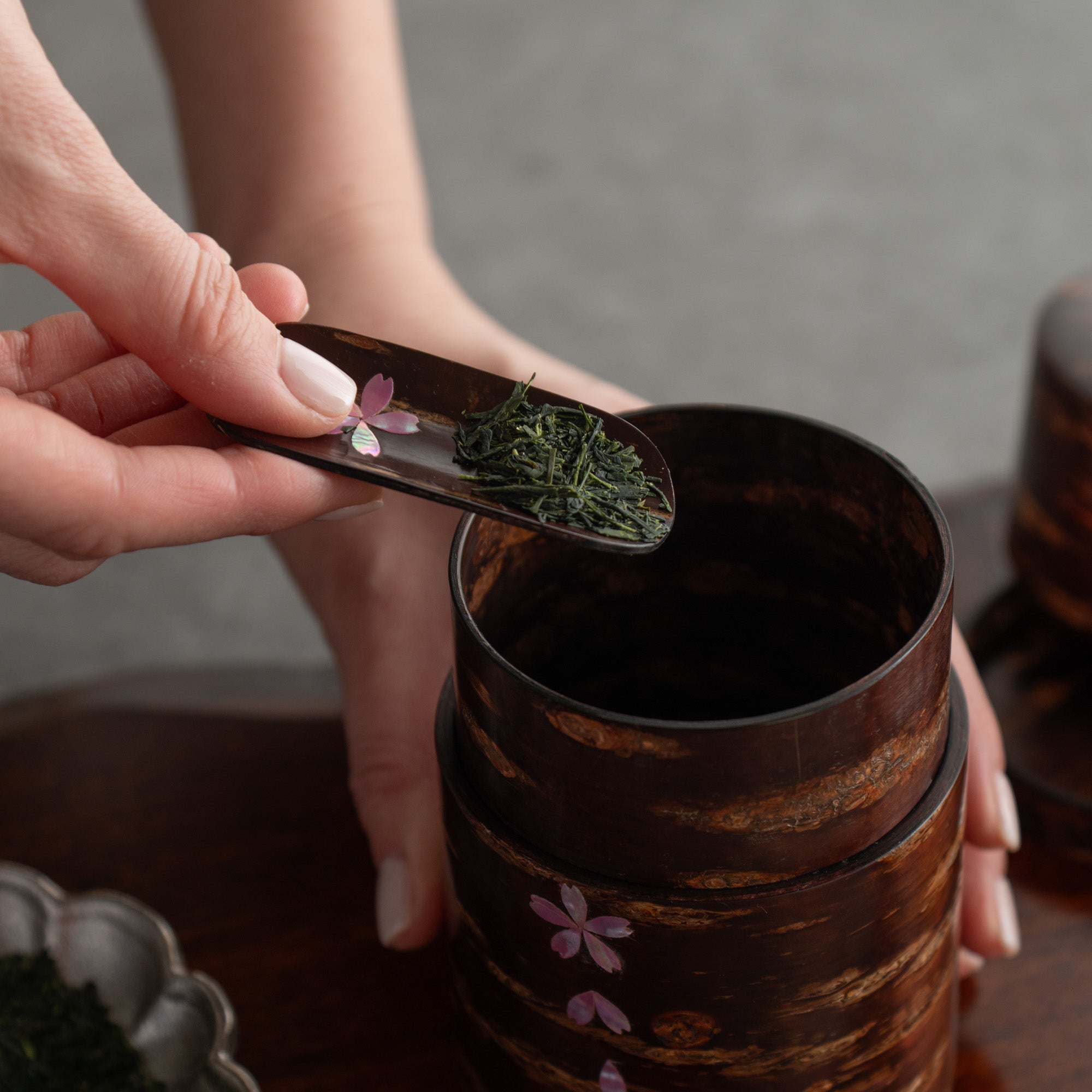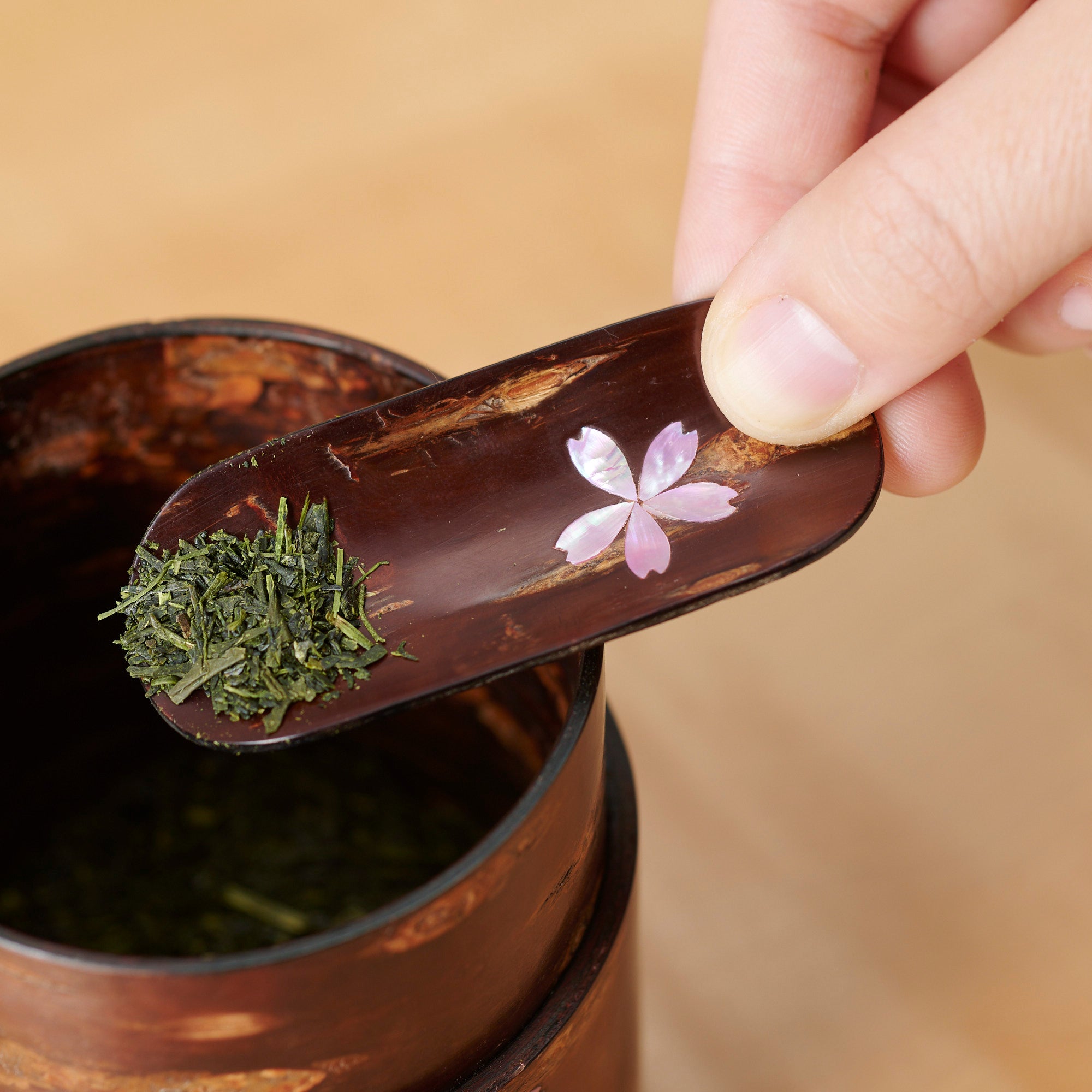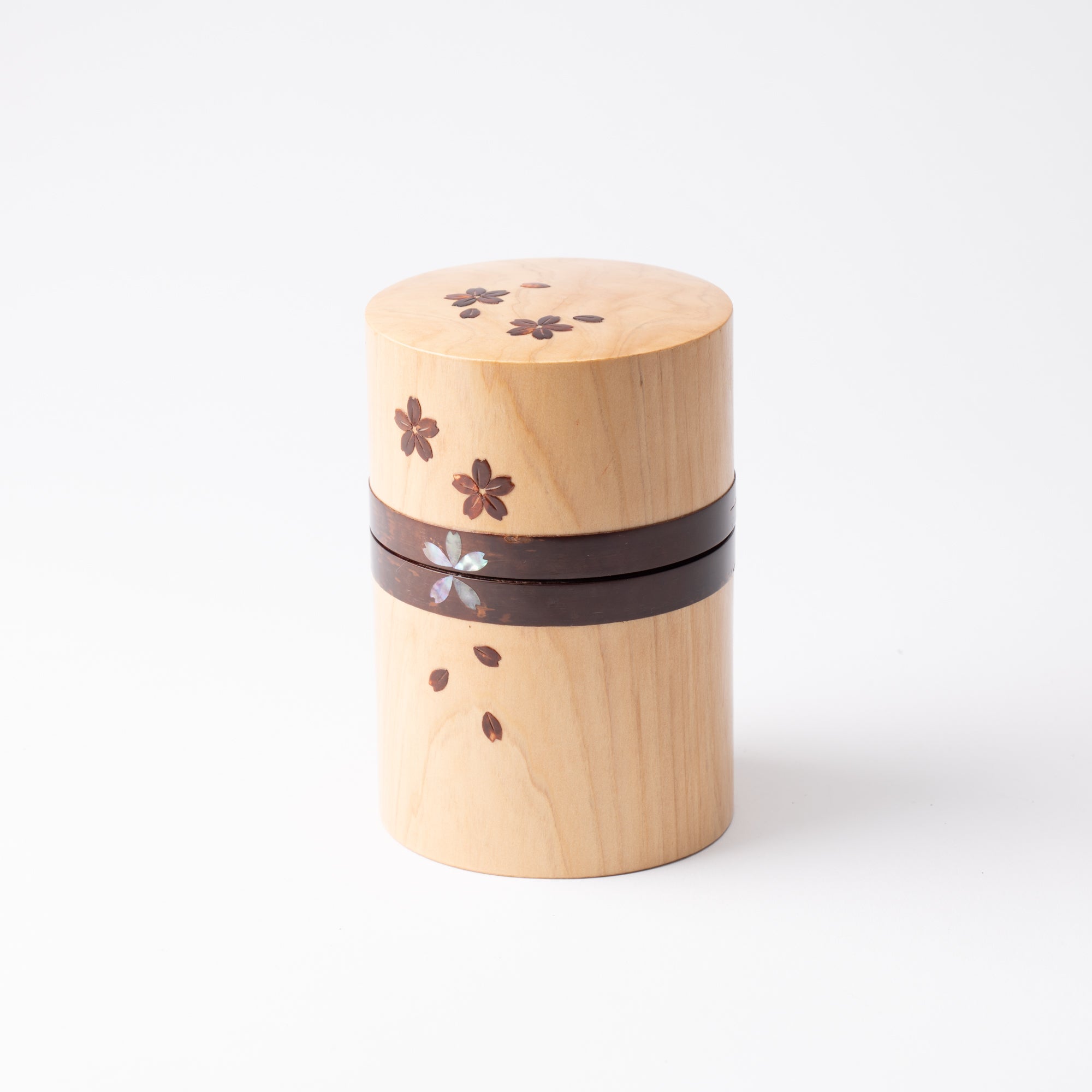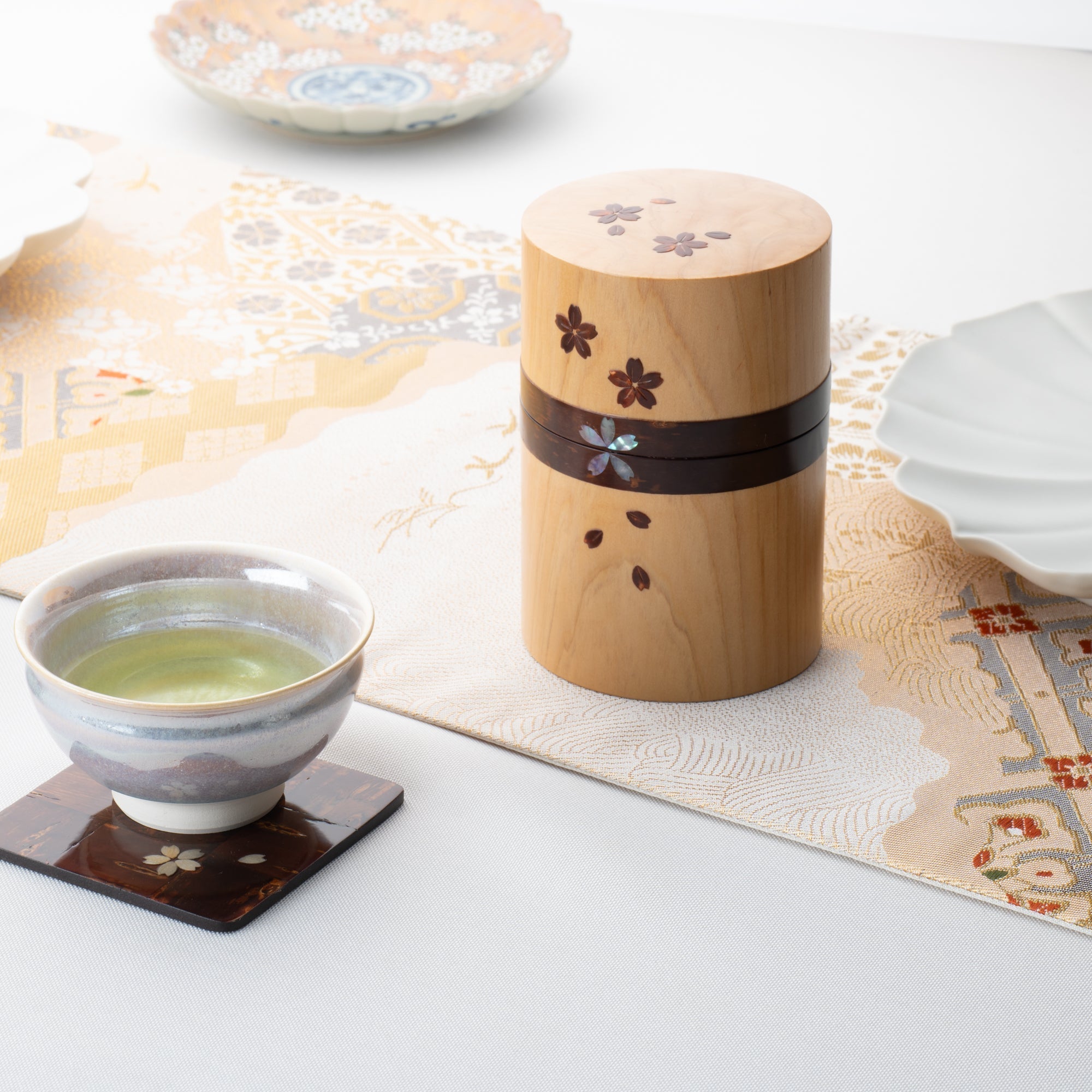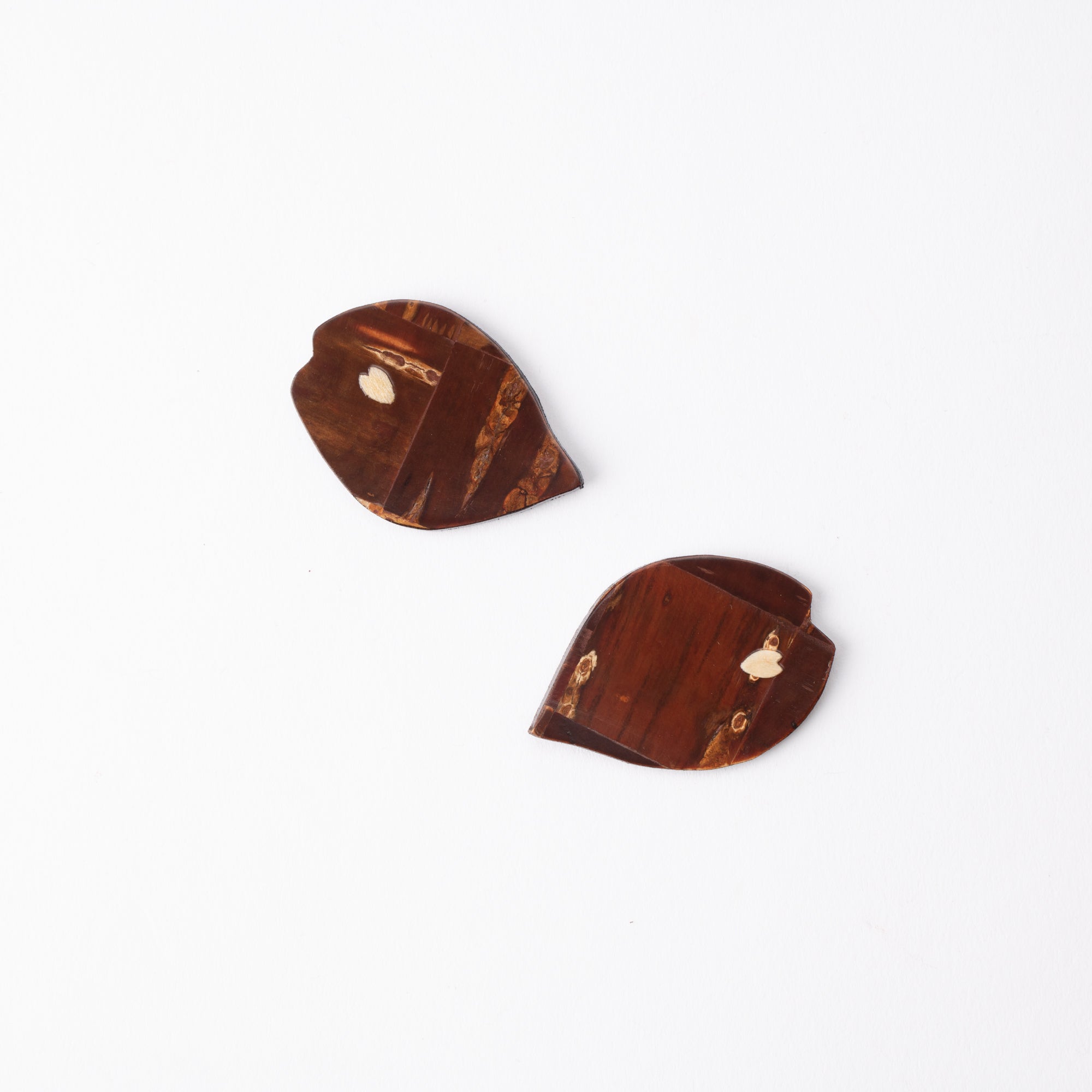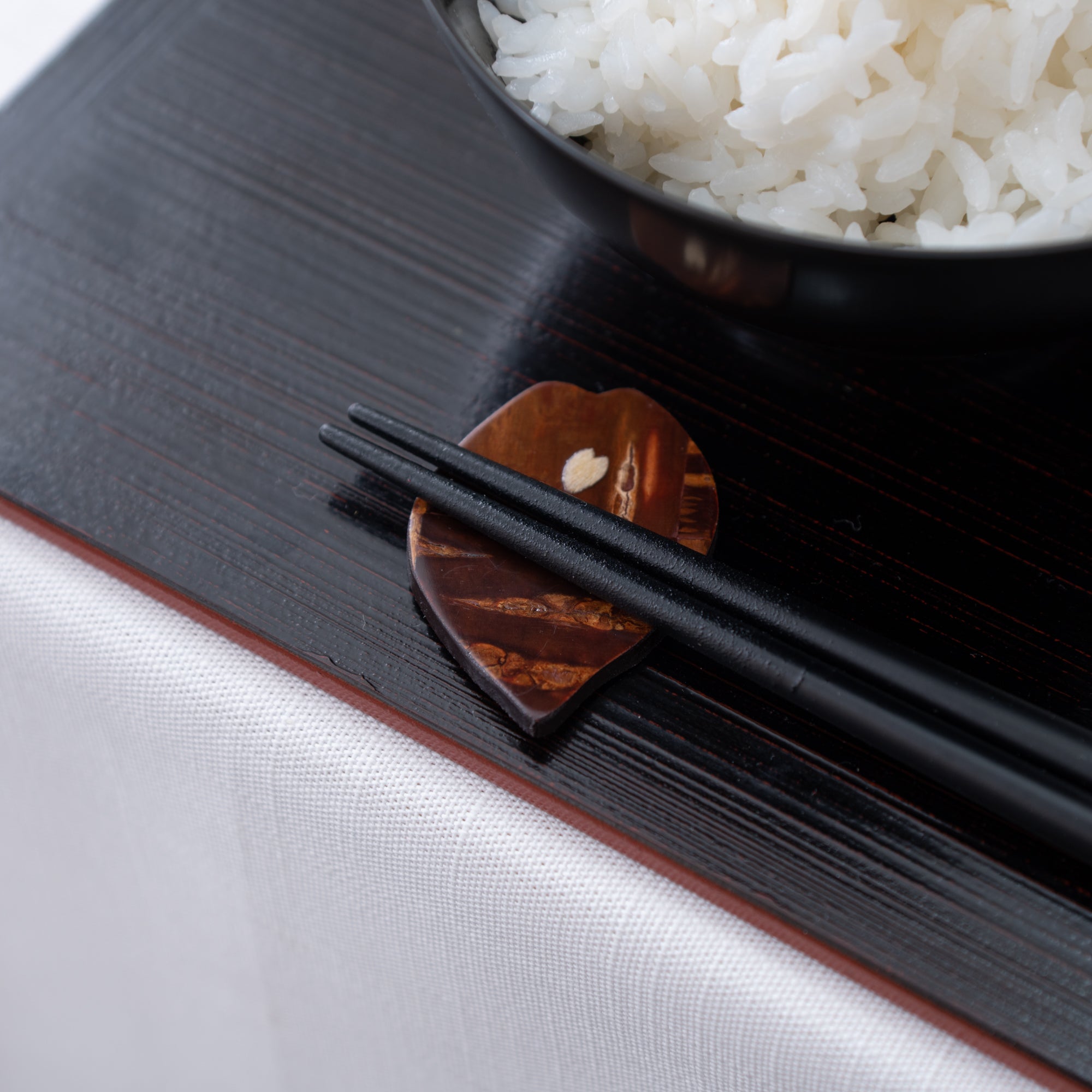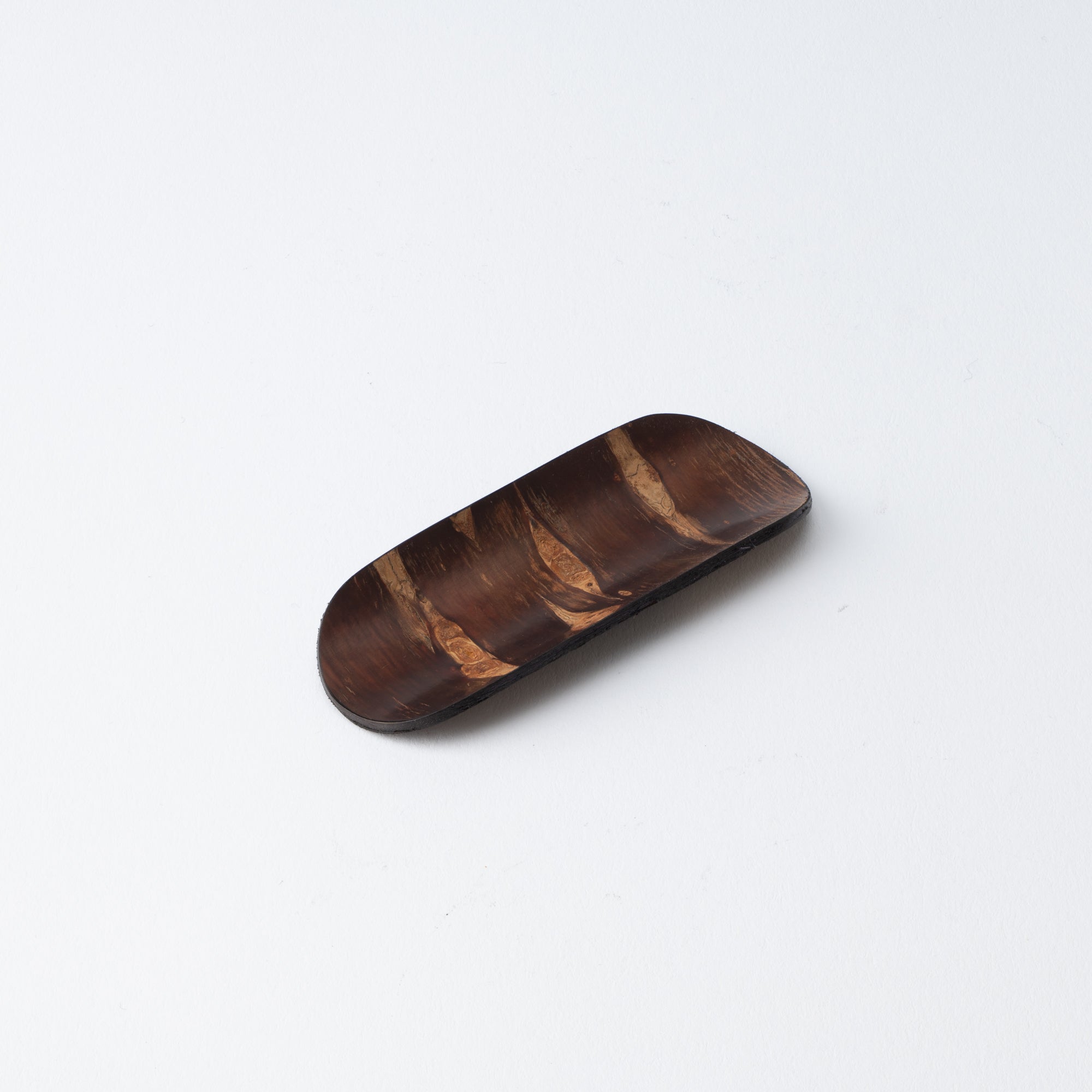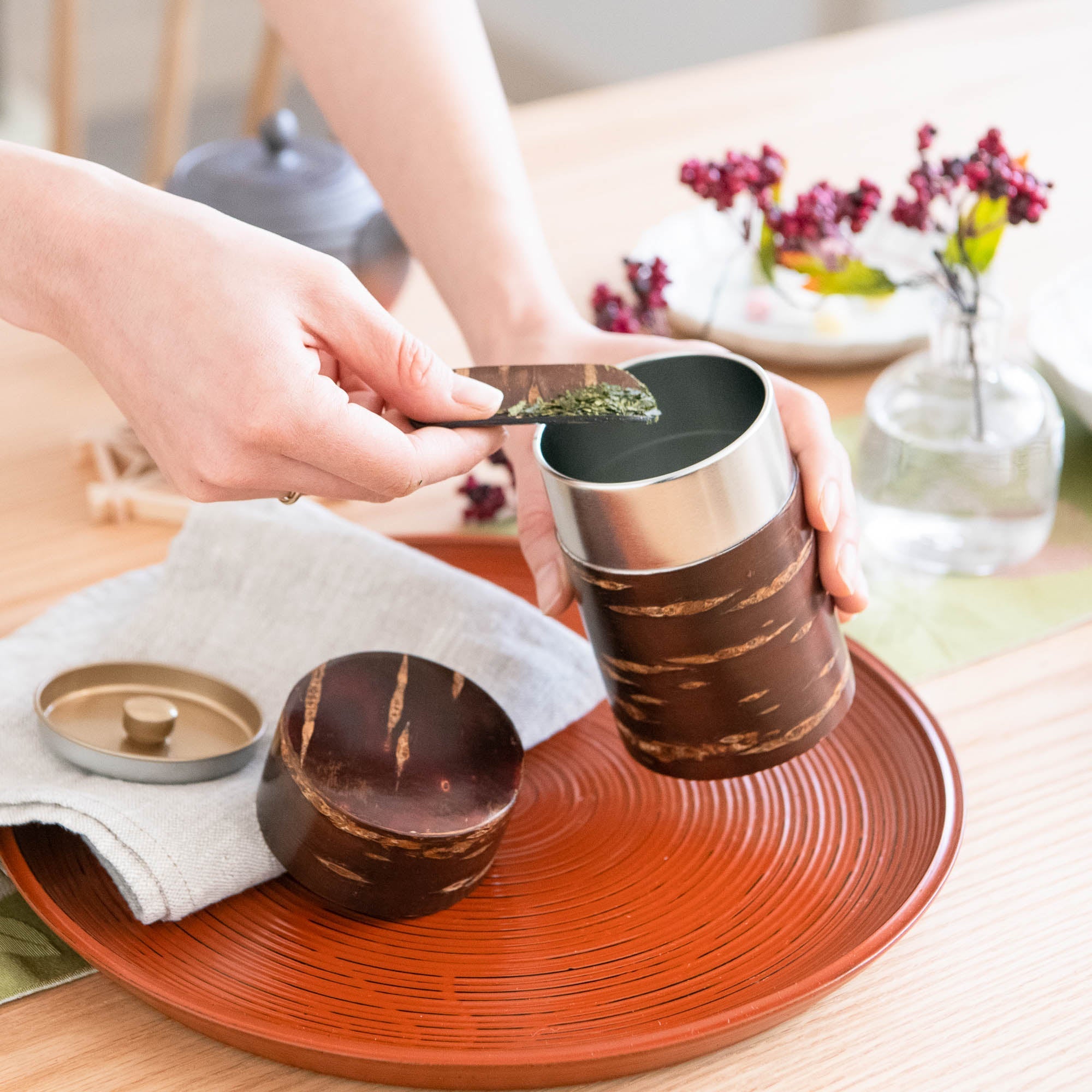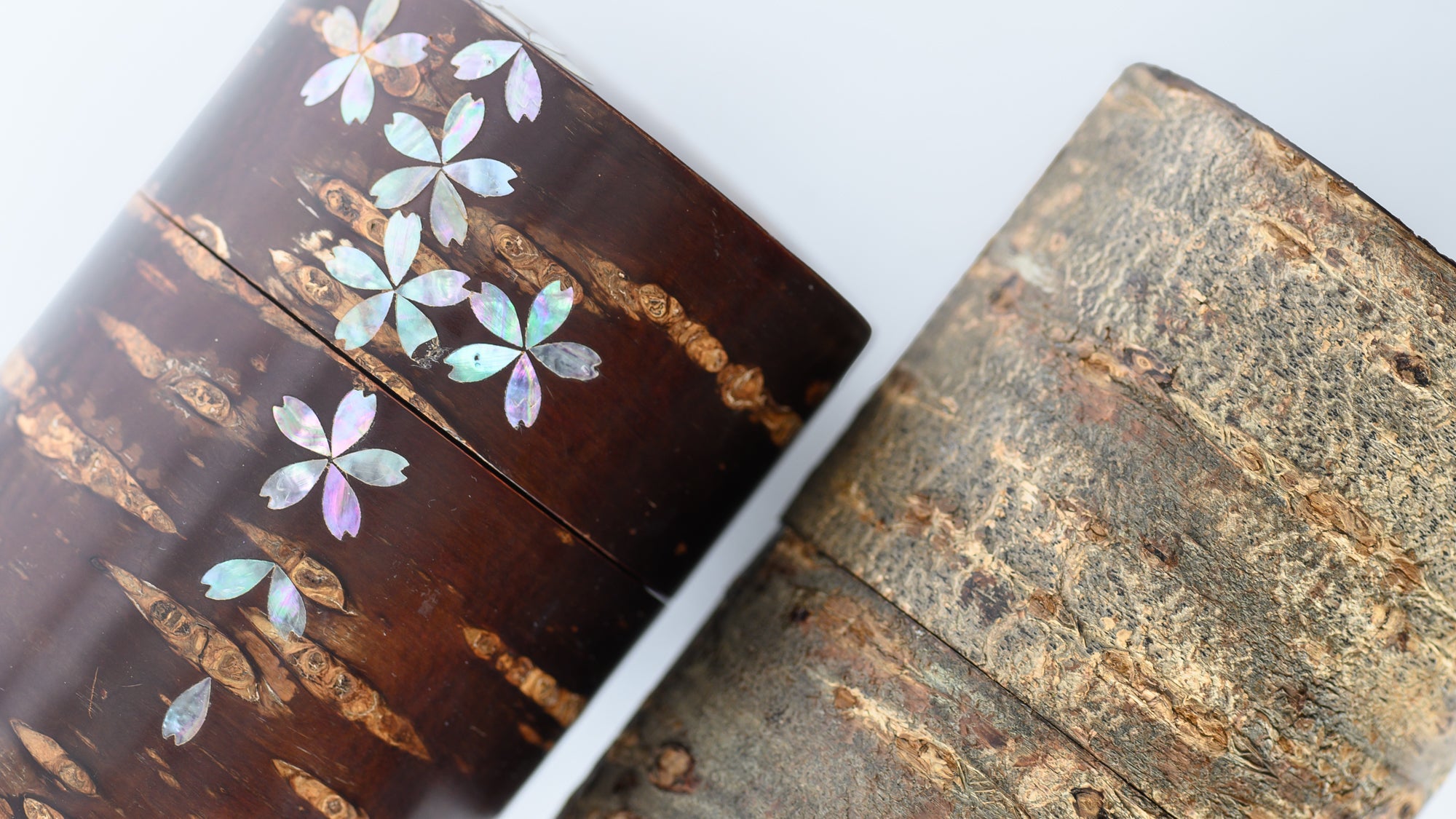
Kabazaiku Cherry Bark Work
Kabazaiku is a craft made in Akita Prefecture, in northern Japan, from the bark of yamazakura, or “Japanese mountain cherry.” The captivating silk or metal-like luster unique to cherry tree bark, combined with its deep color, is used to create pieces of unparalleled beauty. This traditional Japanese craft has a history spanning about 250 years.
Kabazaiku is known for its robust durability and excellent moisture control, effectively managing both humidity and dryness.
The elegant luster and simple beauty of cherry bark patterns make it a favored material for tea canisters, trays, and other tea ware. Tea canisters are especially prized bysencha“green tea” lovers for their ability to preserve the aroma and flavor of the tea leaves.
Kabazaiku involves three primary techniques:katamono, kijimono, and tatamimono. Katamono is a technique for making cylindrical products such as tea canisters. In this method, paper-thin sheets of wood and bark are wrapped around a cylindrical wooden mold and then pasted together while being held down with a hot metal trowel. Kijimono is a technique used to create box-shaped products, such as letter boxes and trays, by carefully applying bark to a wooden base. Tatamimono involves layering polished bark to create a thicker material, which is then intricately carved.
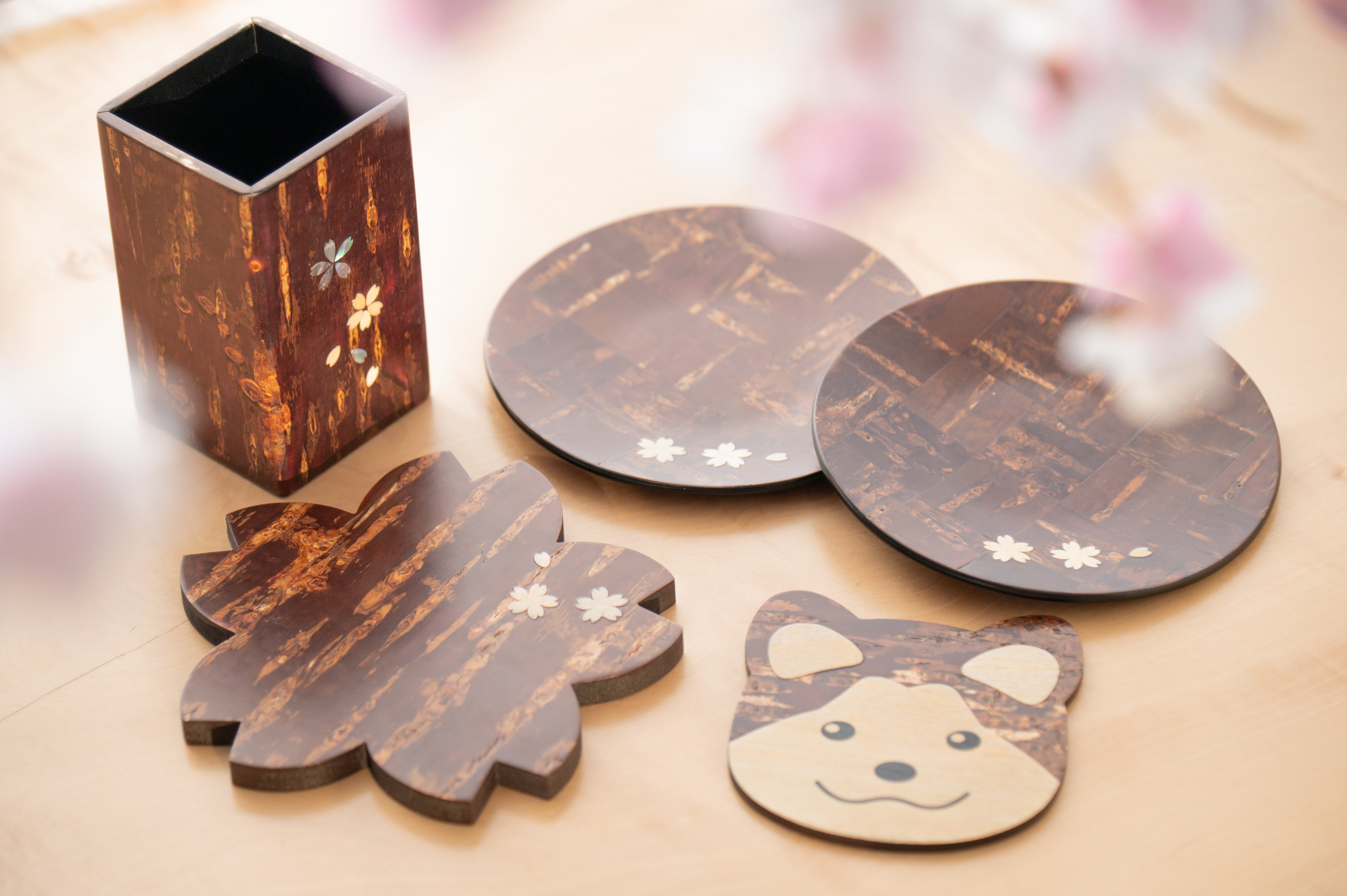
History
Kabazaiku is believed to have begun in the 1780s when a Shugendo practitioner from the Ani region of northern Akita Prefecture introduced the technique to Kakunodate. Initially developed as a sideline handicraft for samurai, the craft gradually took root as a local industry with the support of local lords, and the beautifully made items became favored souvenirs.
During the Meiji era (1868 CE–1912 CE), many of the samurai who were skilled at the kabazaiku technique transitioned to becoming full-fledged craftsmen. Later, kabazaiku gained recognition during a nationwide folk art movement in Japan. Its techniques were further refined, and in 1976, it was officially recognized as a traditional Japanese craft.
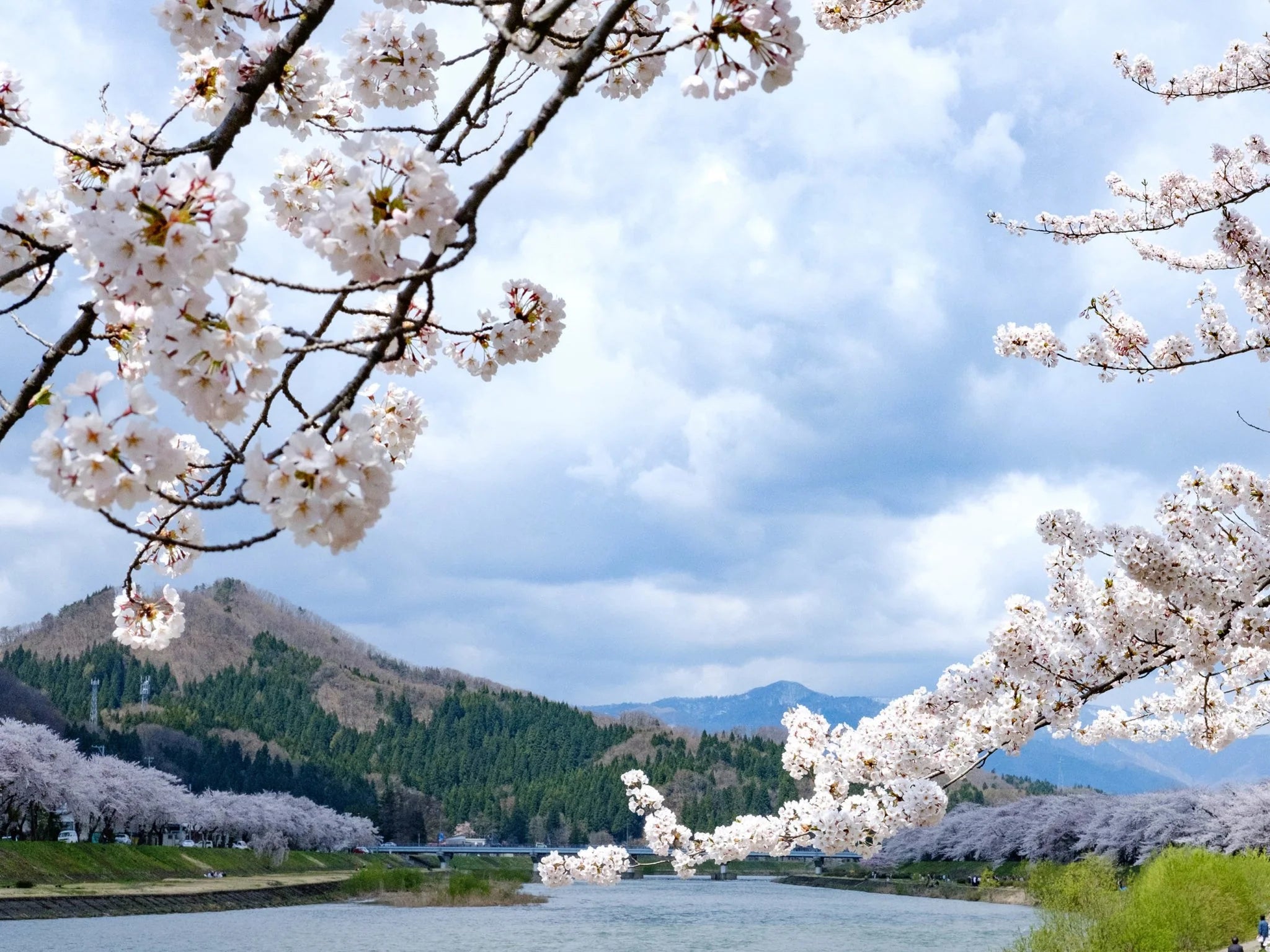
Making Kabazaiku Tea Canisters
To create kabazaiku pieces, artisans adhere to traditional methods, using only natural materials and avoiding synthetic adhesives. The process is intricate, with several key steps involved in crafting a kabazaiku tea canister. However, as the number of artisans dwindles and unpredictable weather patterns impact the harvest, the collection of cherry bark is declining. This has led to an increasing scarcity of these handcrafted pieces each year.
1. Preparation
In the summer, when the trees have a high moisture content, the bark of the cherry tree is carefully stripped off. This process is carried out carefully to ensure the cherry trees remain alive and their bark can regenerate. The stripped bark is left to dry for two years.
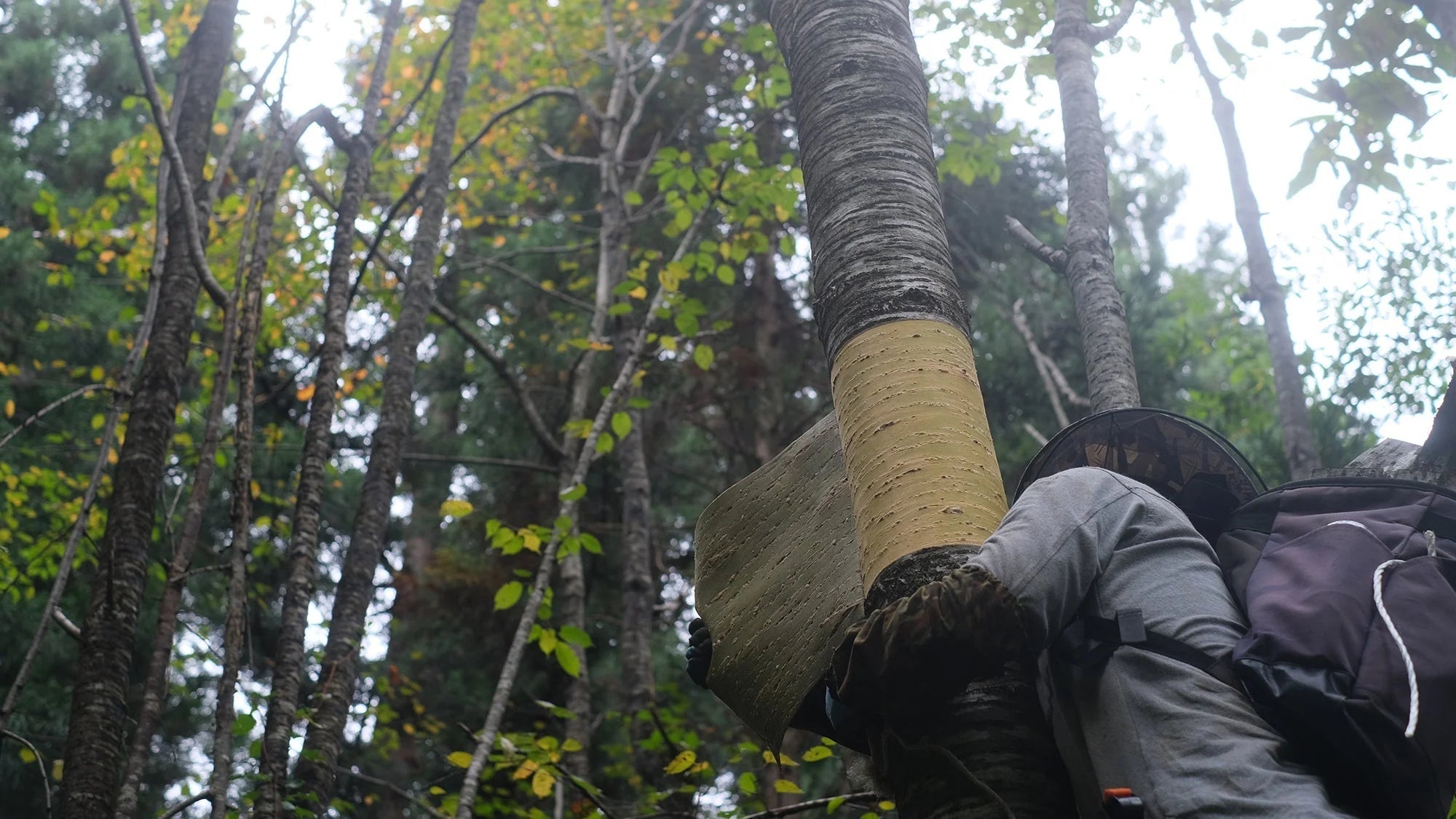
2. Processing
The dried bark is moistened with water and then stretched using a hot iron to remove any distortions. It is then thinly shaved with a knife to impart a unique, silk-like, or metallic luster. Next, a natural glue called nikawa is applied to the surface and left to dry.

3. Pasting
Nikawaglue is applied to a cylindrical wooden mold, and the bark is carefully adhered to it. A heated iron is skillfully used to ensure the bark does not get burned or wrinkled. After the top and bottom parts are attached, the edges are smoothed using a small knife or woodworking plane.
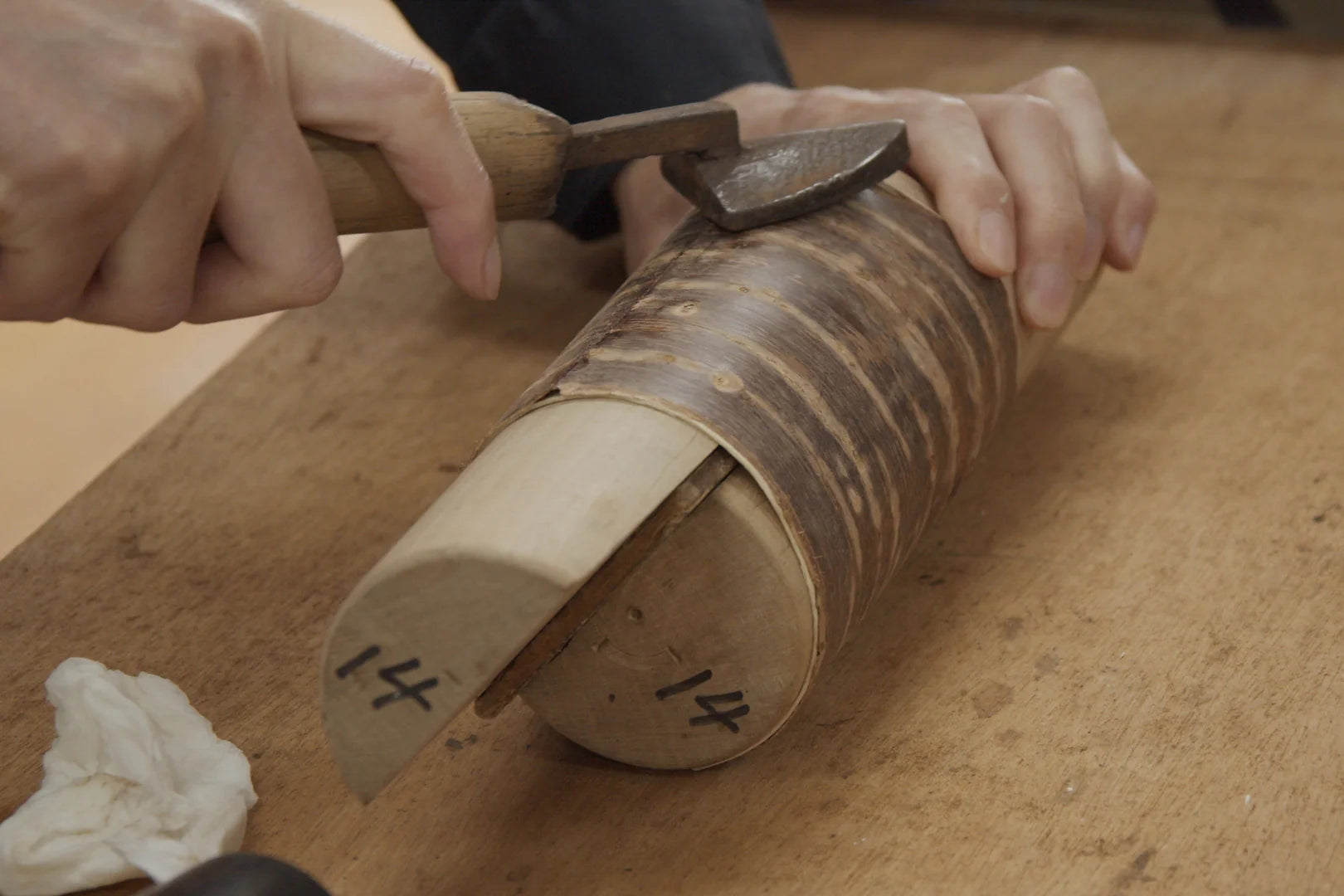
4. Finishing
The piece is polished in several stages usingtokusa, a fern native to the northeastern region of Japan. Finally, a small amount ofbintsuke, a traditional Japanese oil made from wax and rapeseed oil, is applied and the piece is polished with a cloth to complete the crafting process.
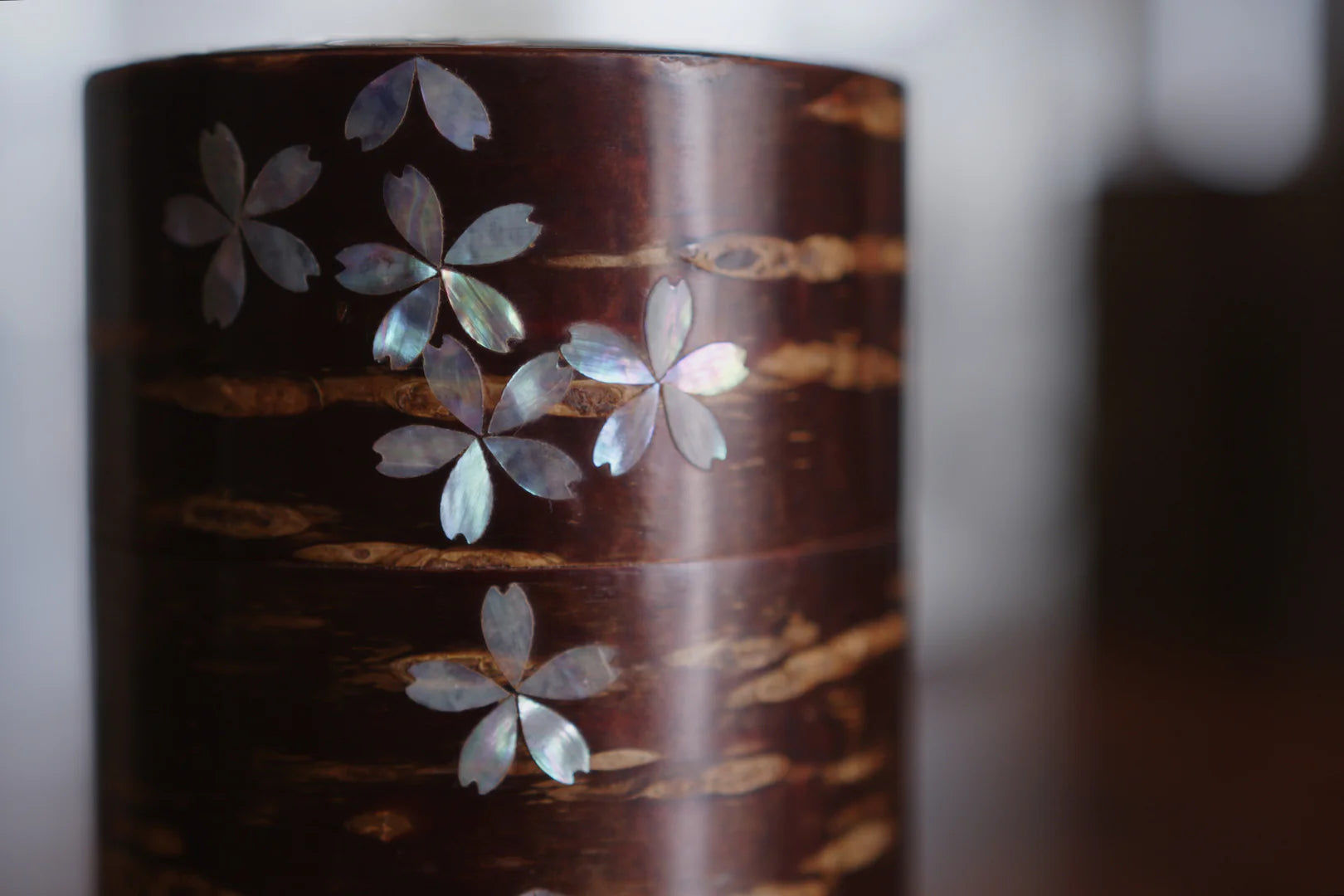
Makers
Related posts
Filters


